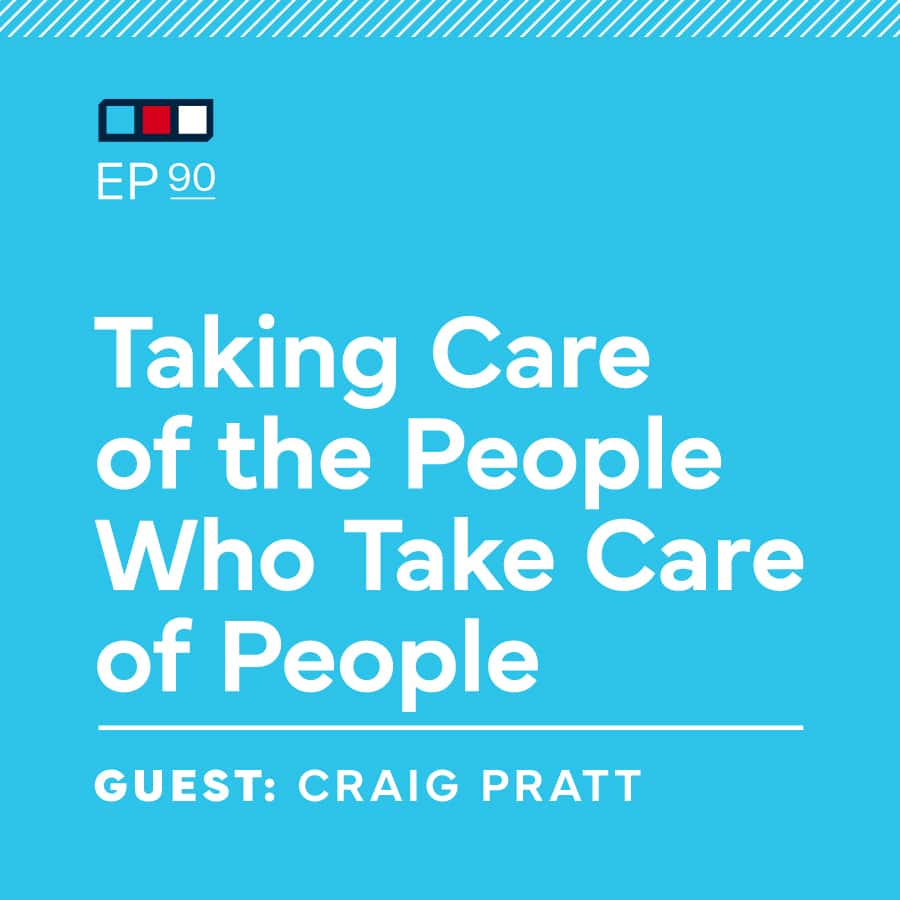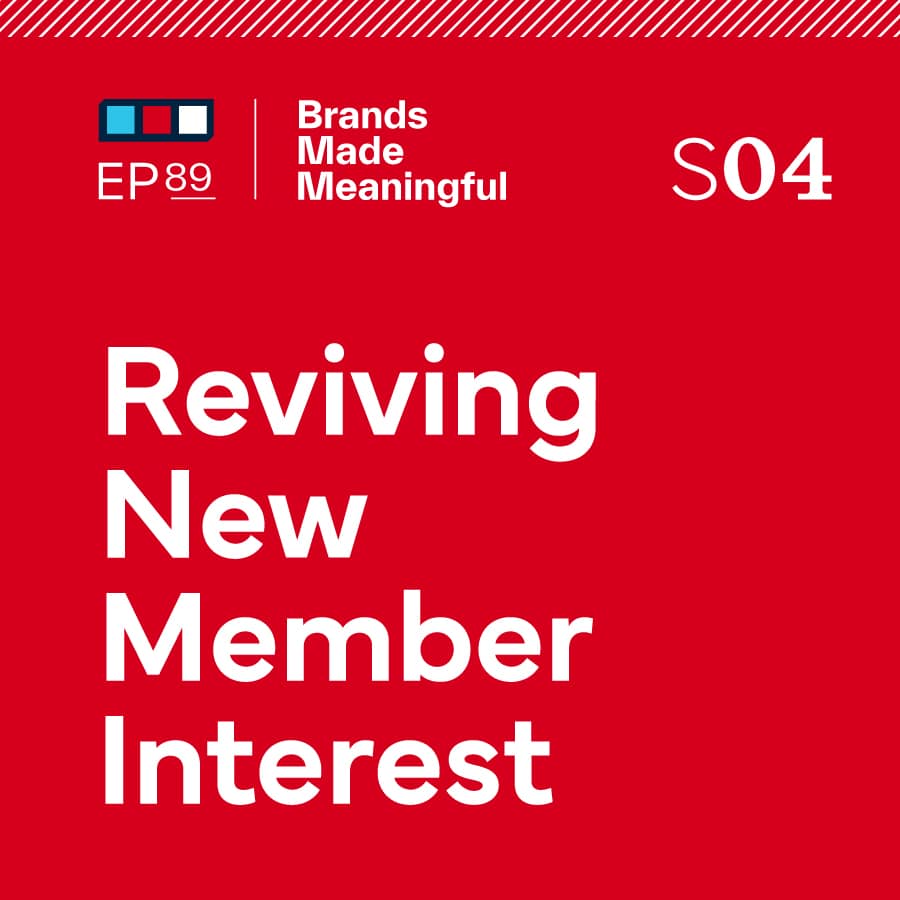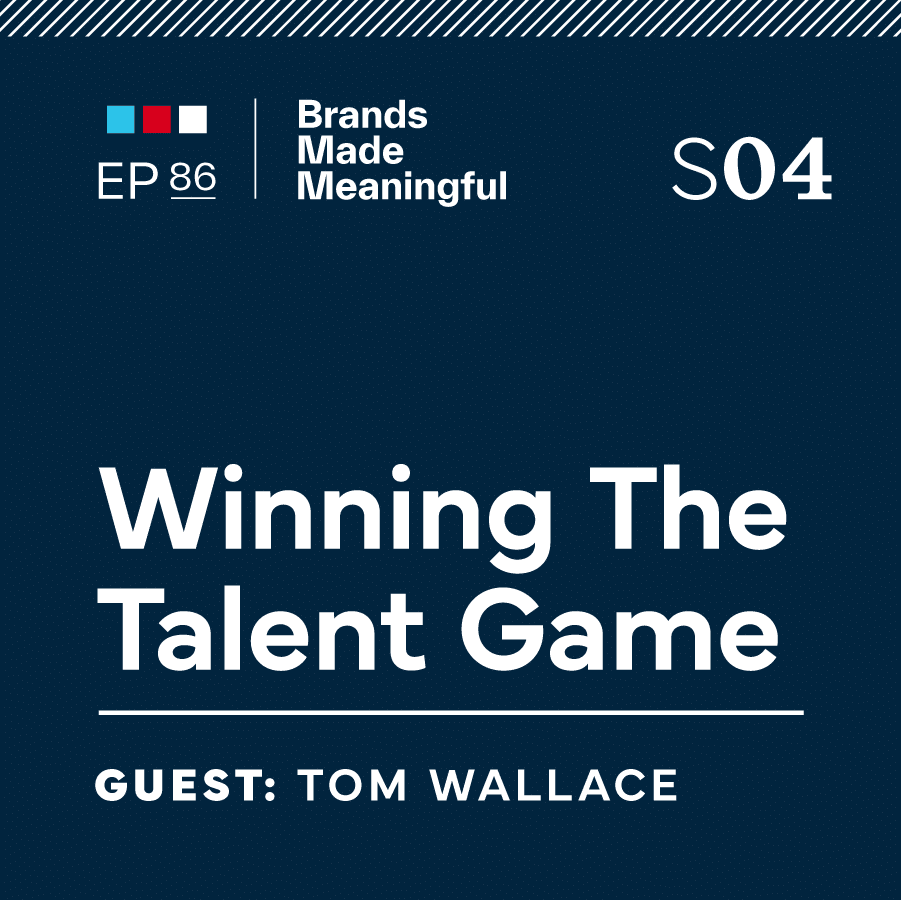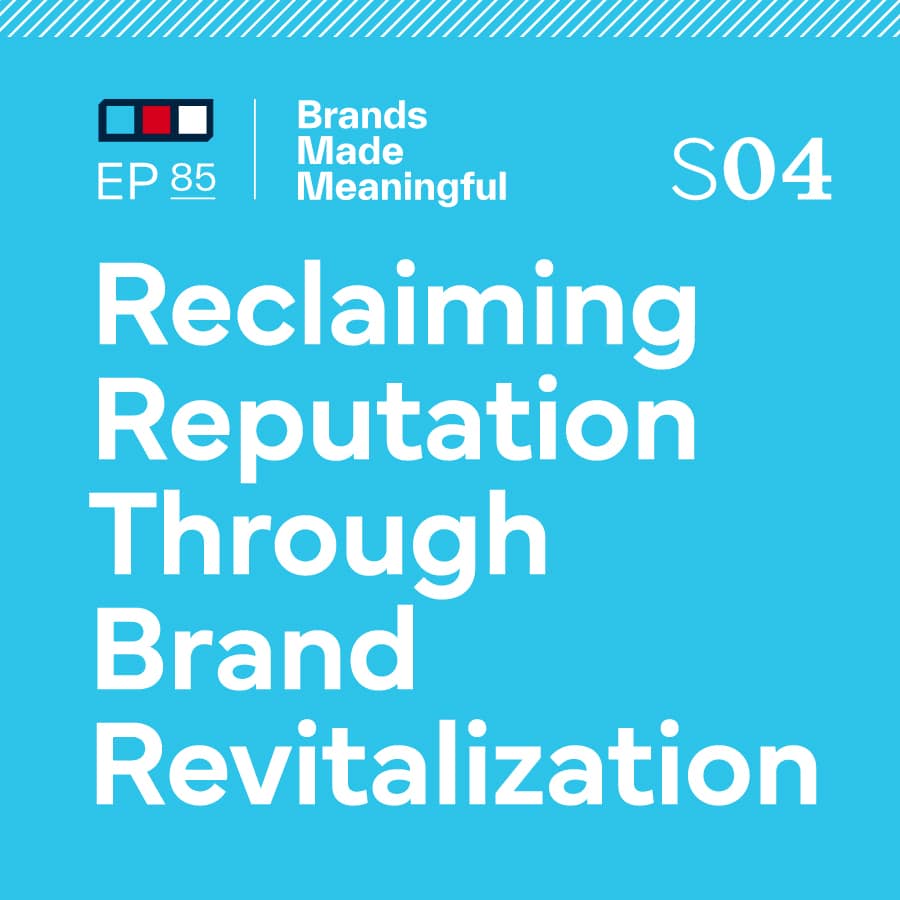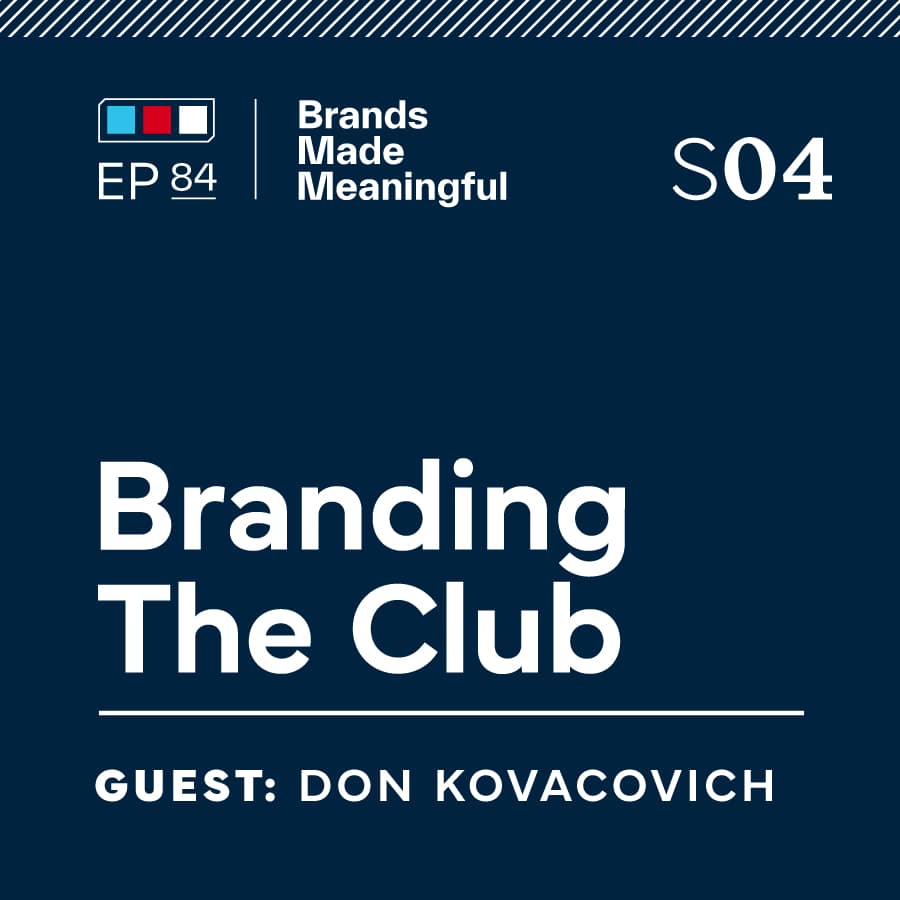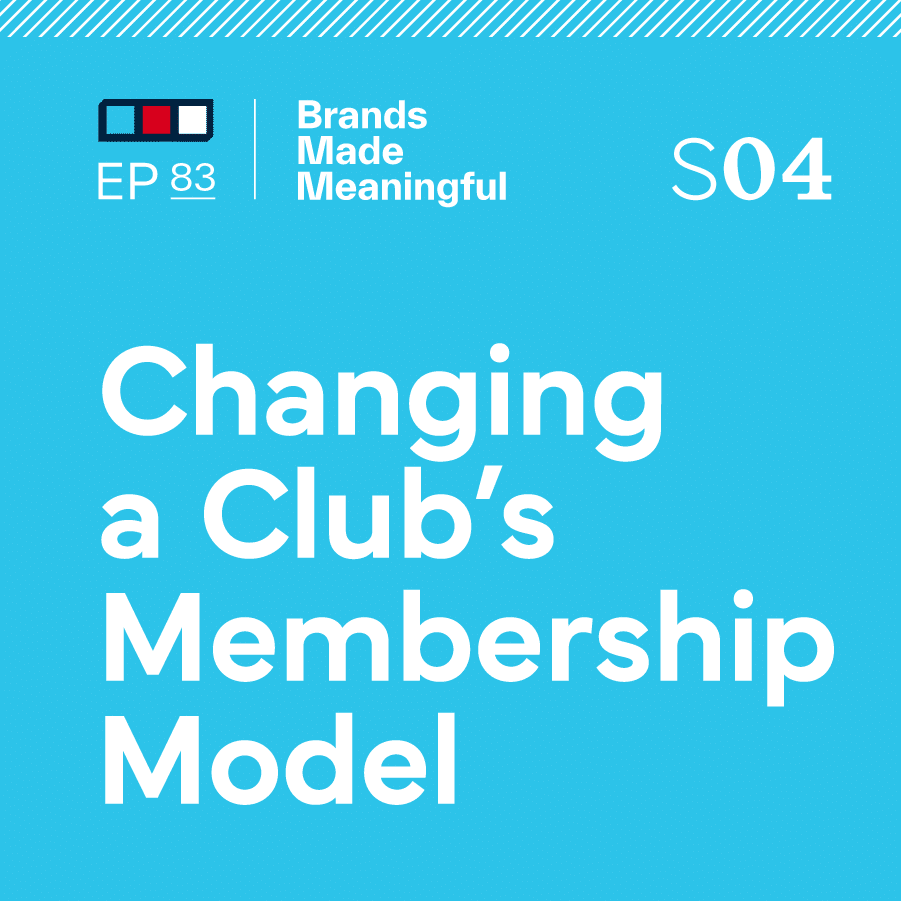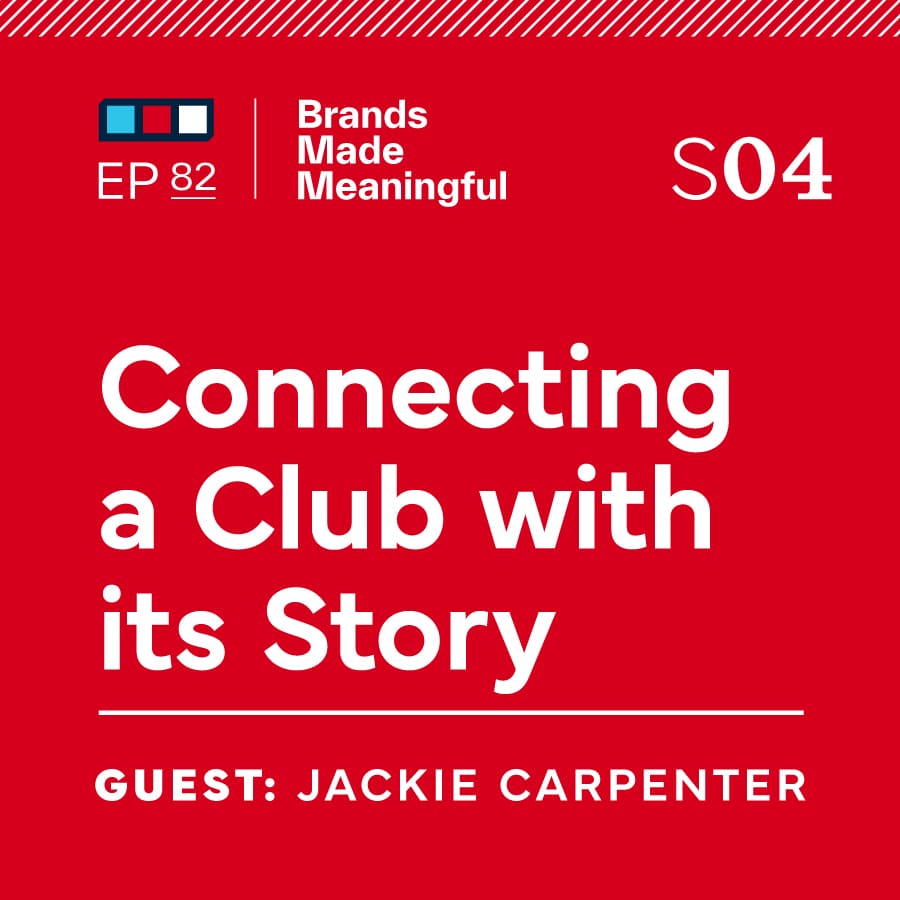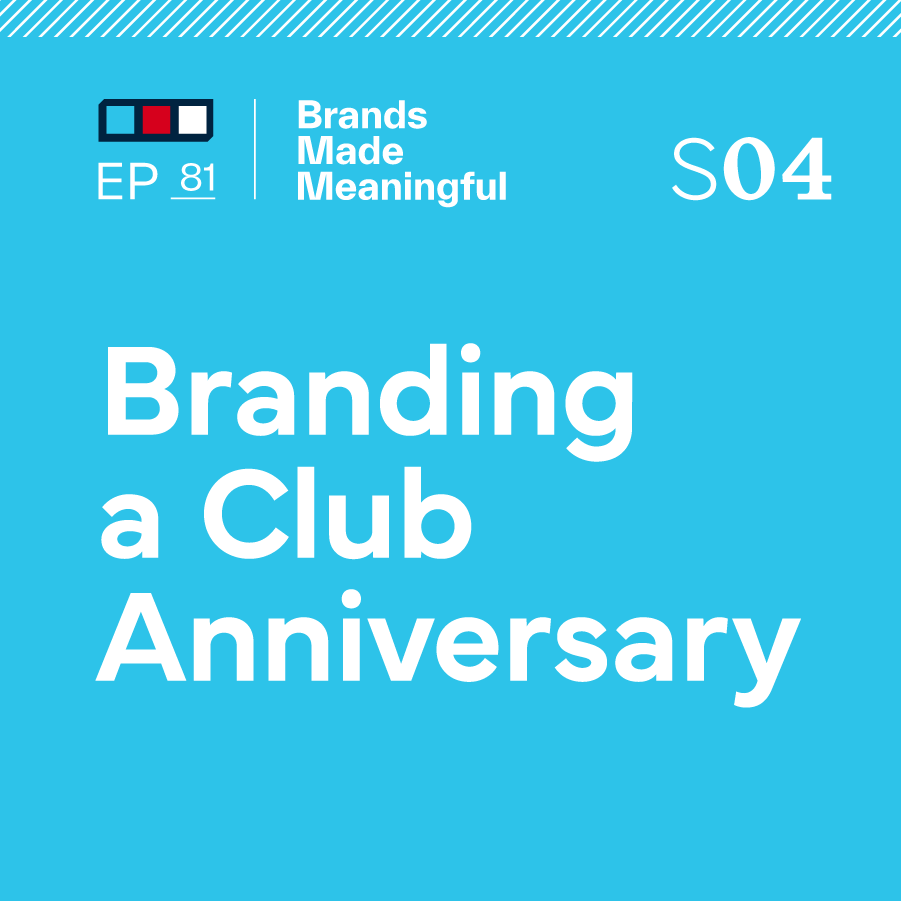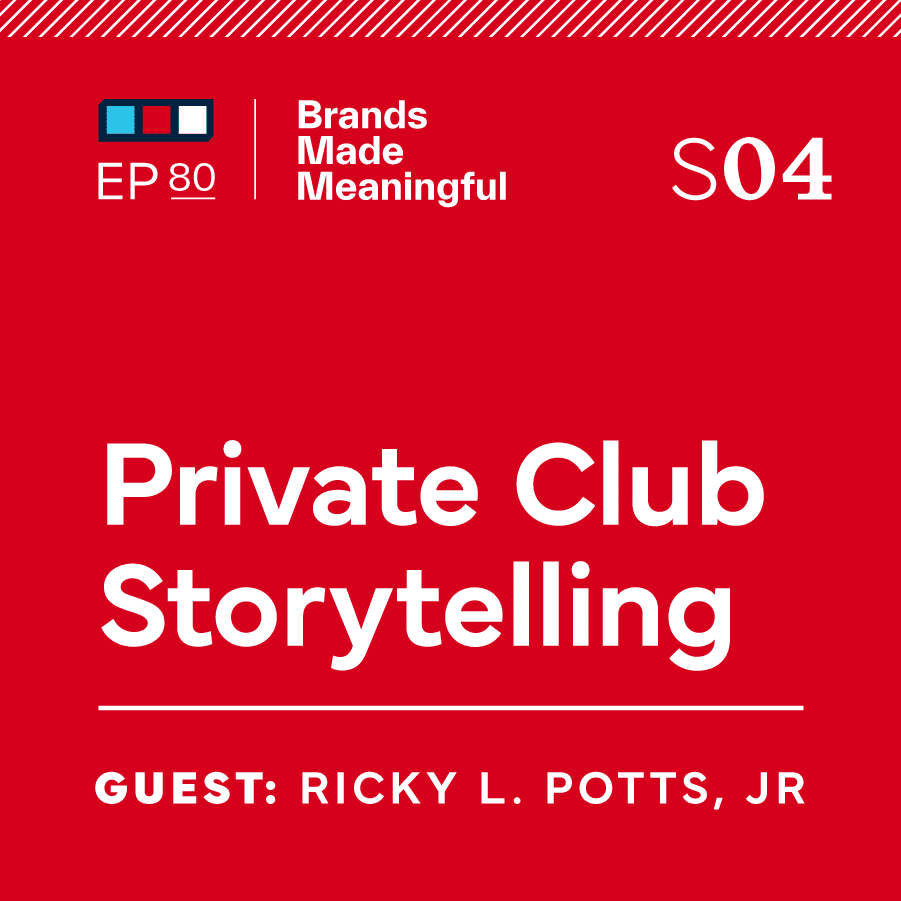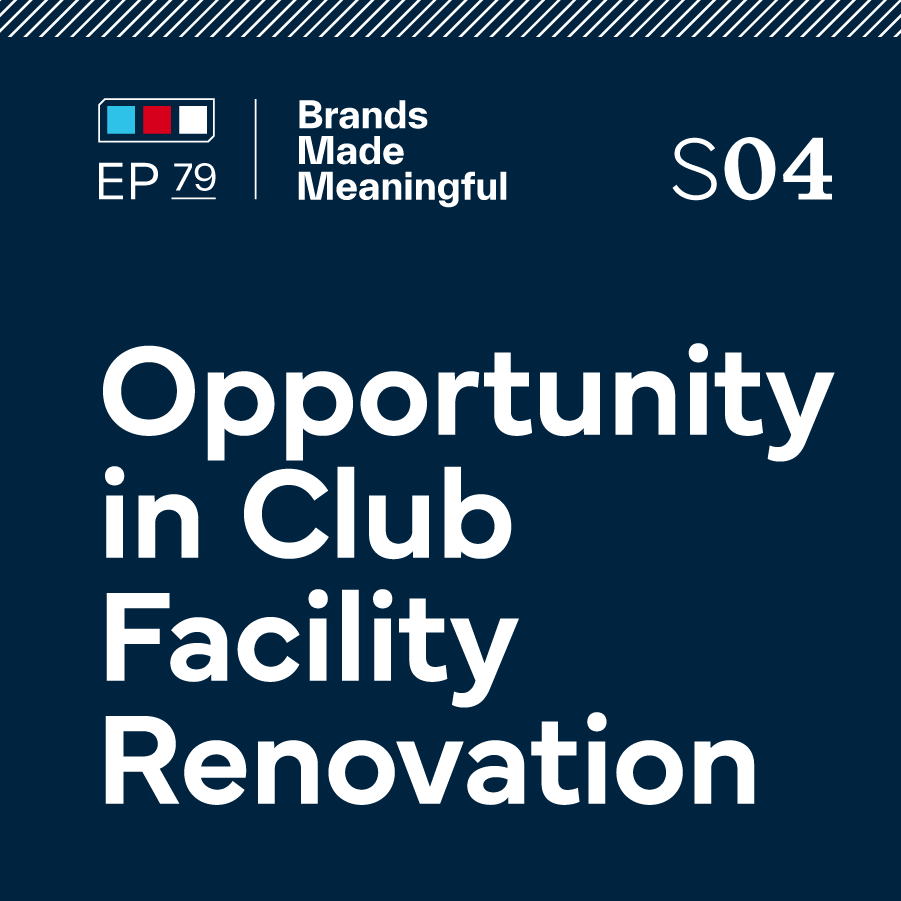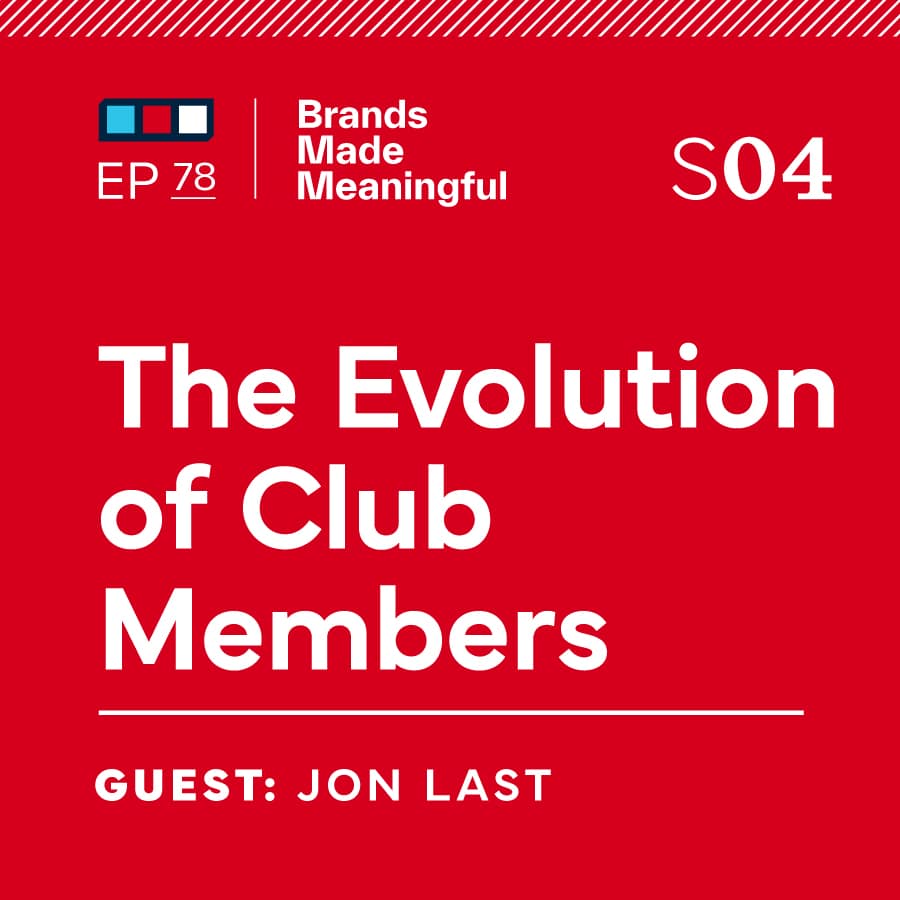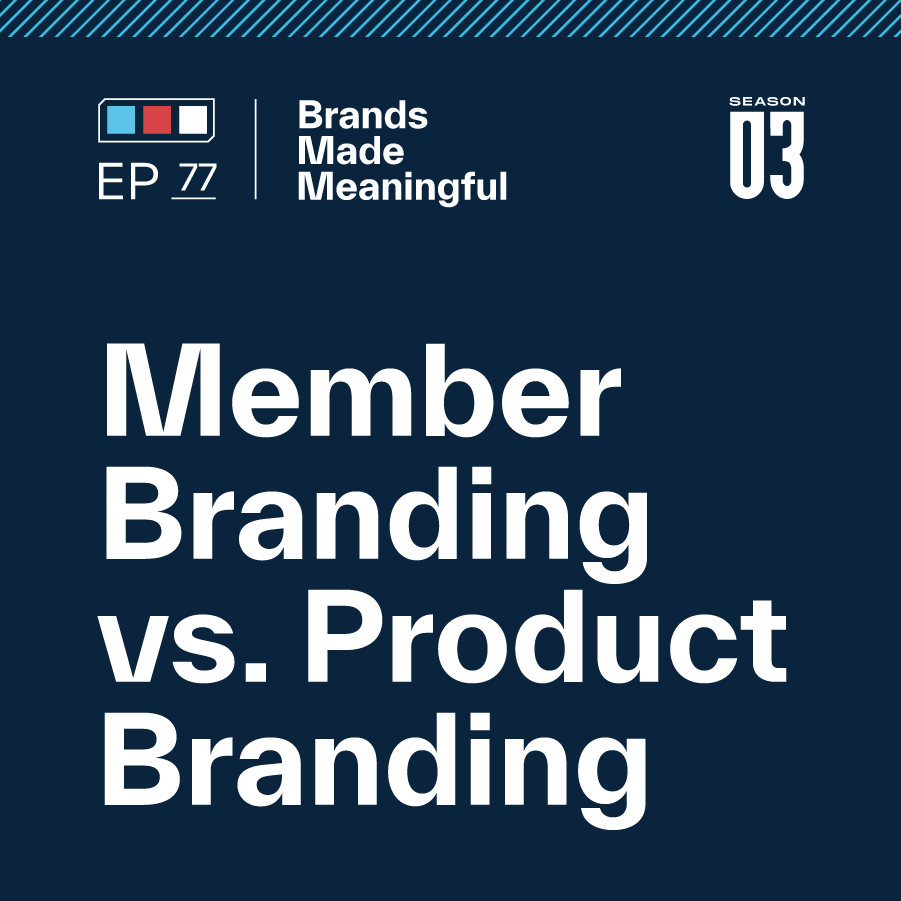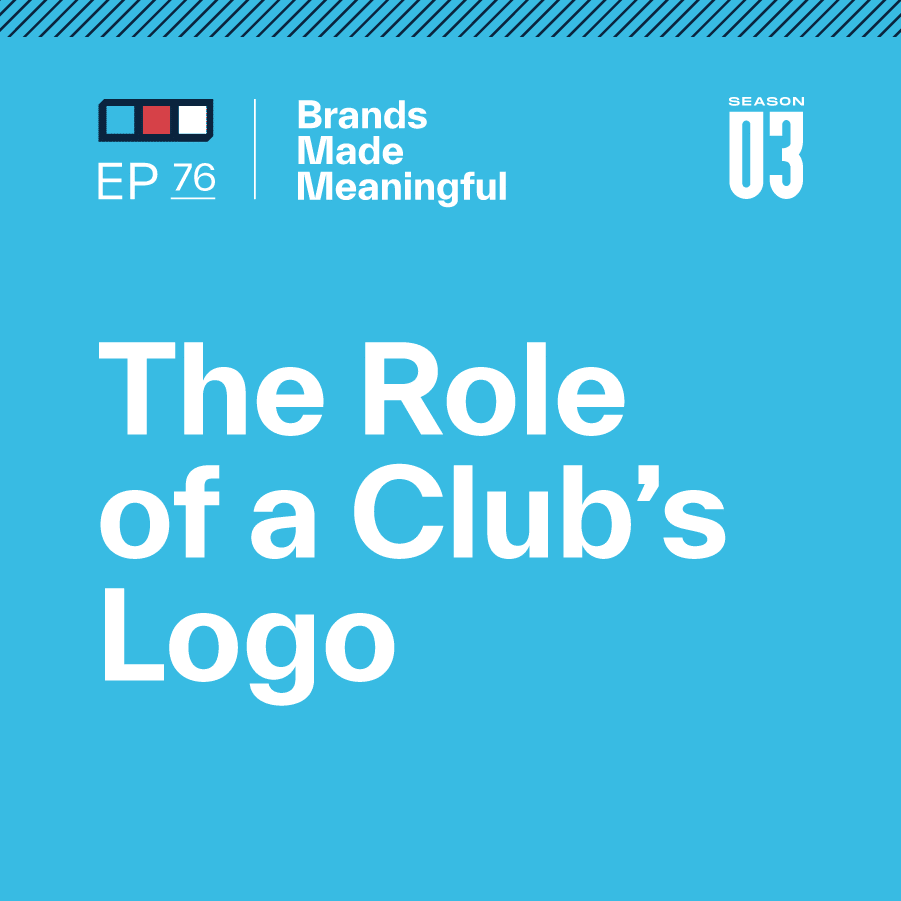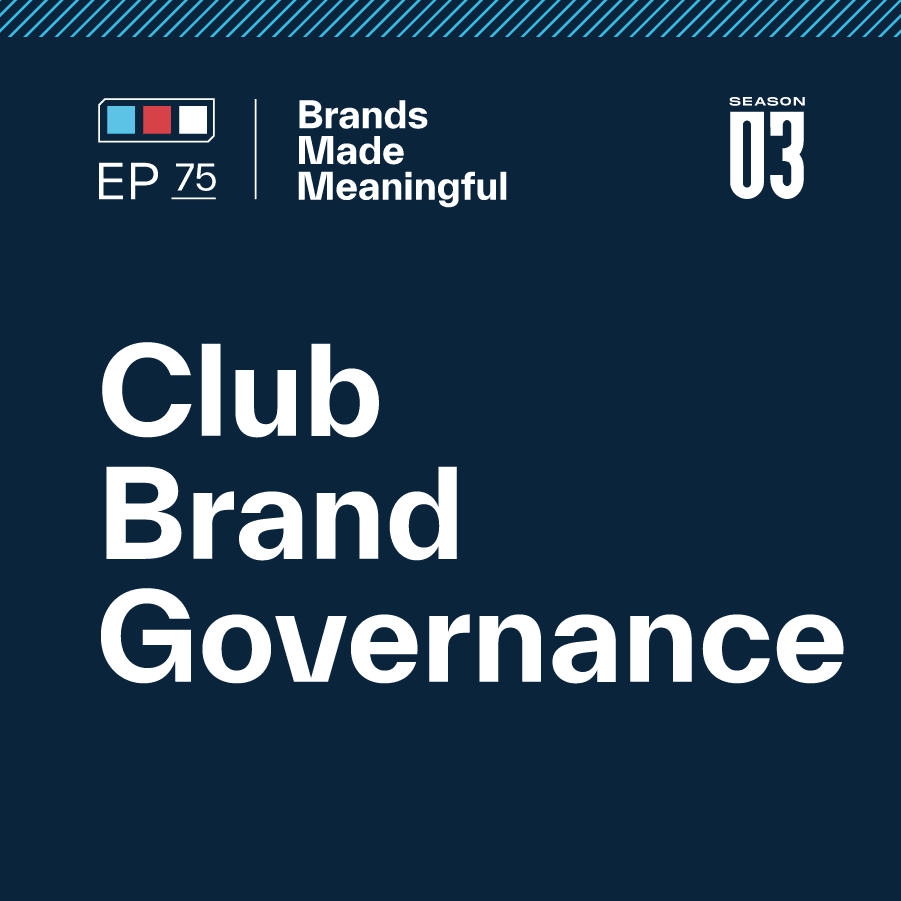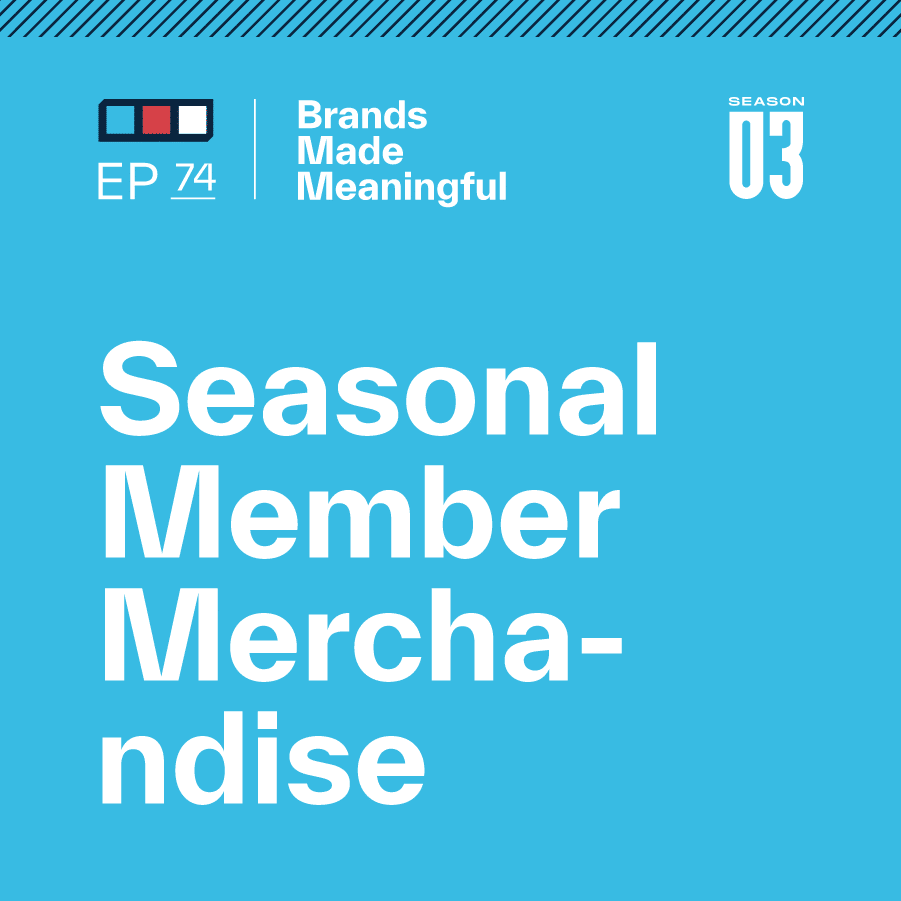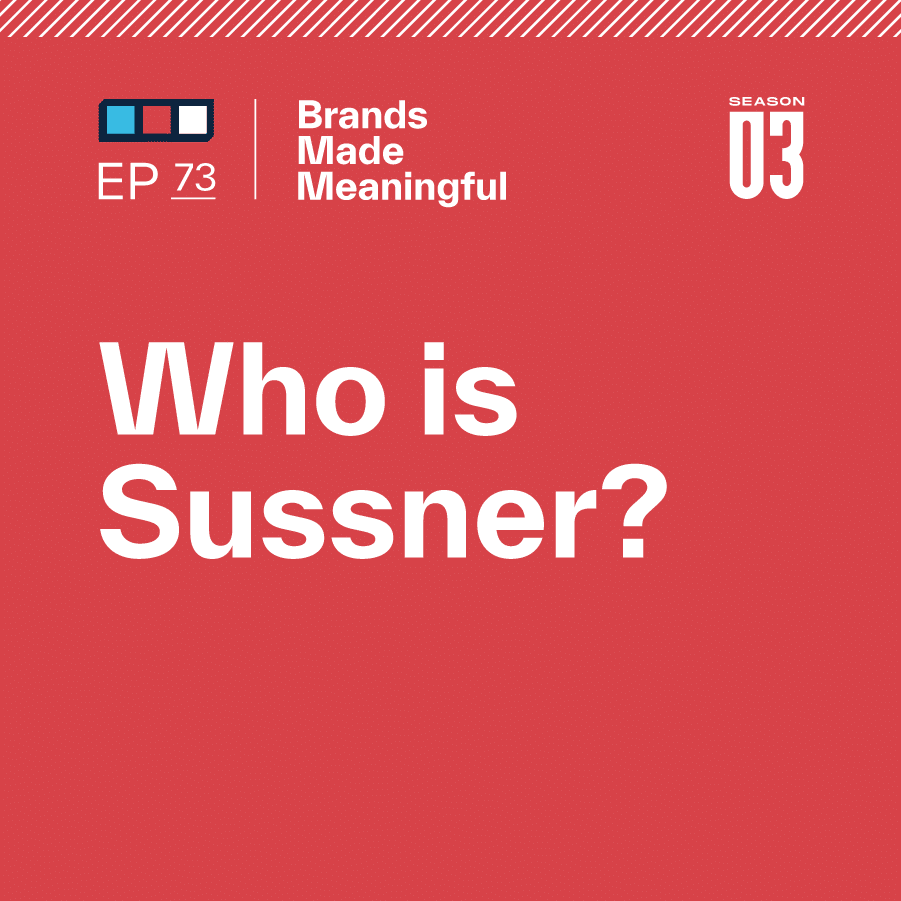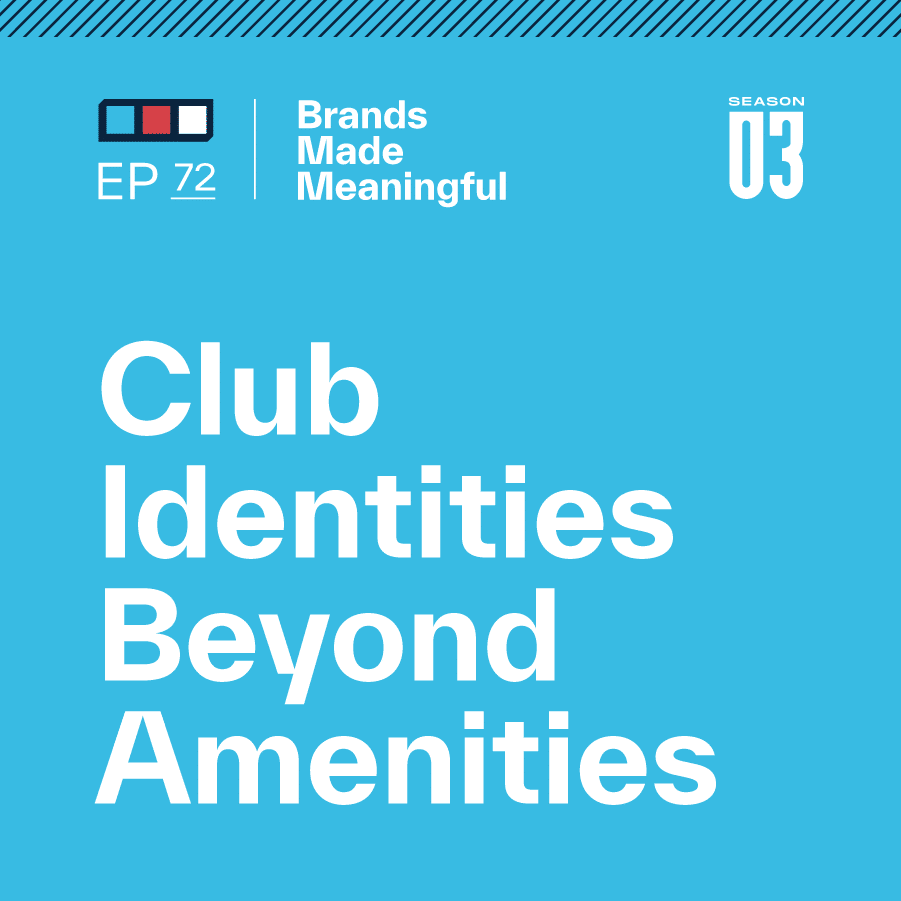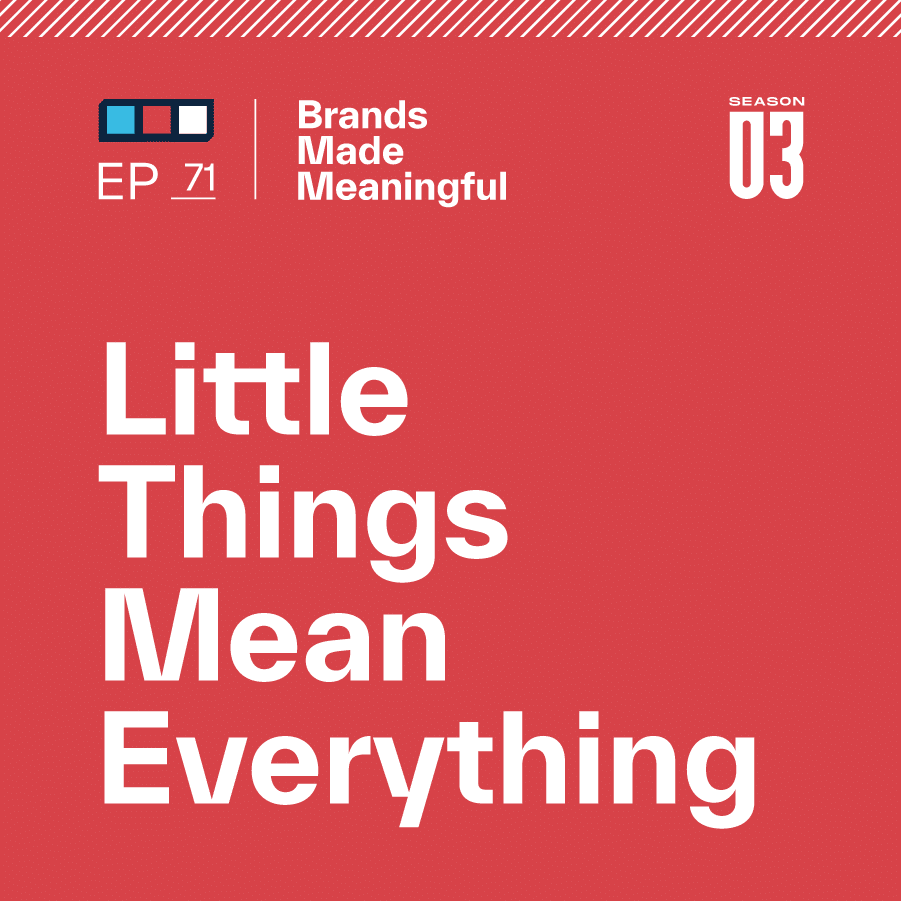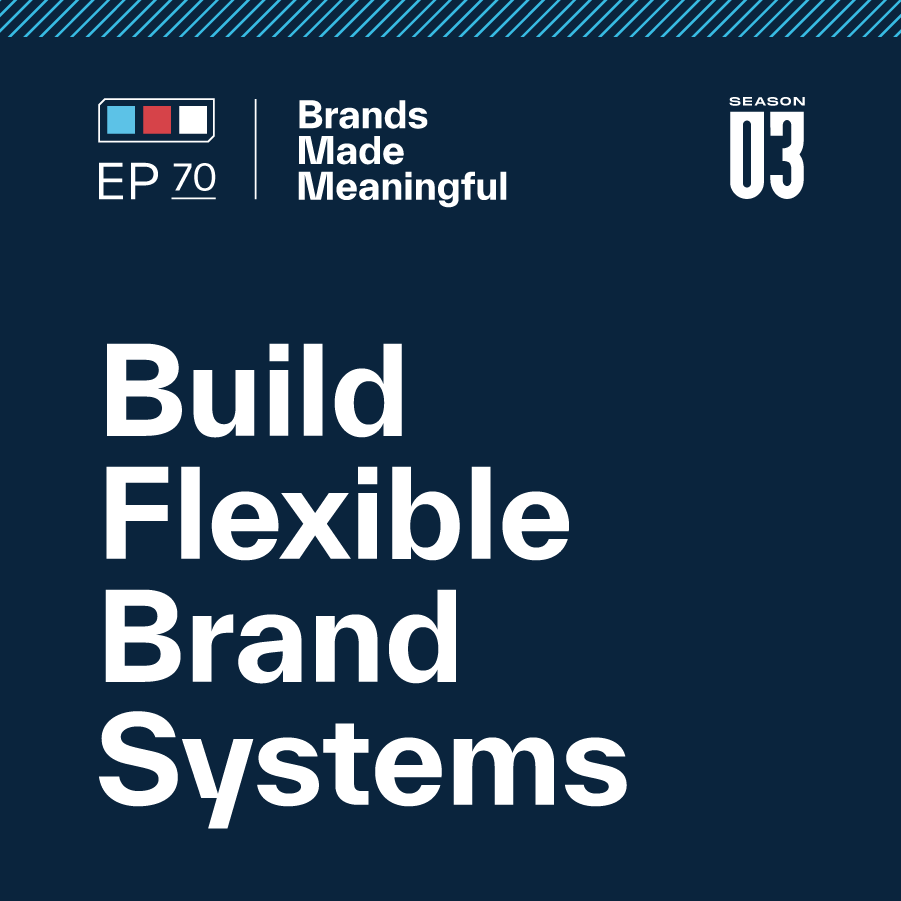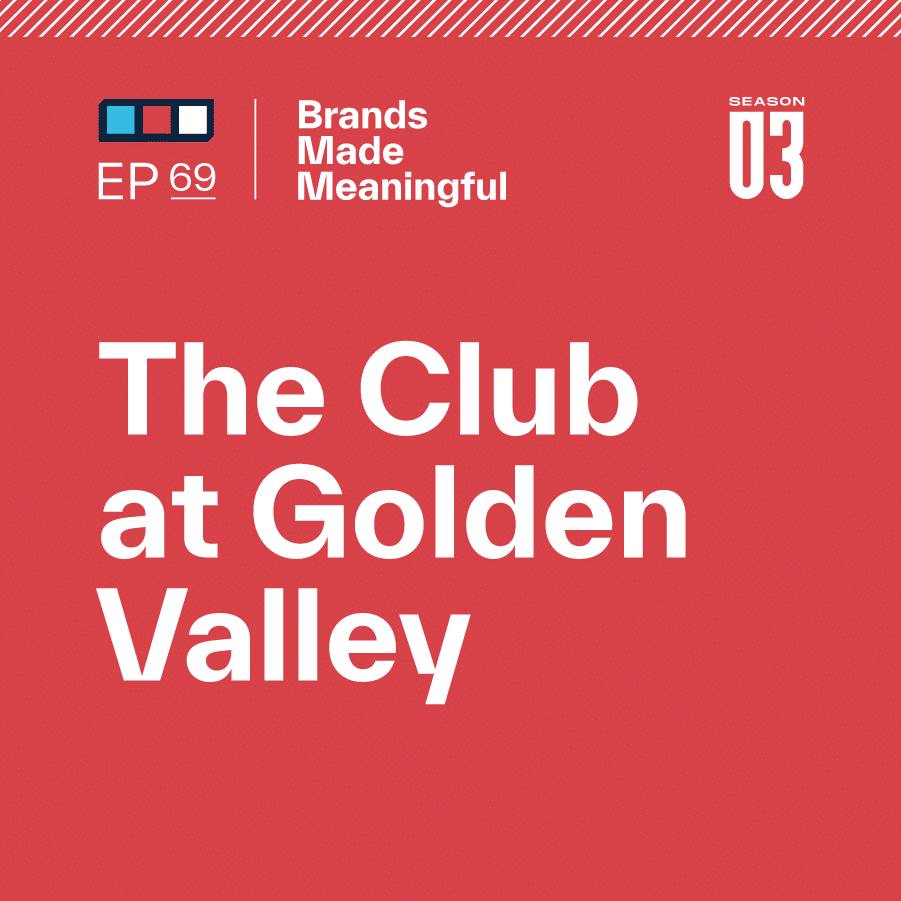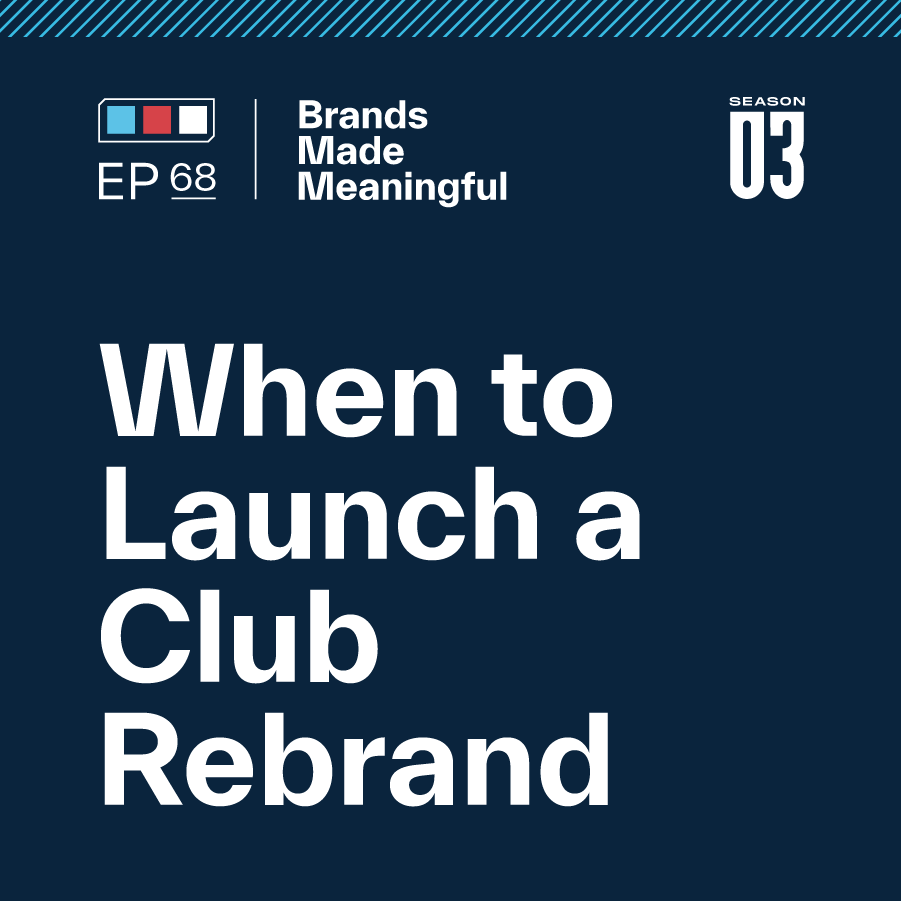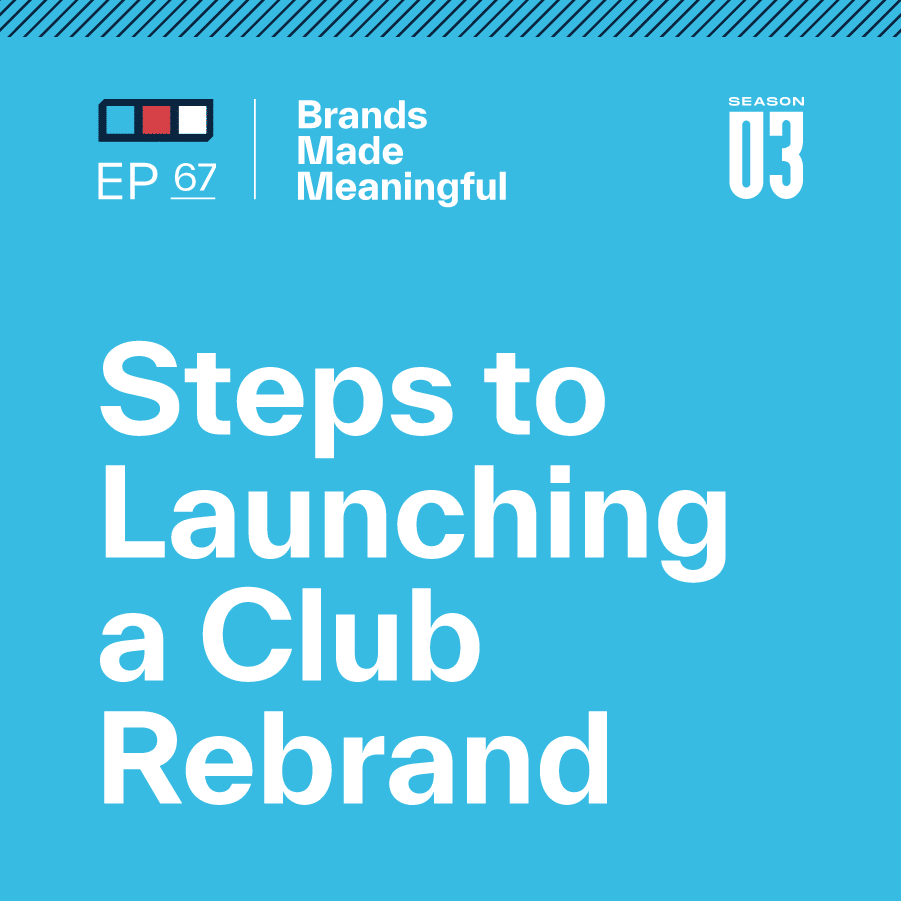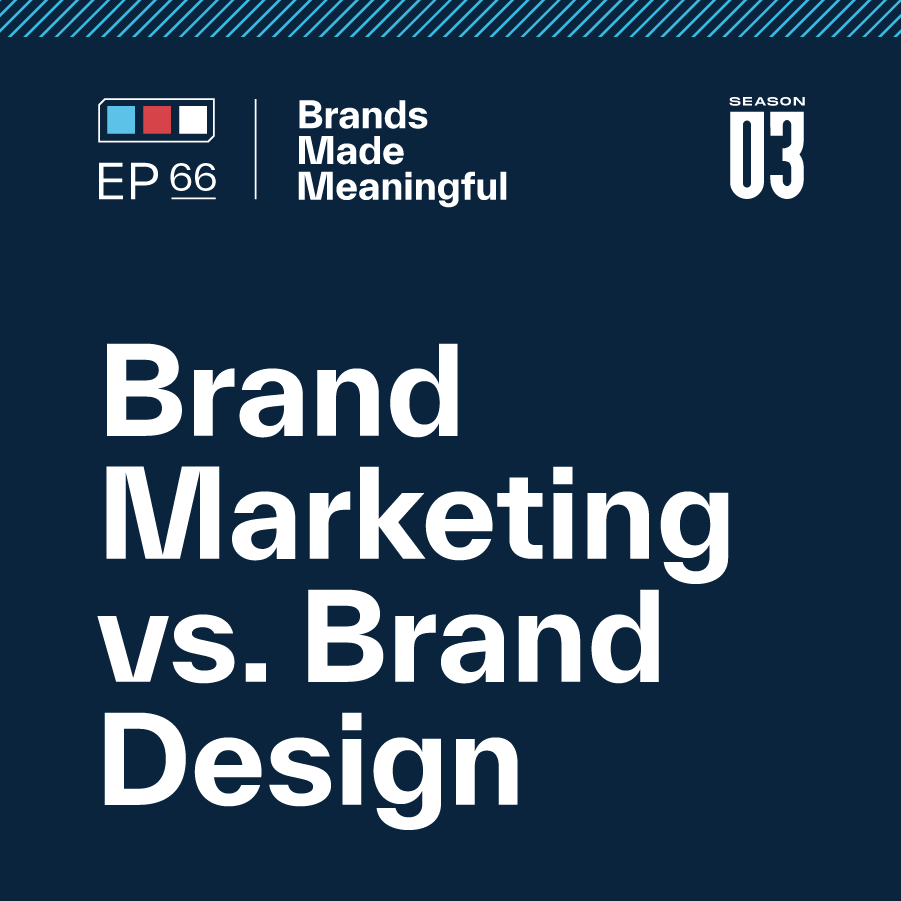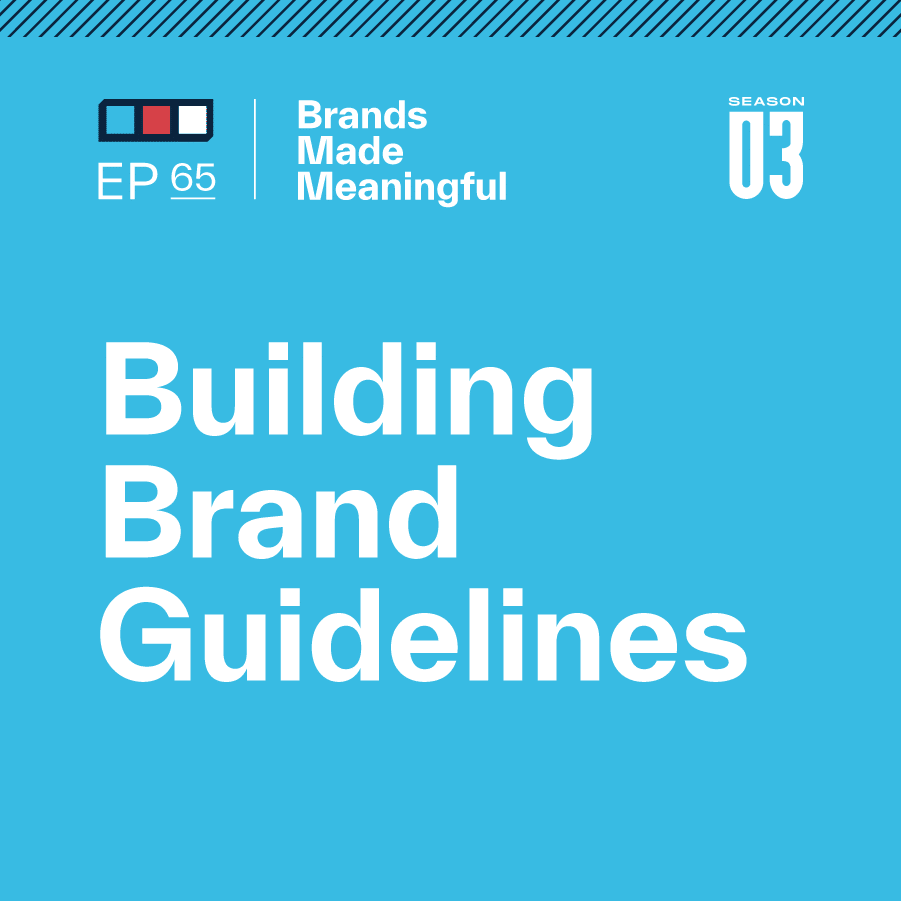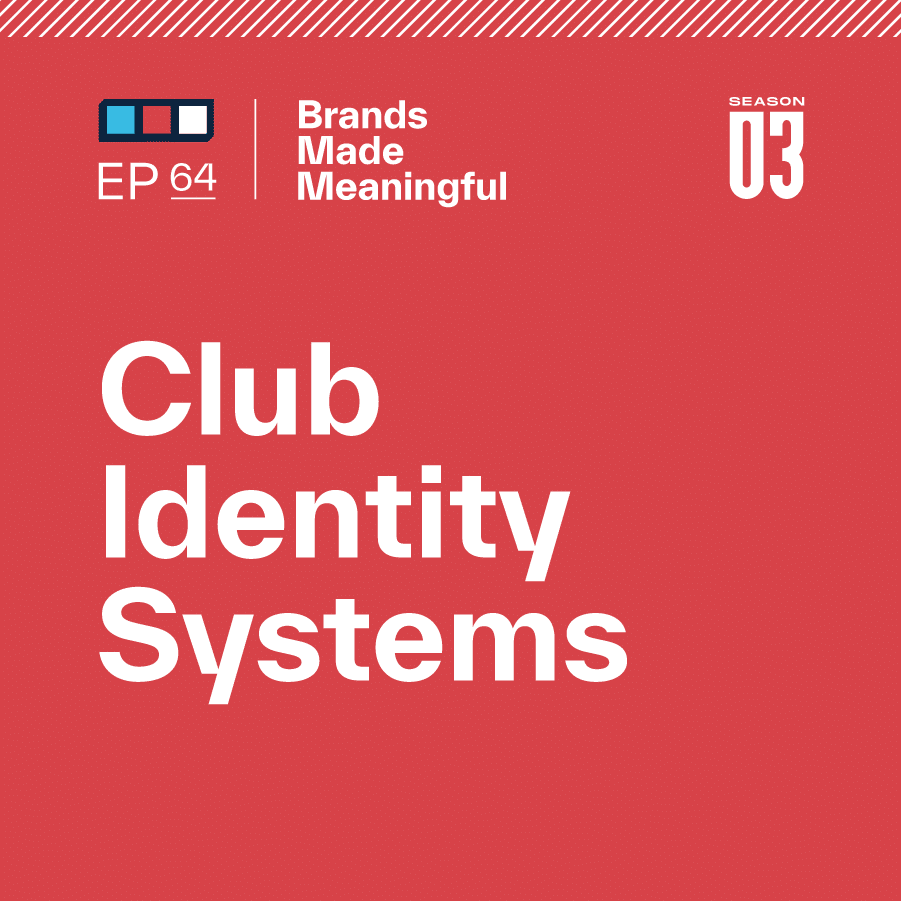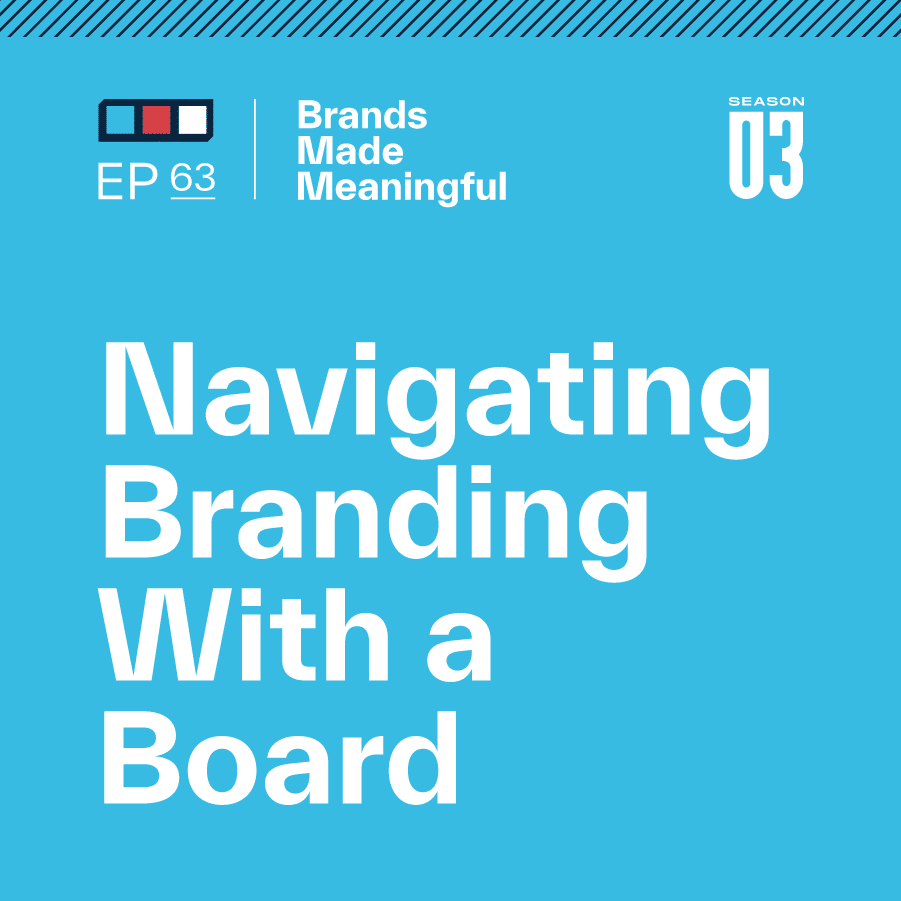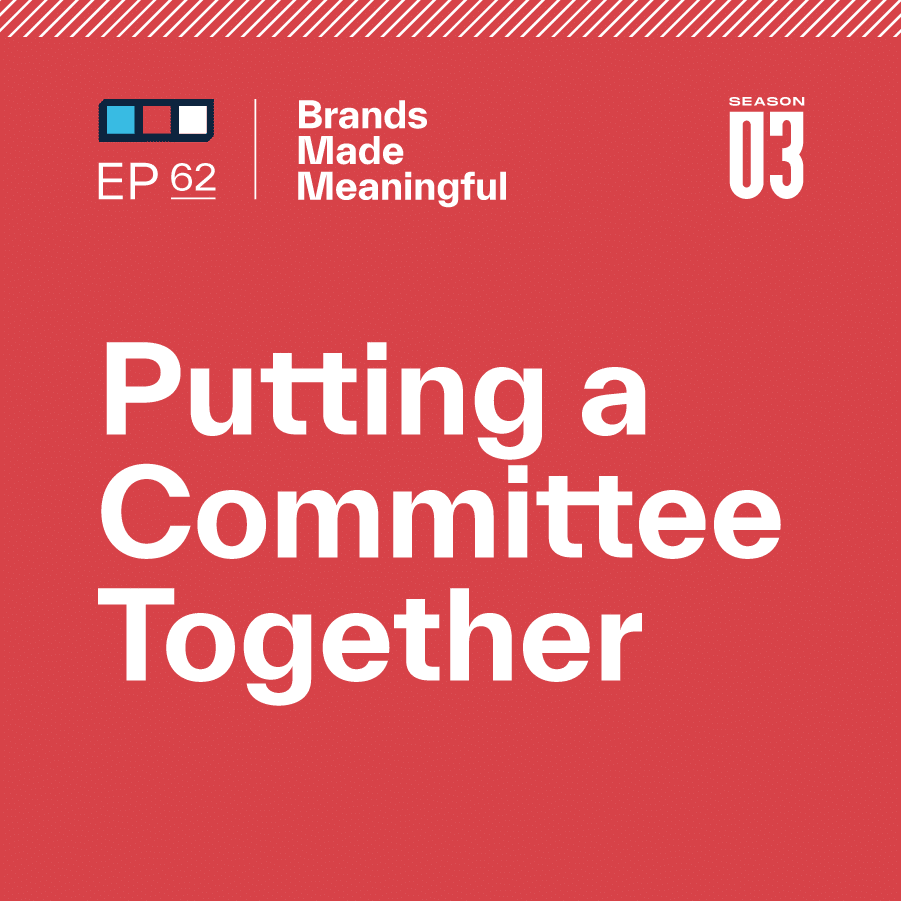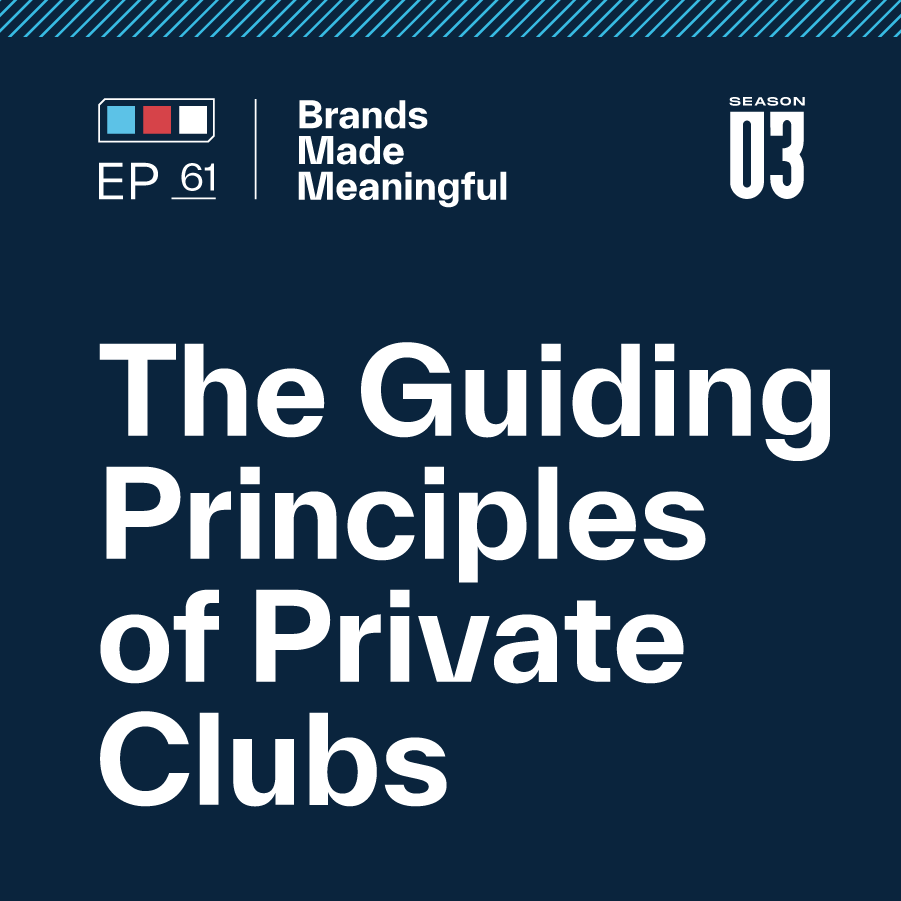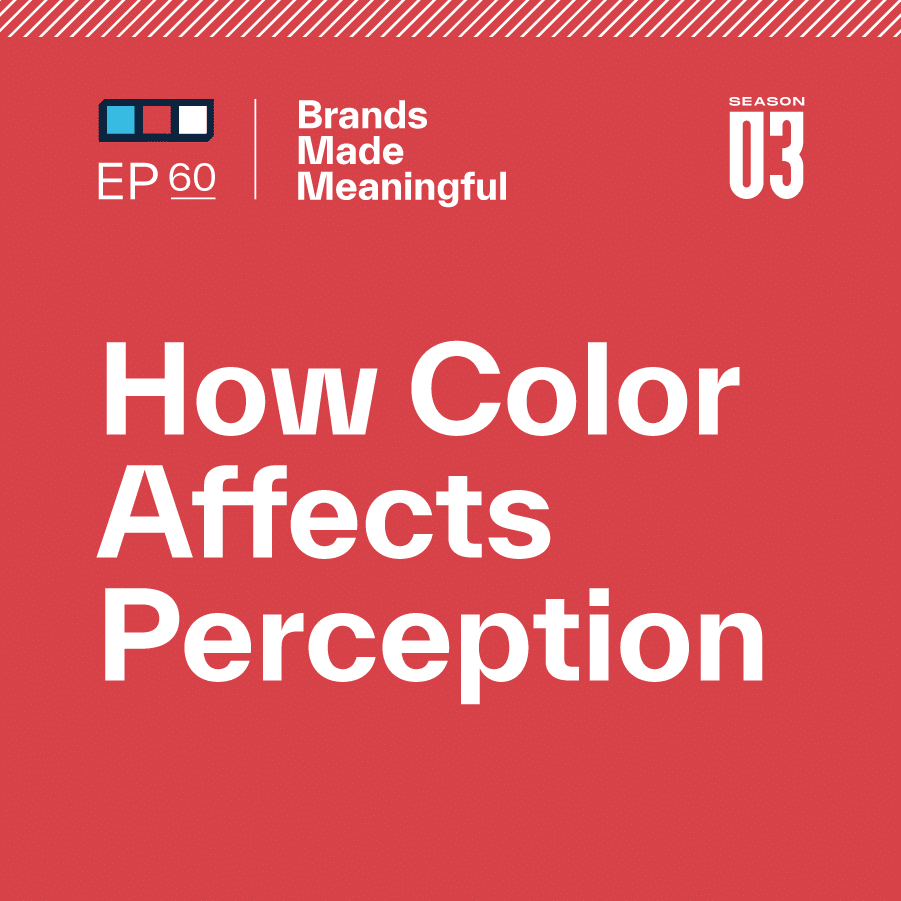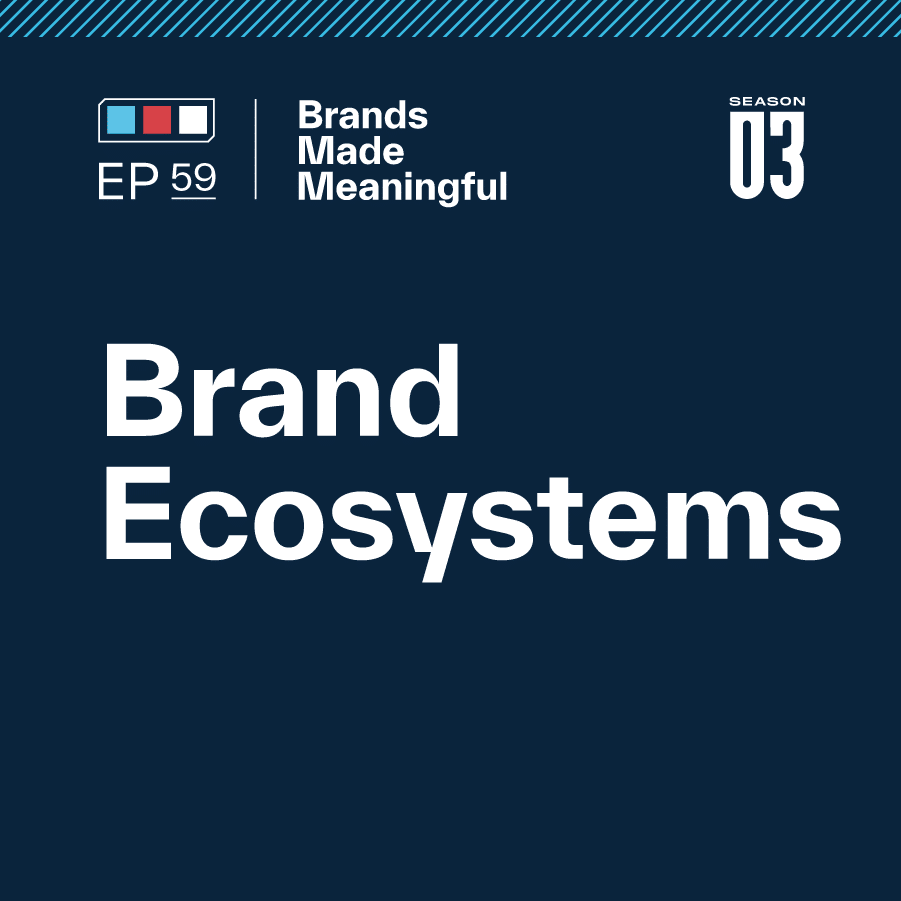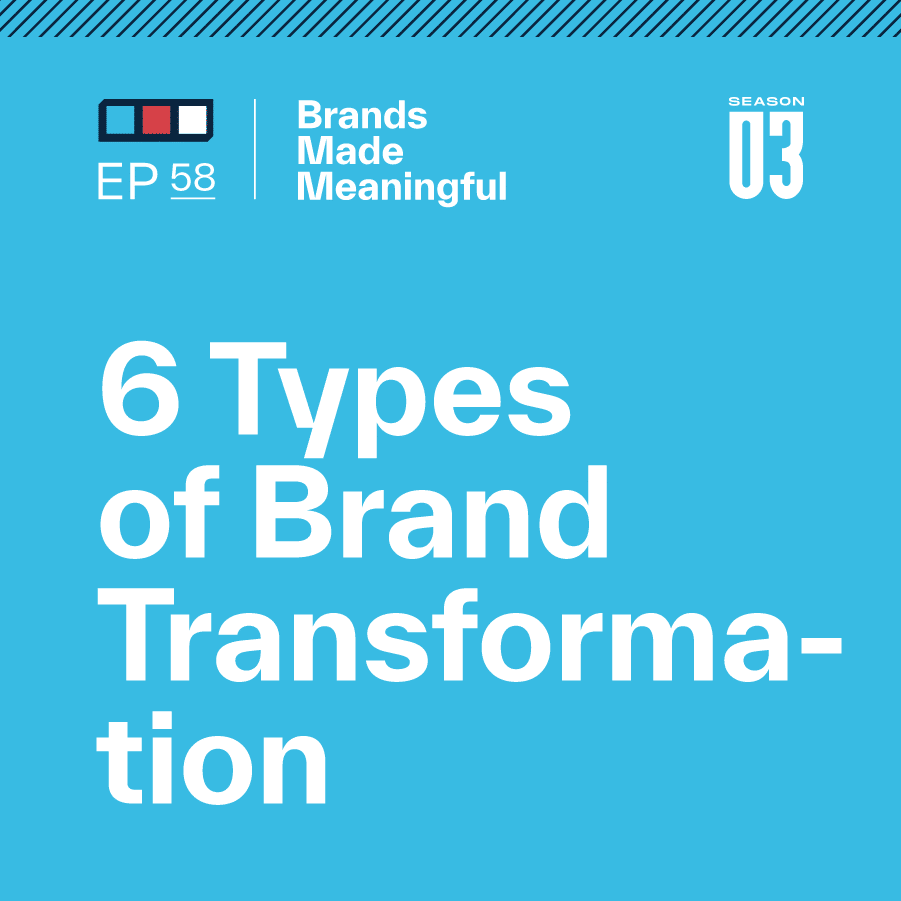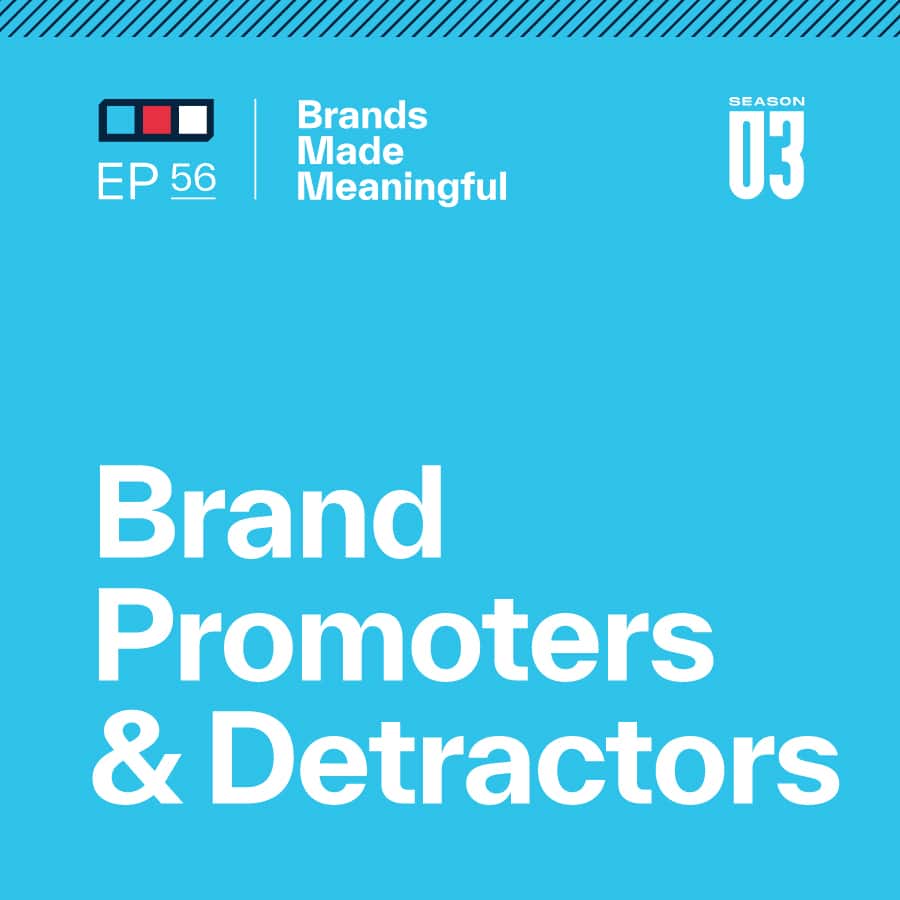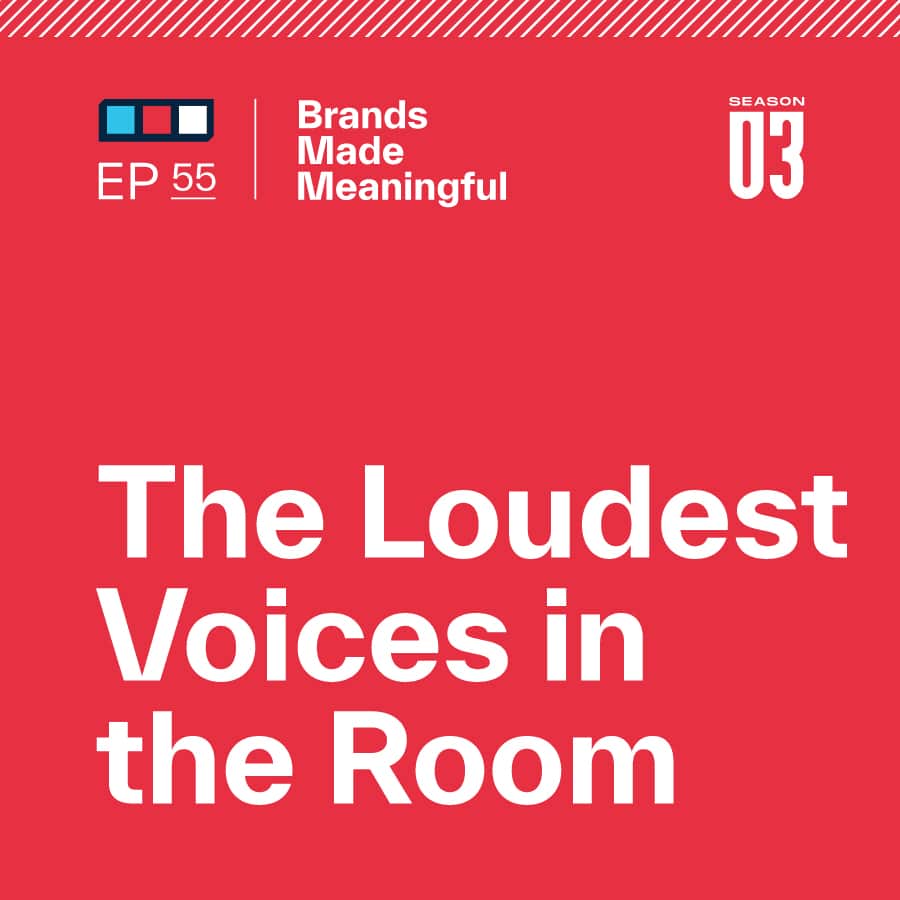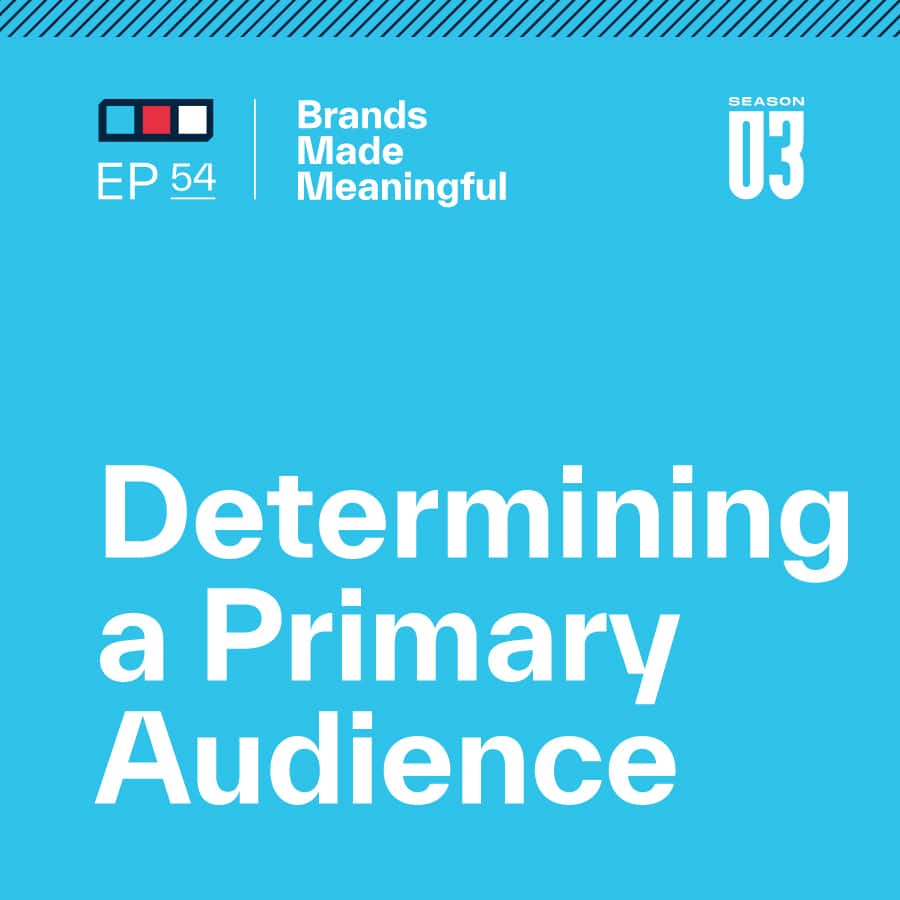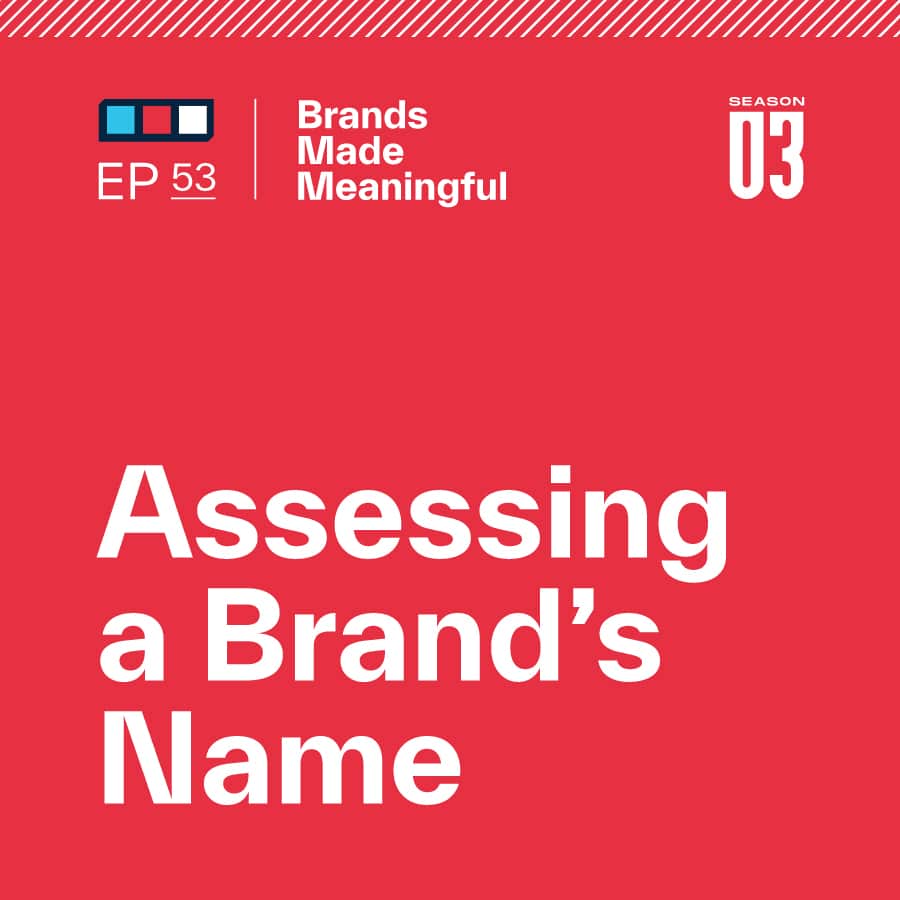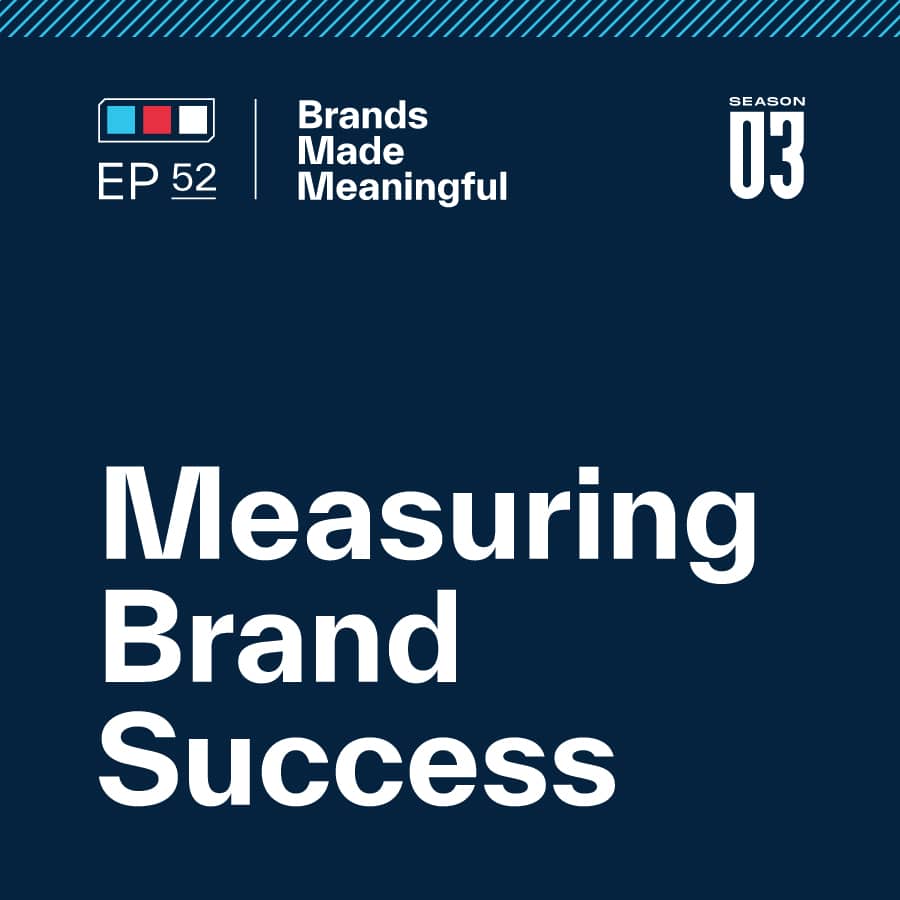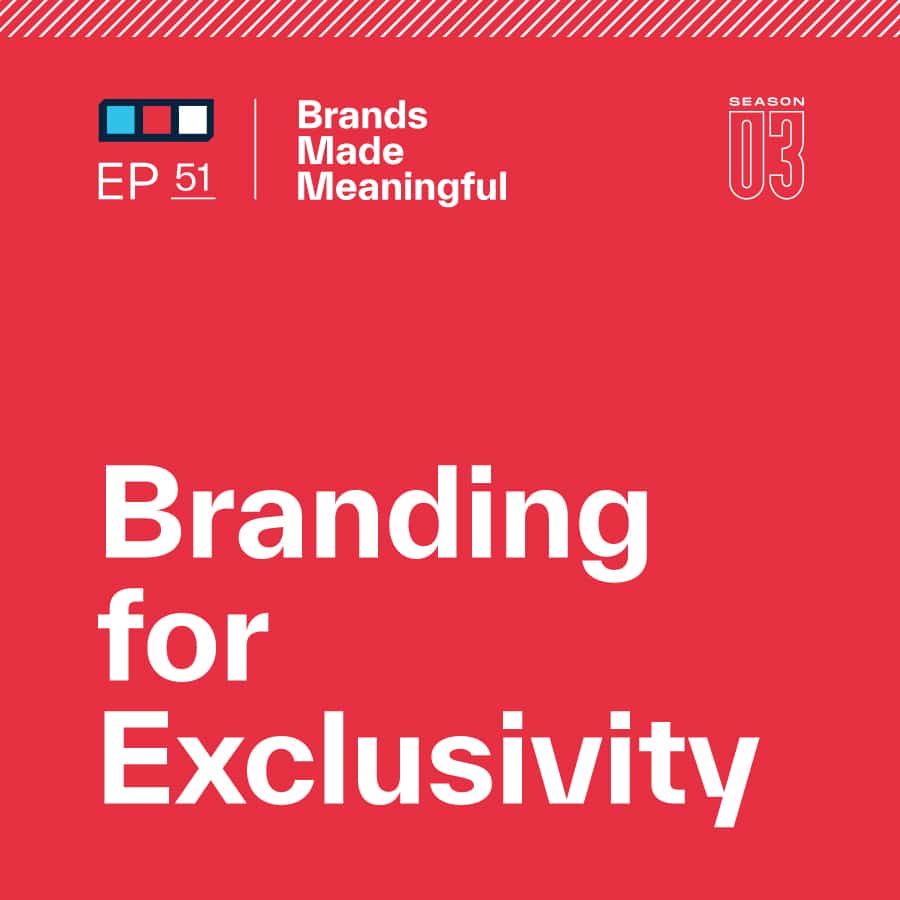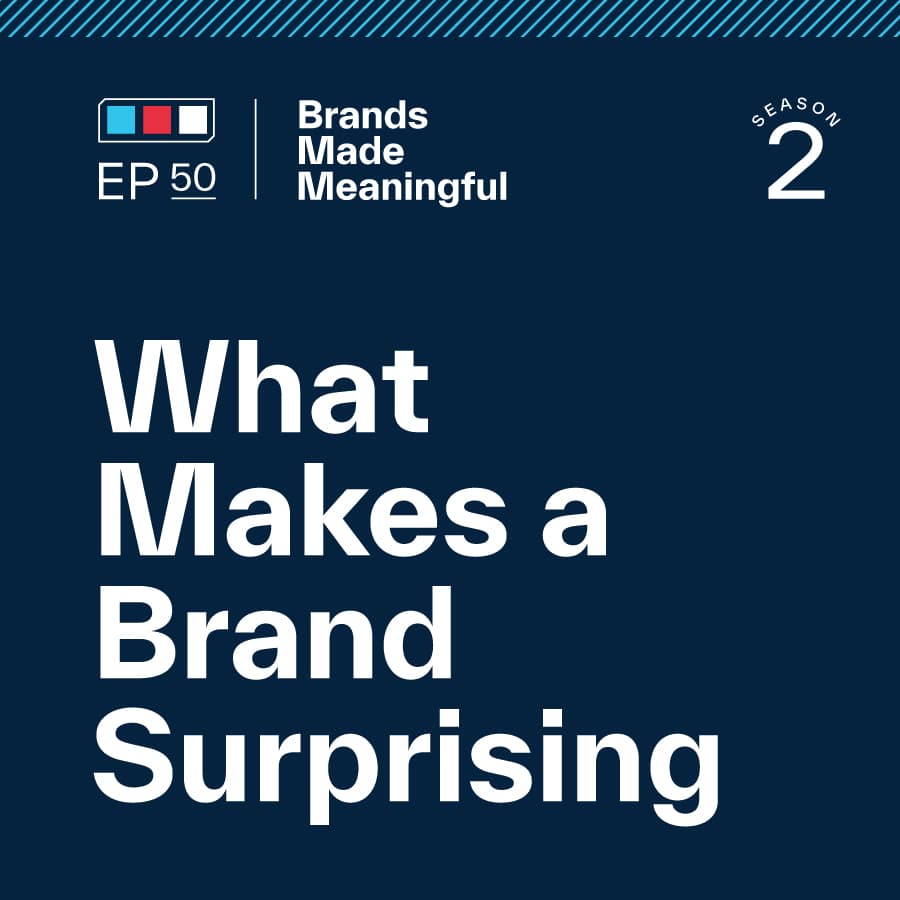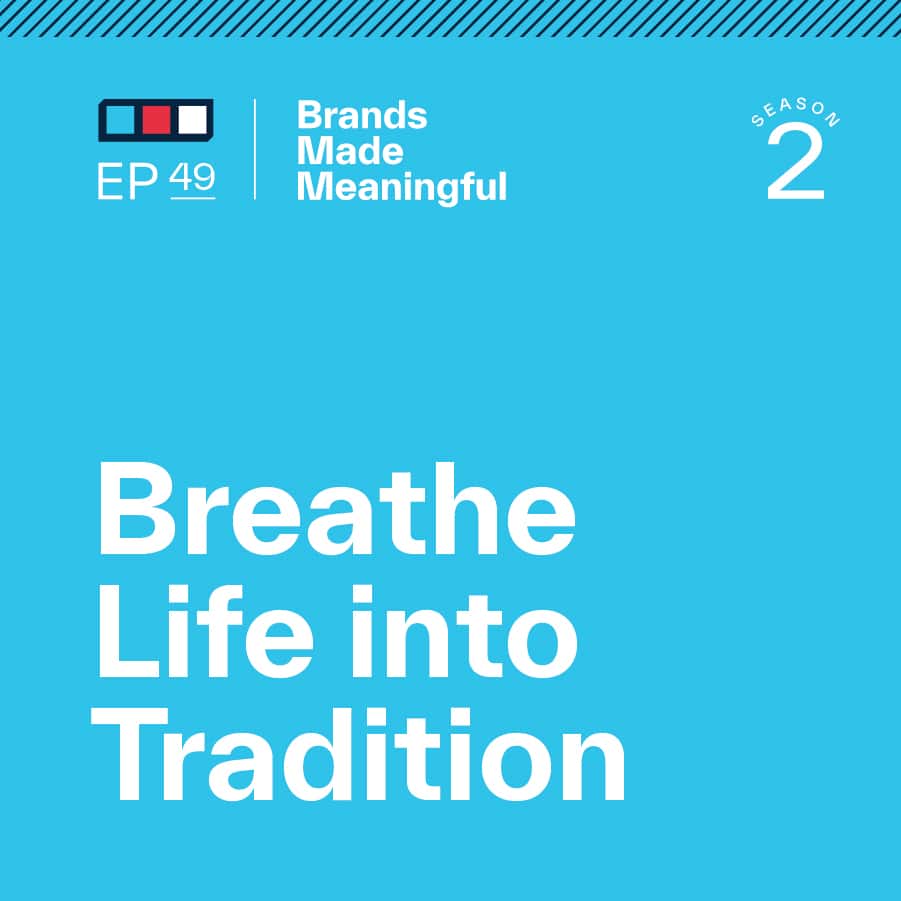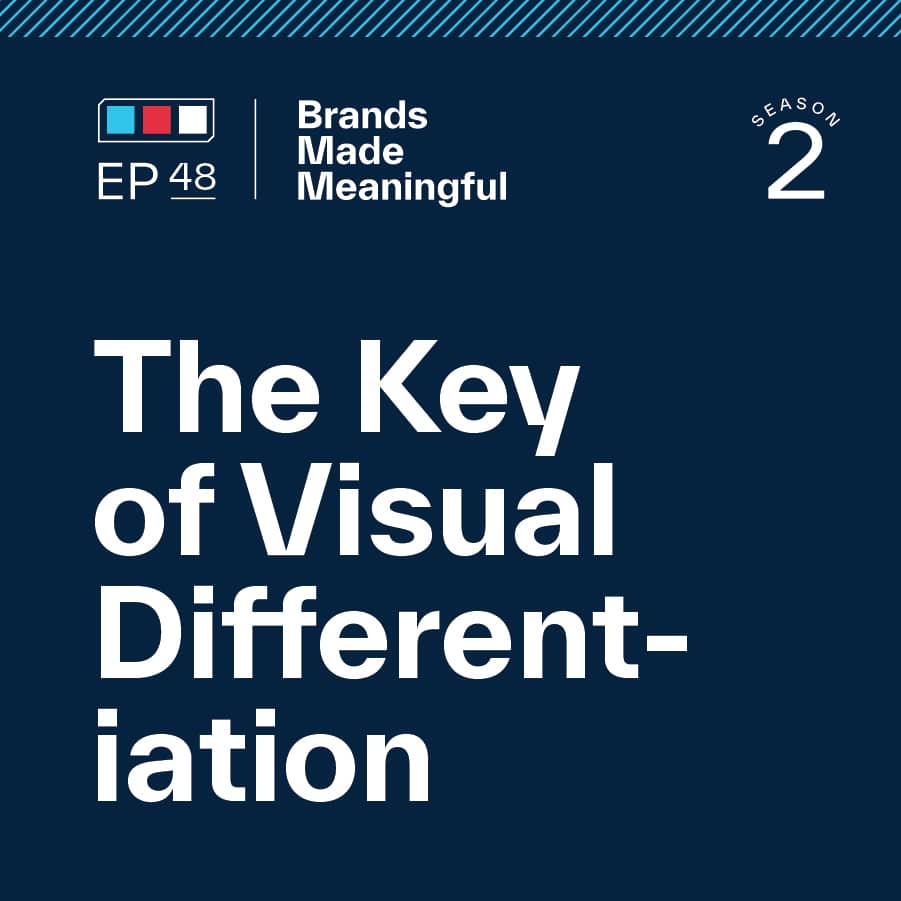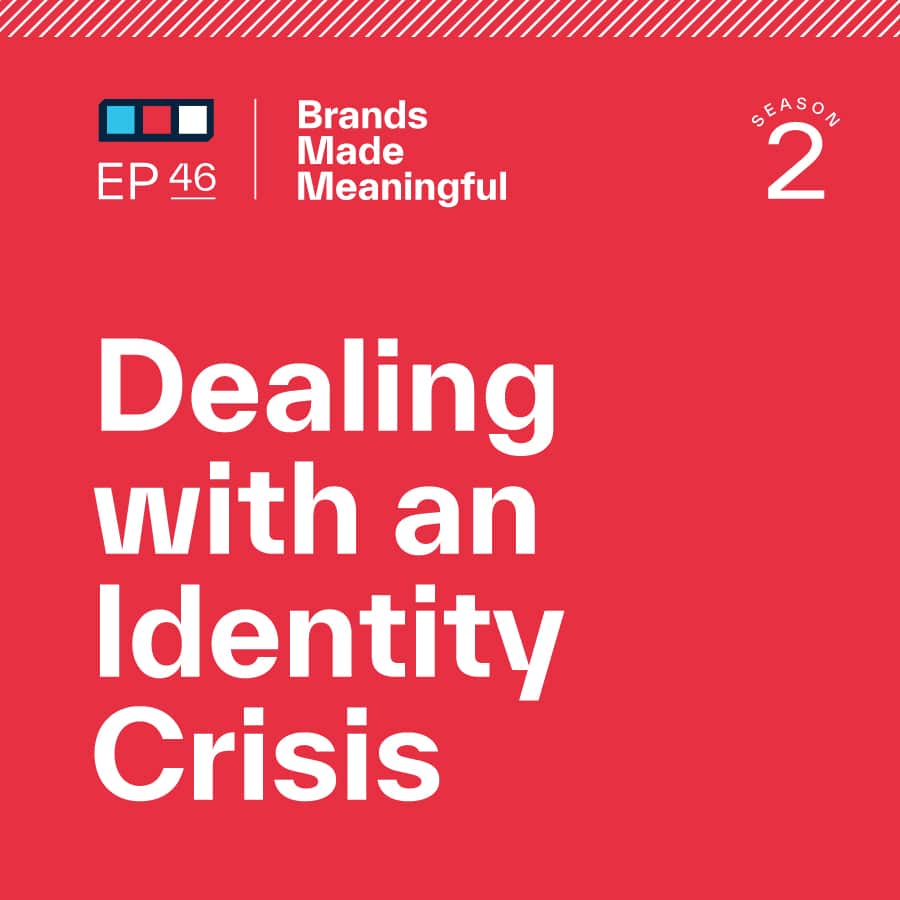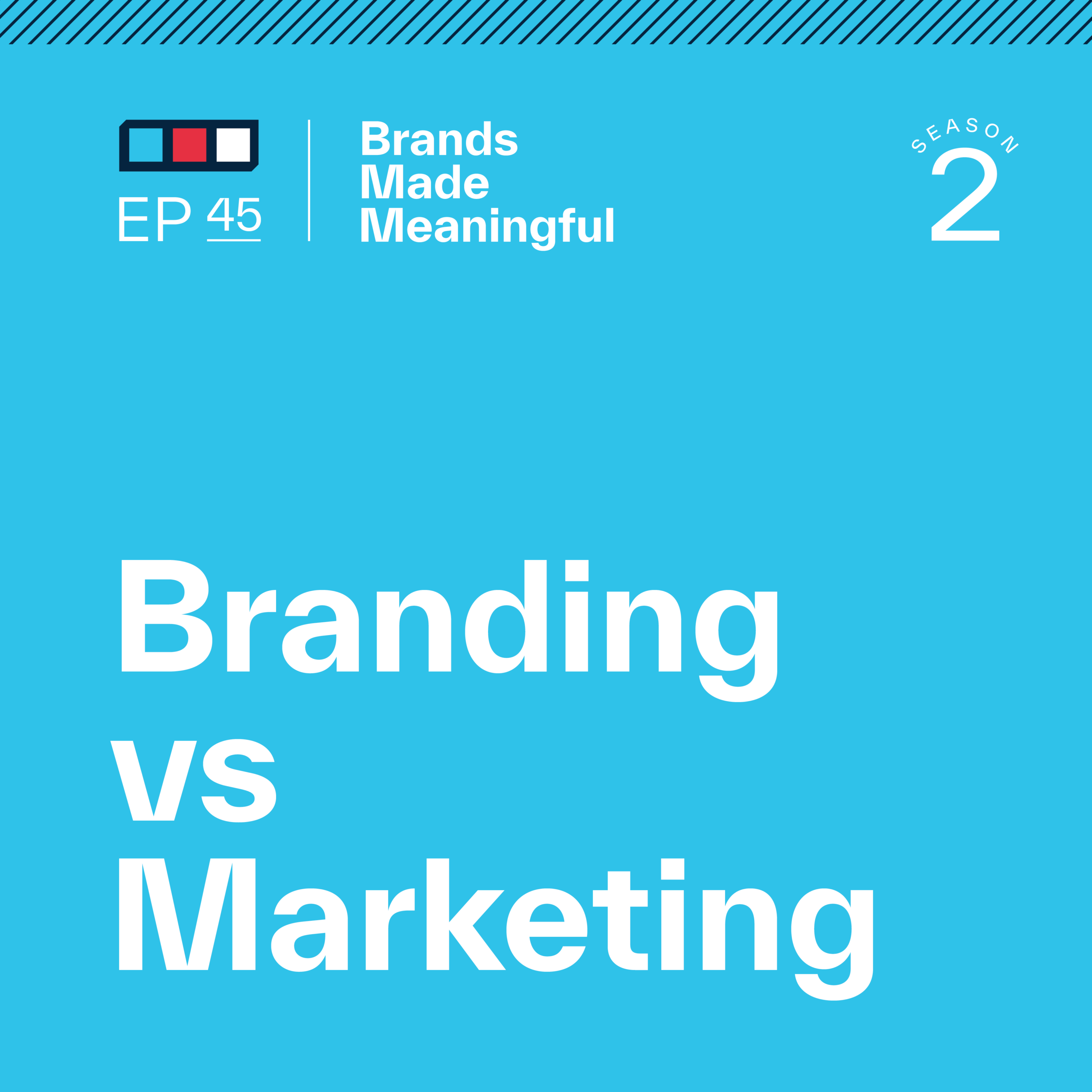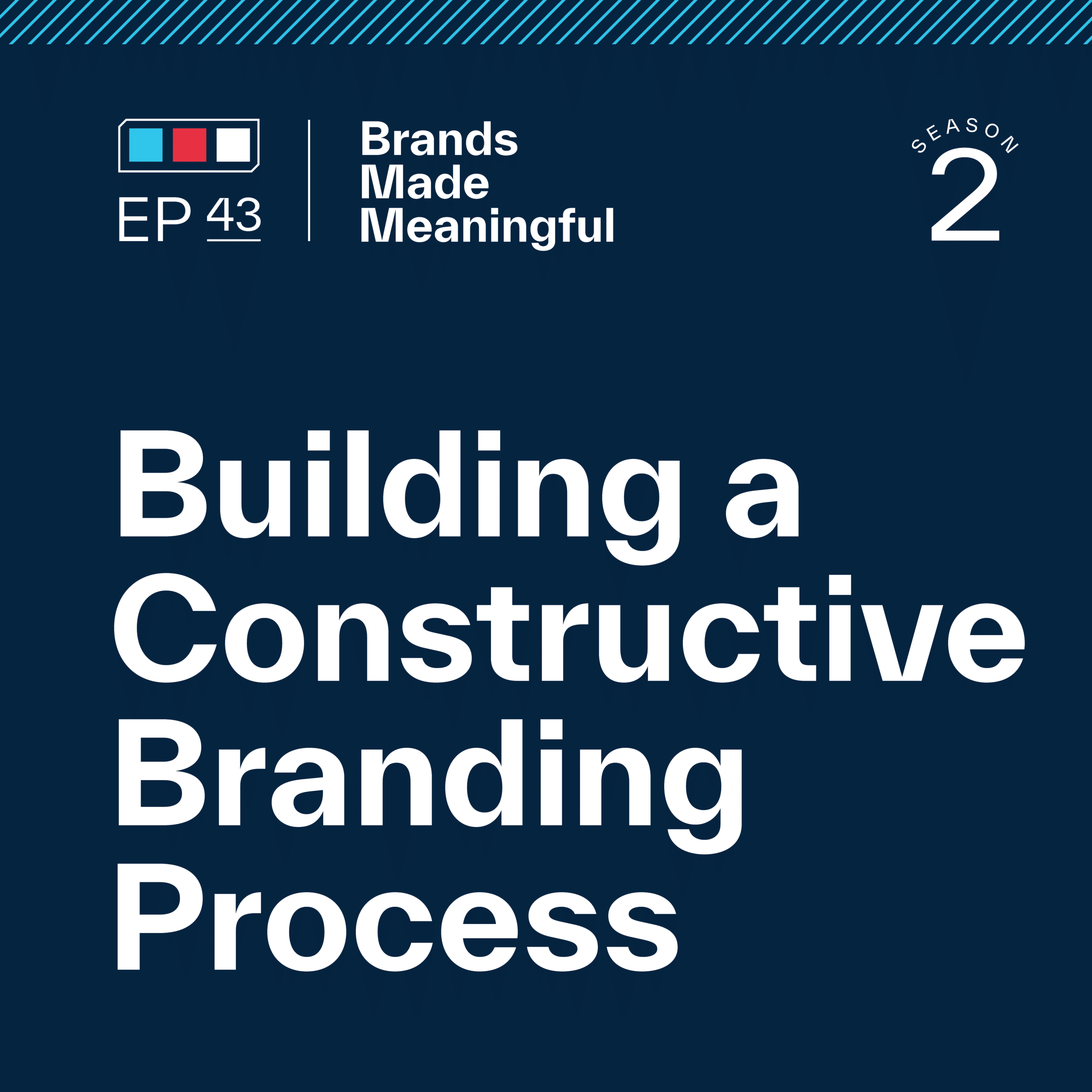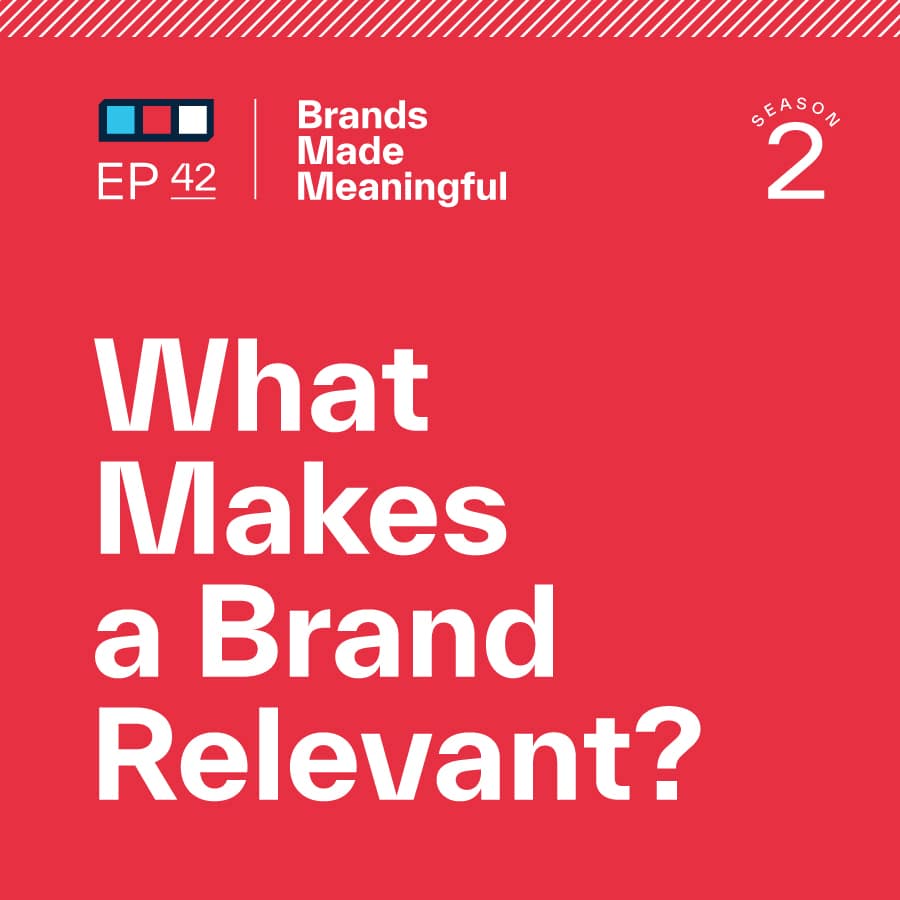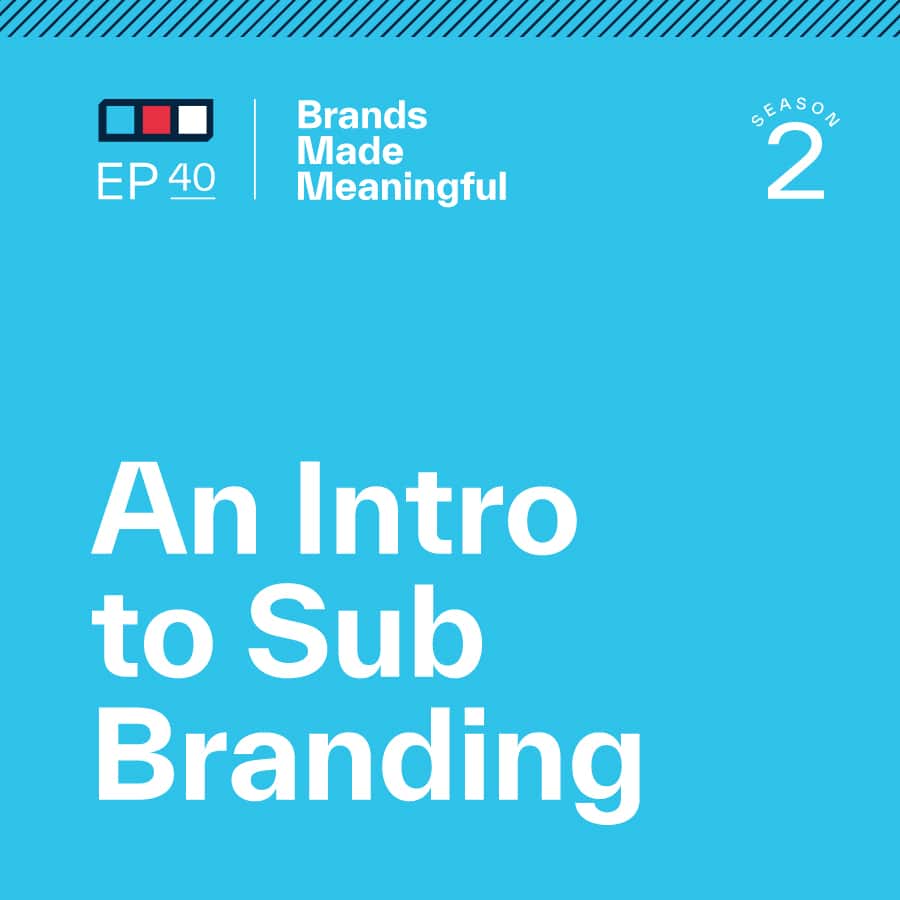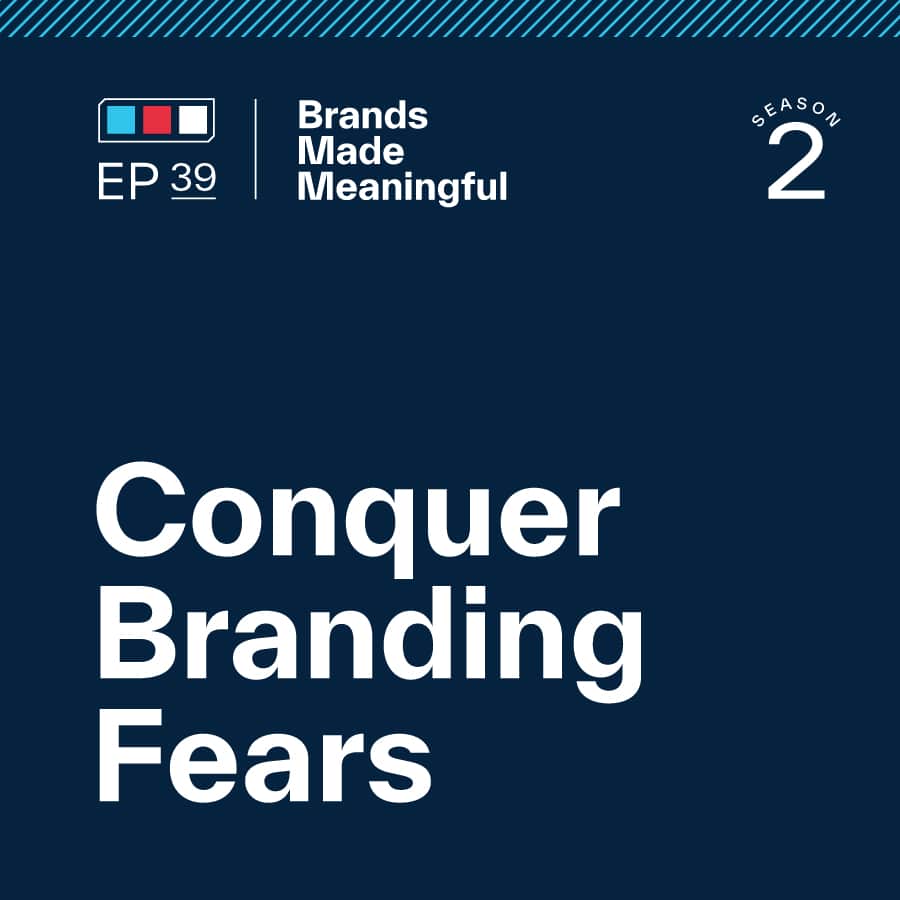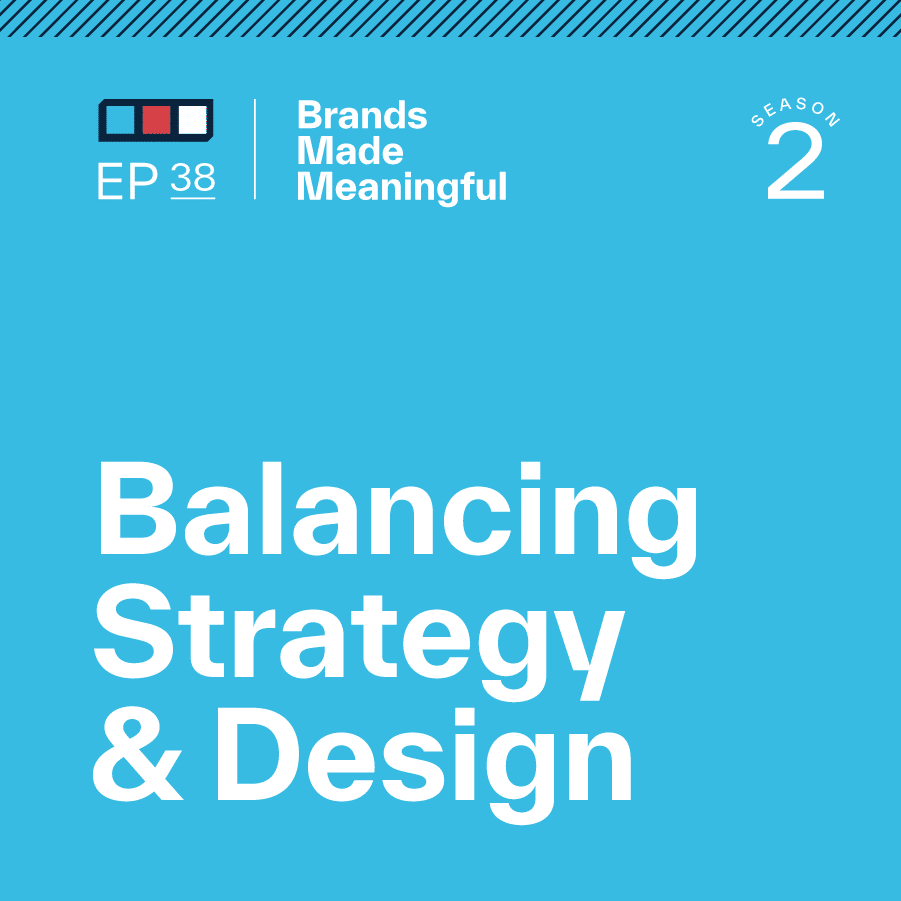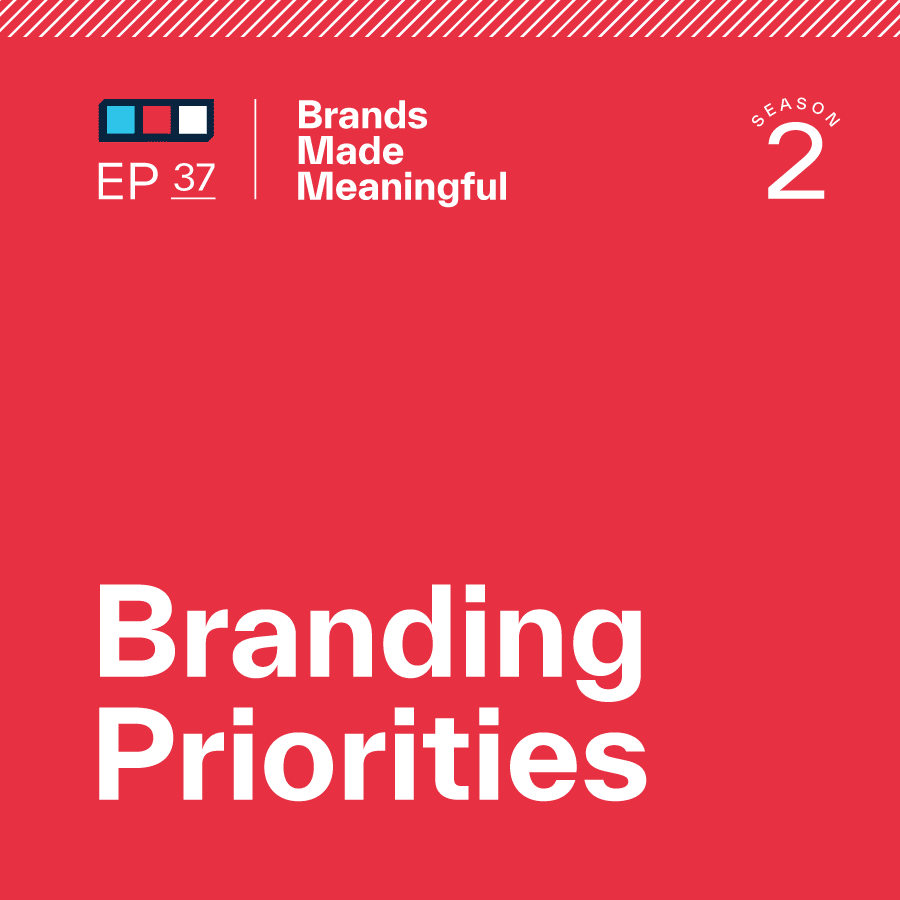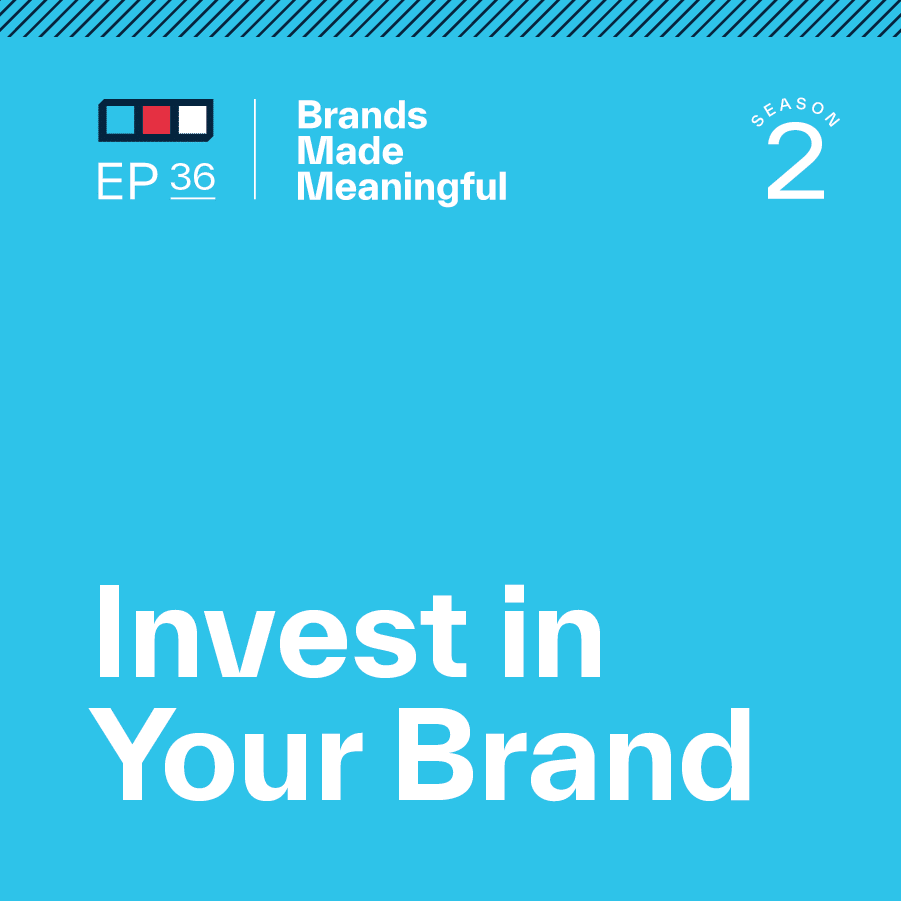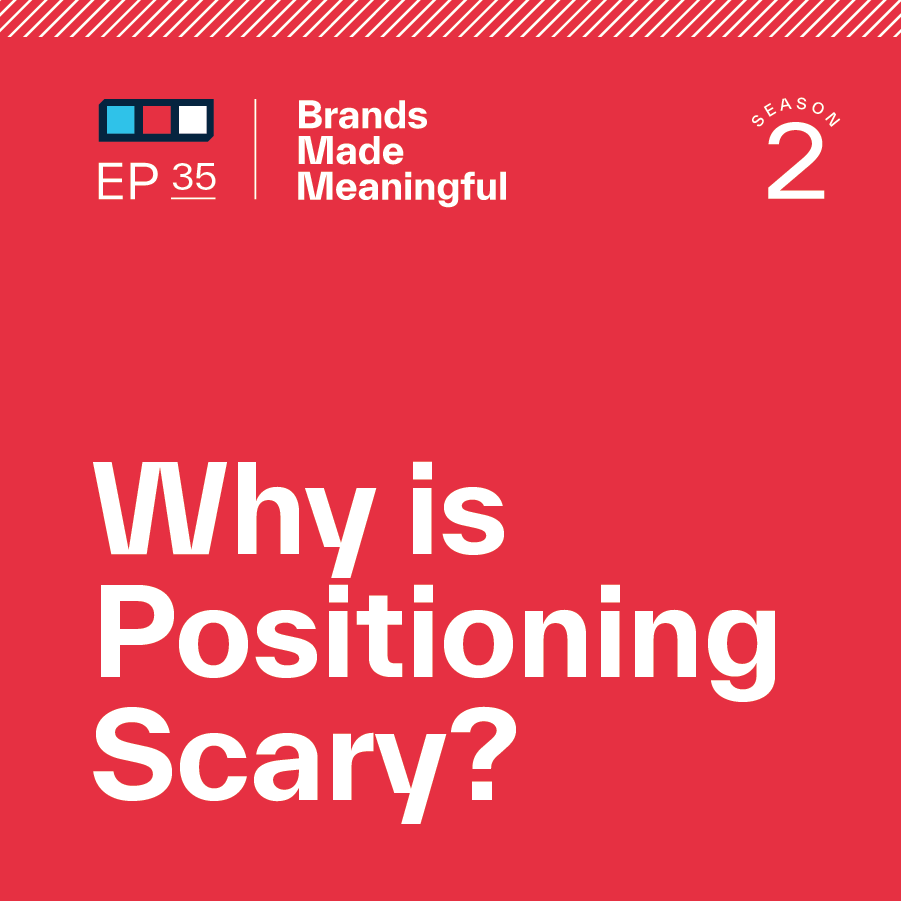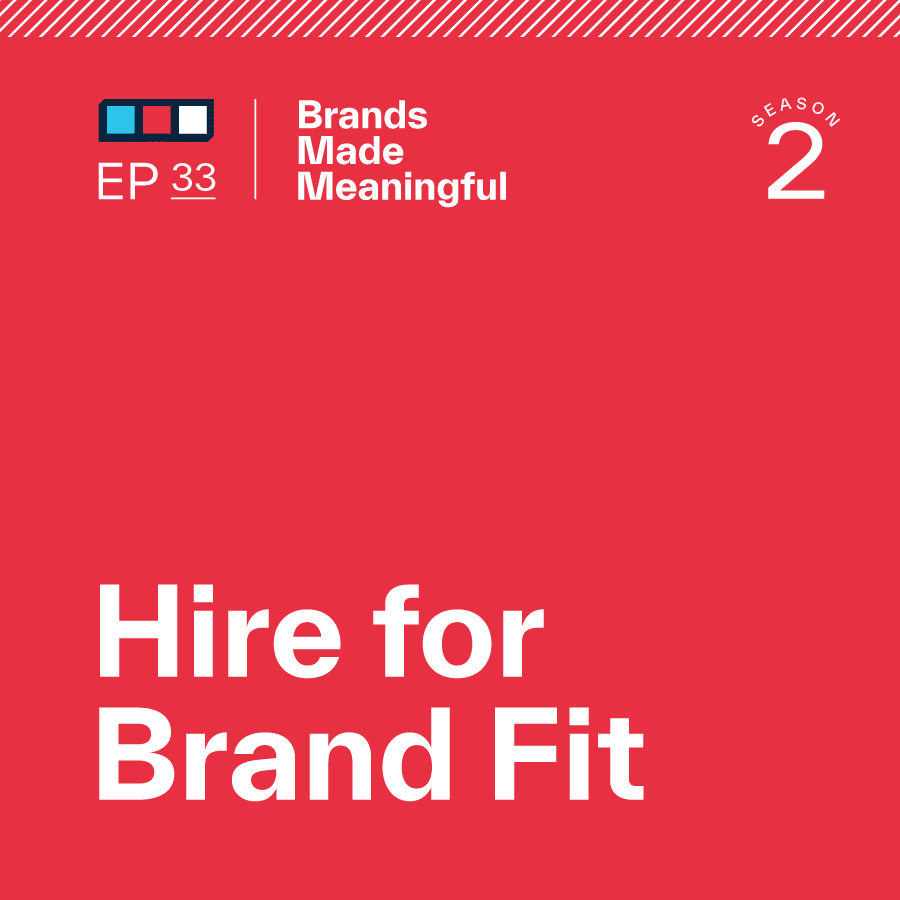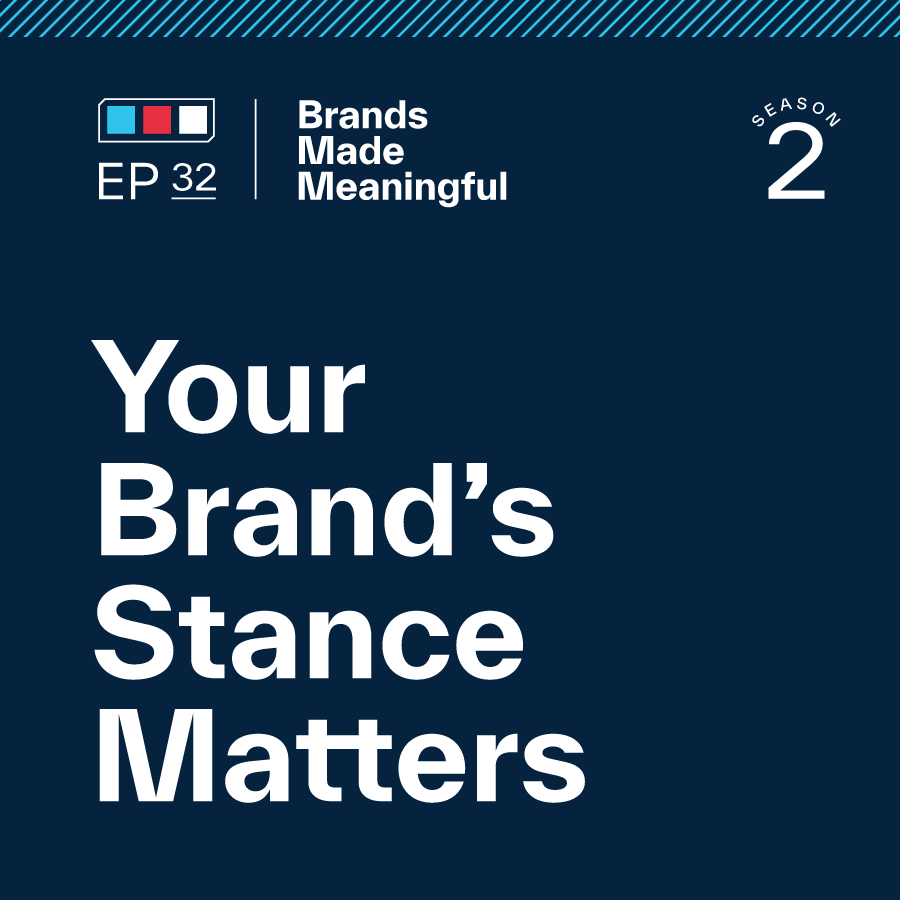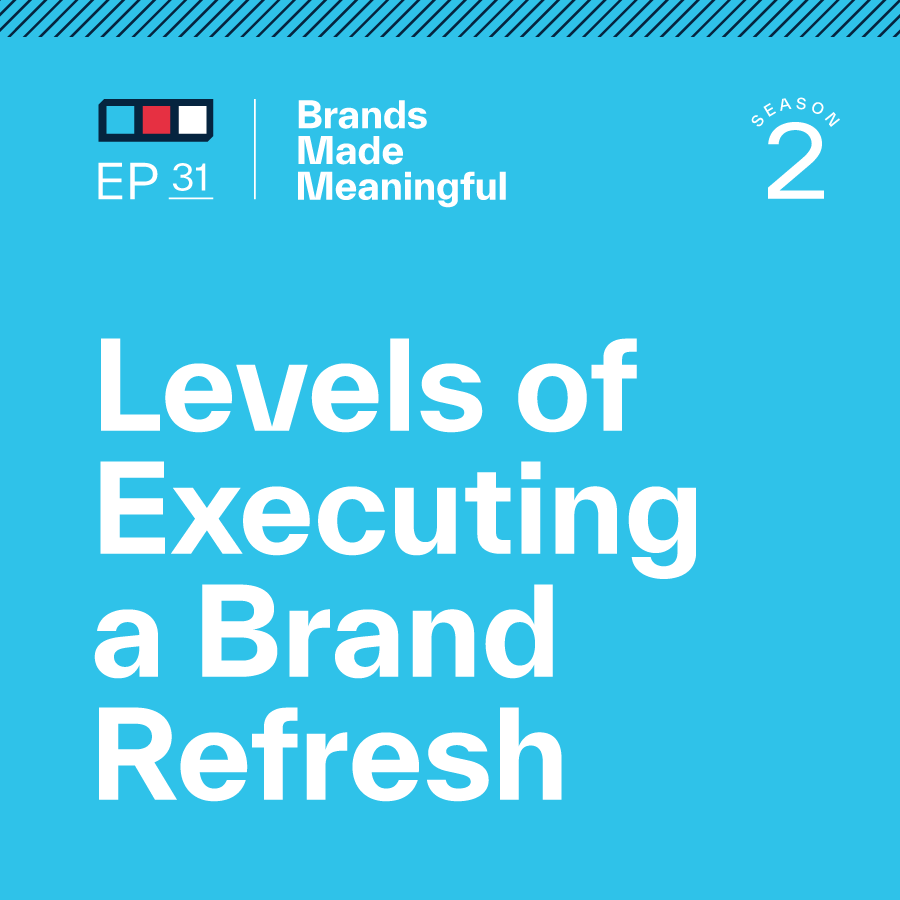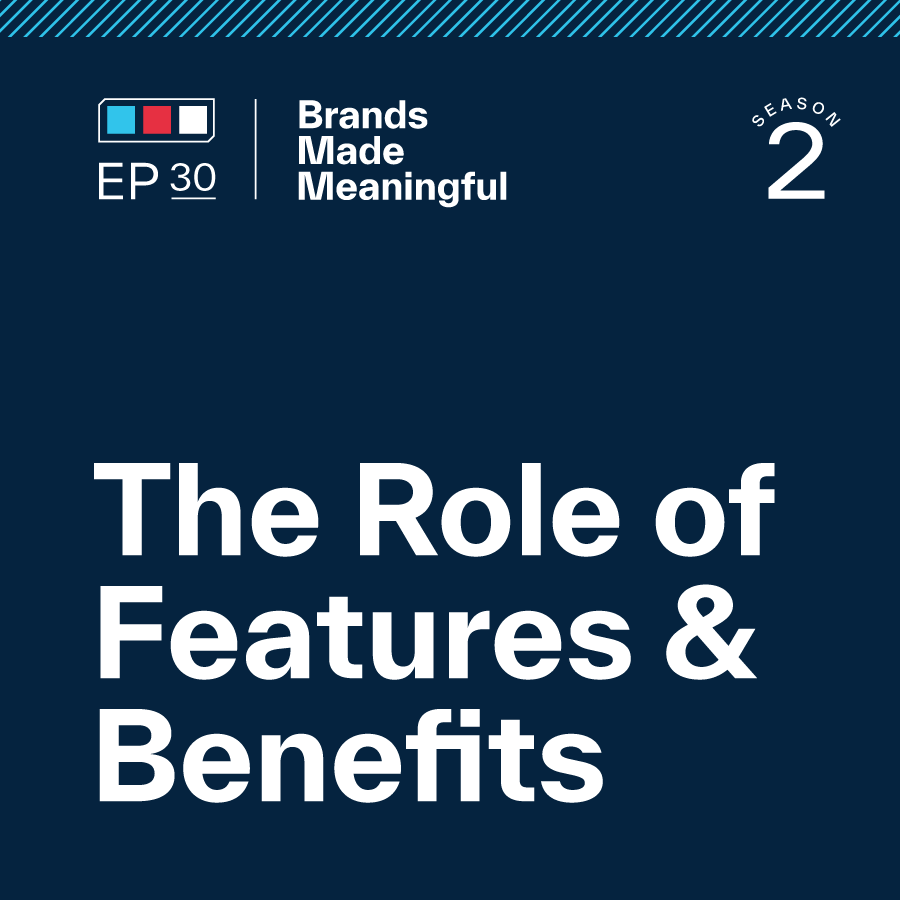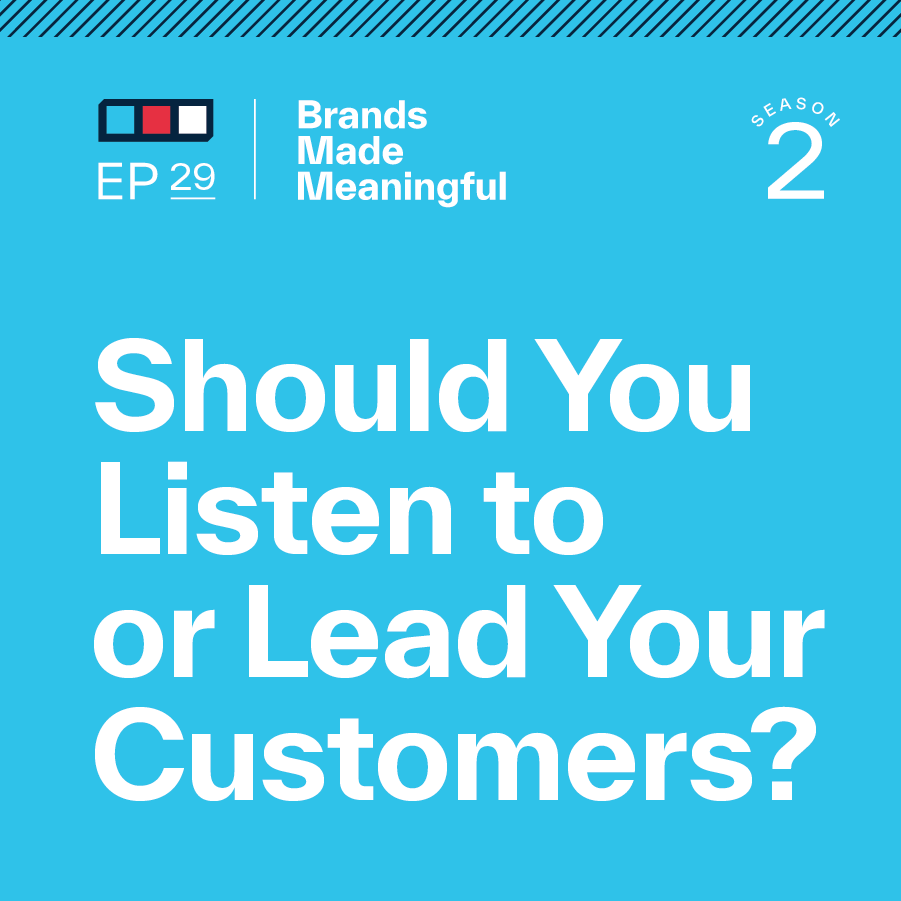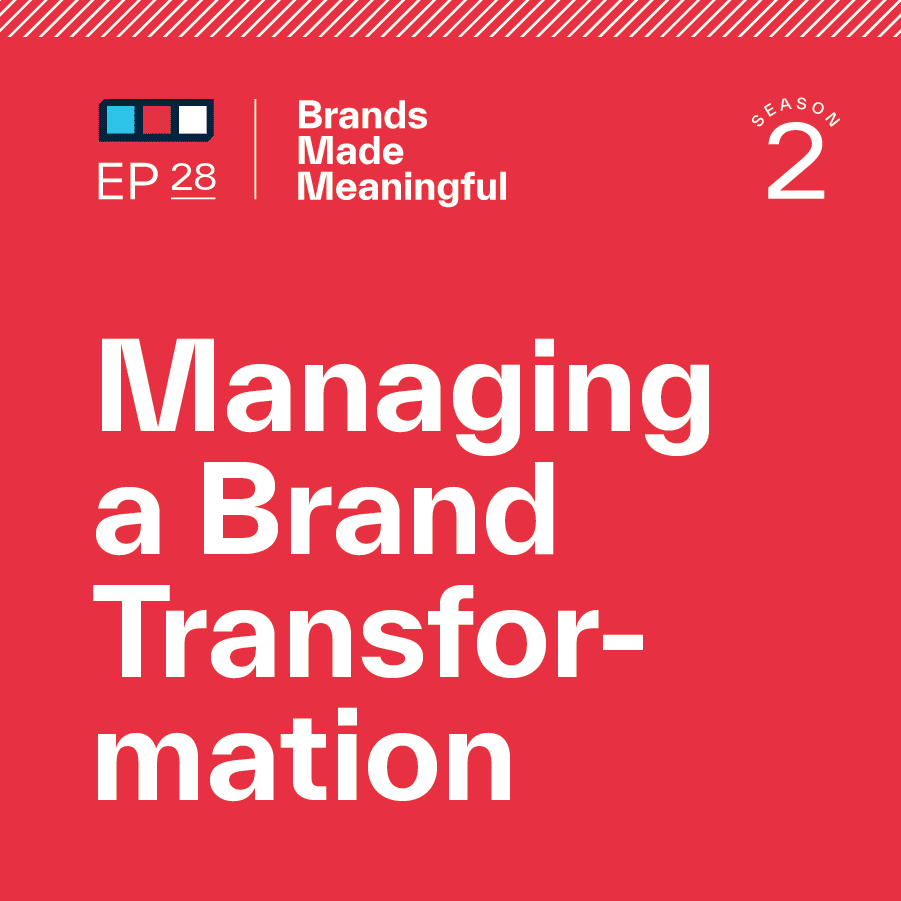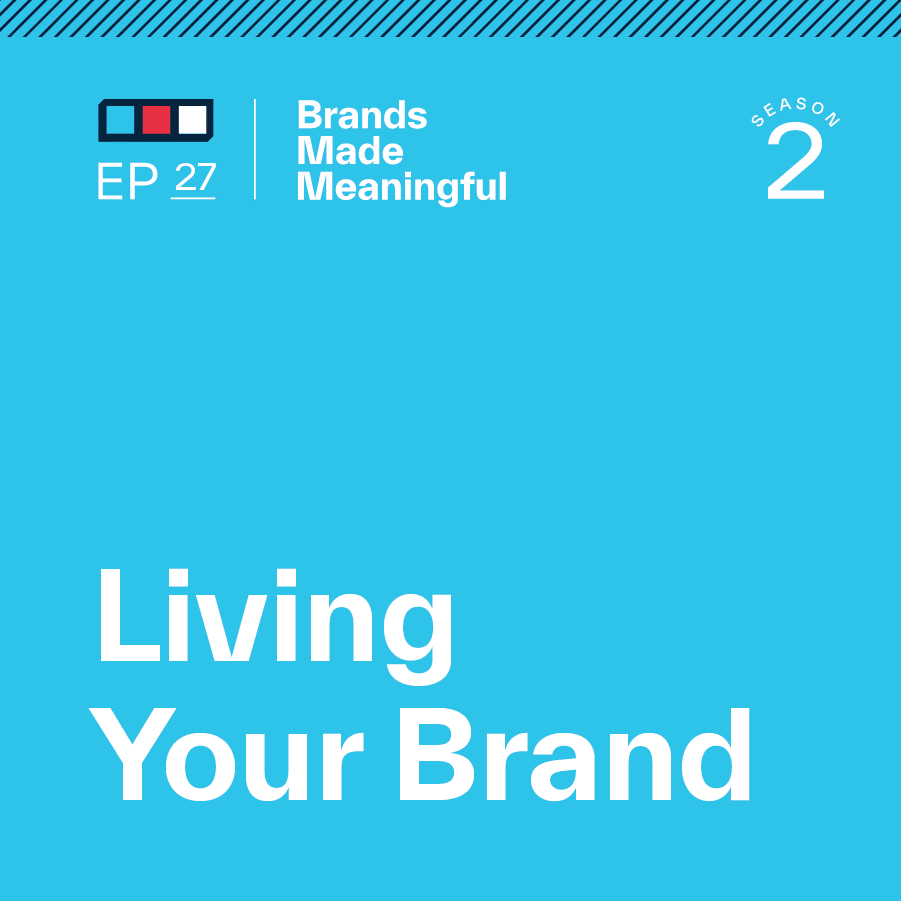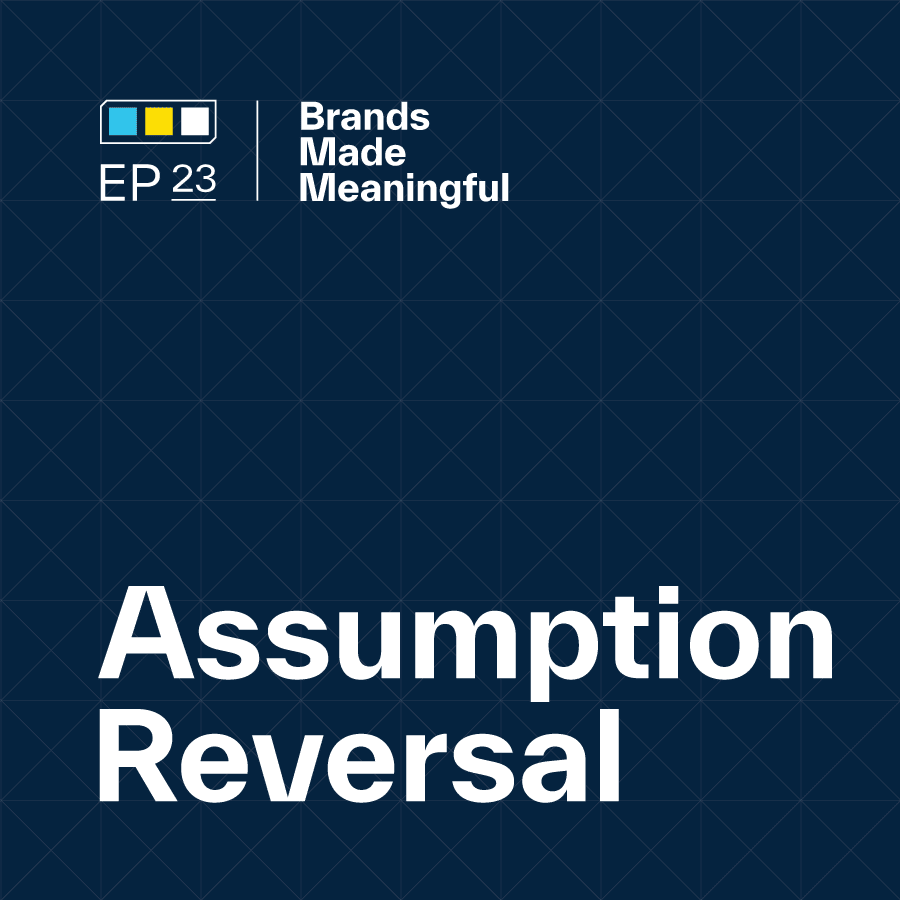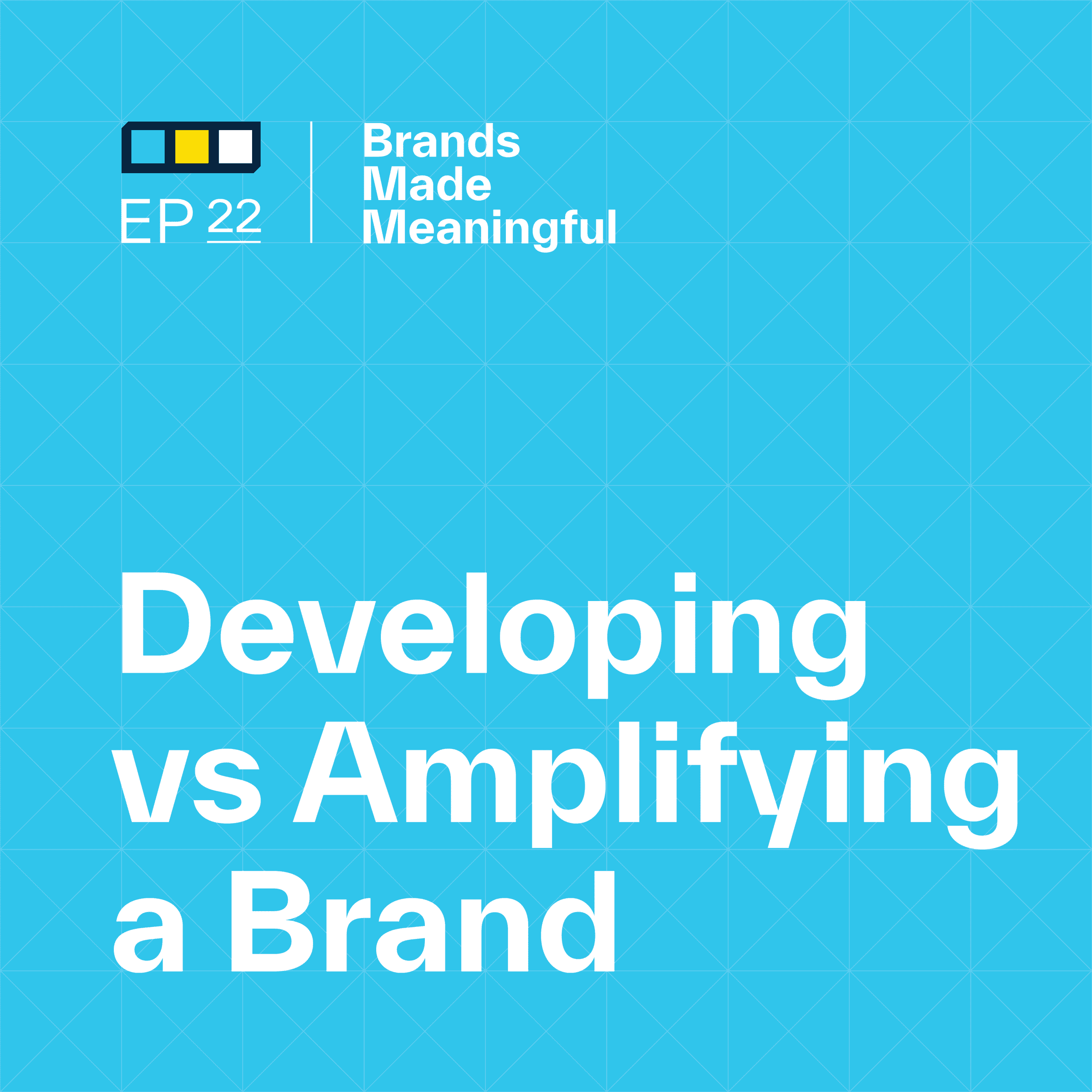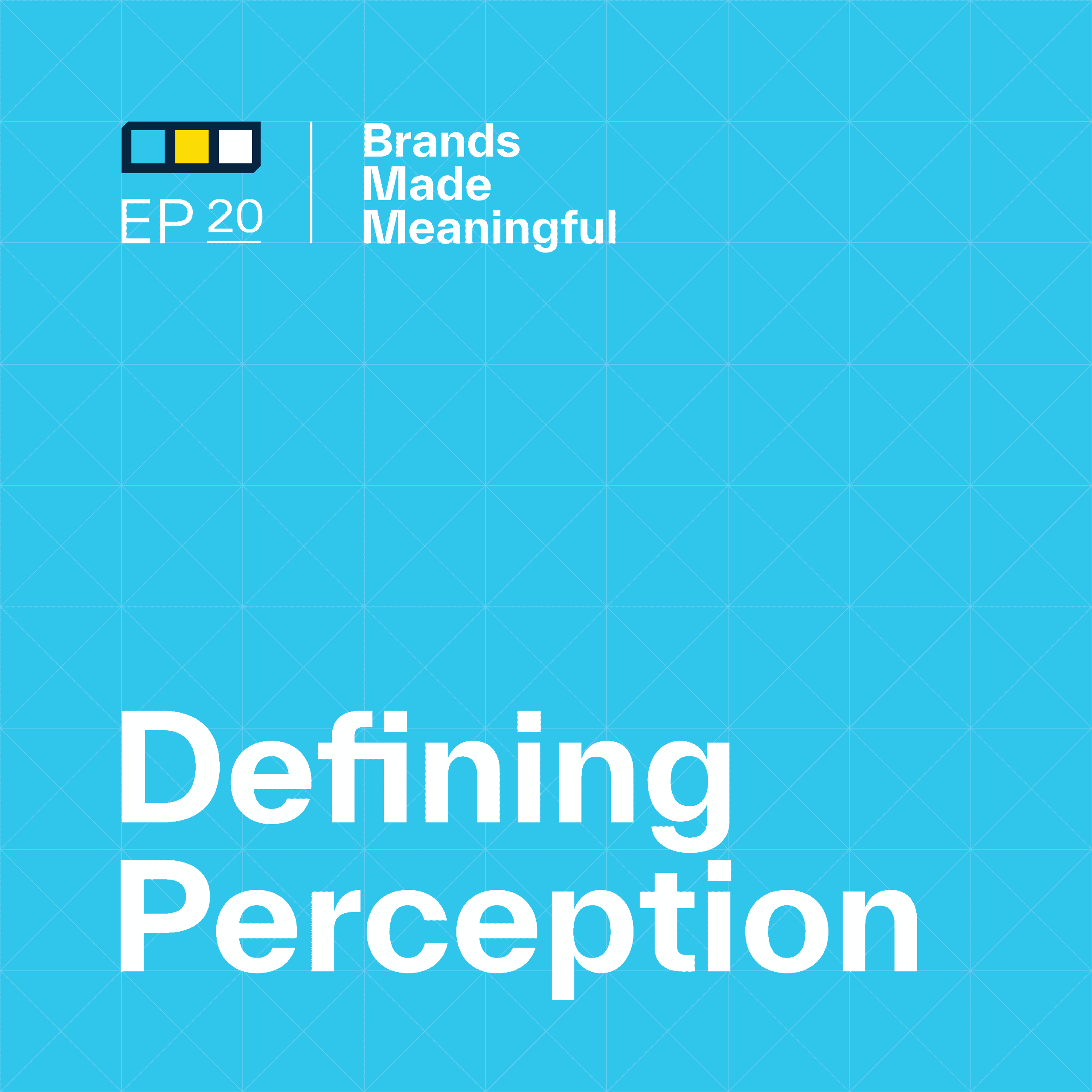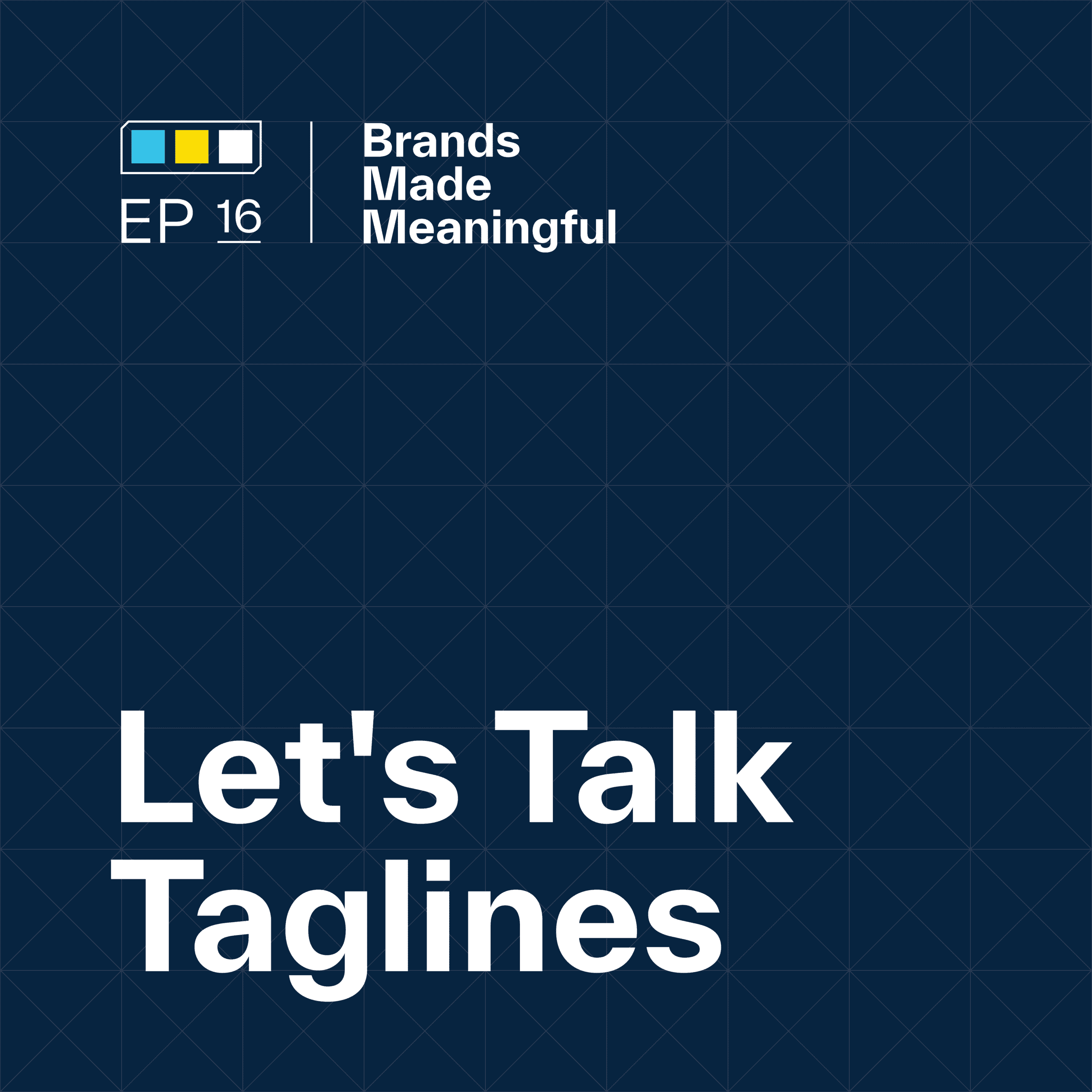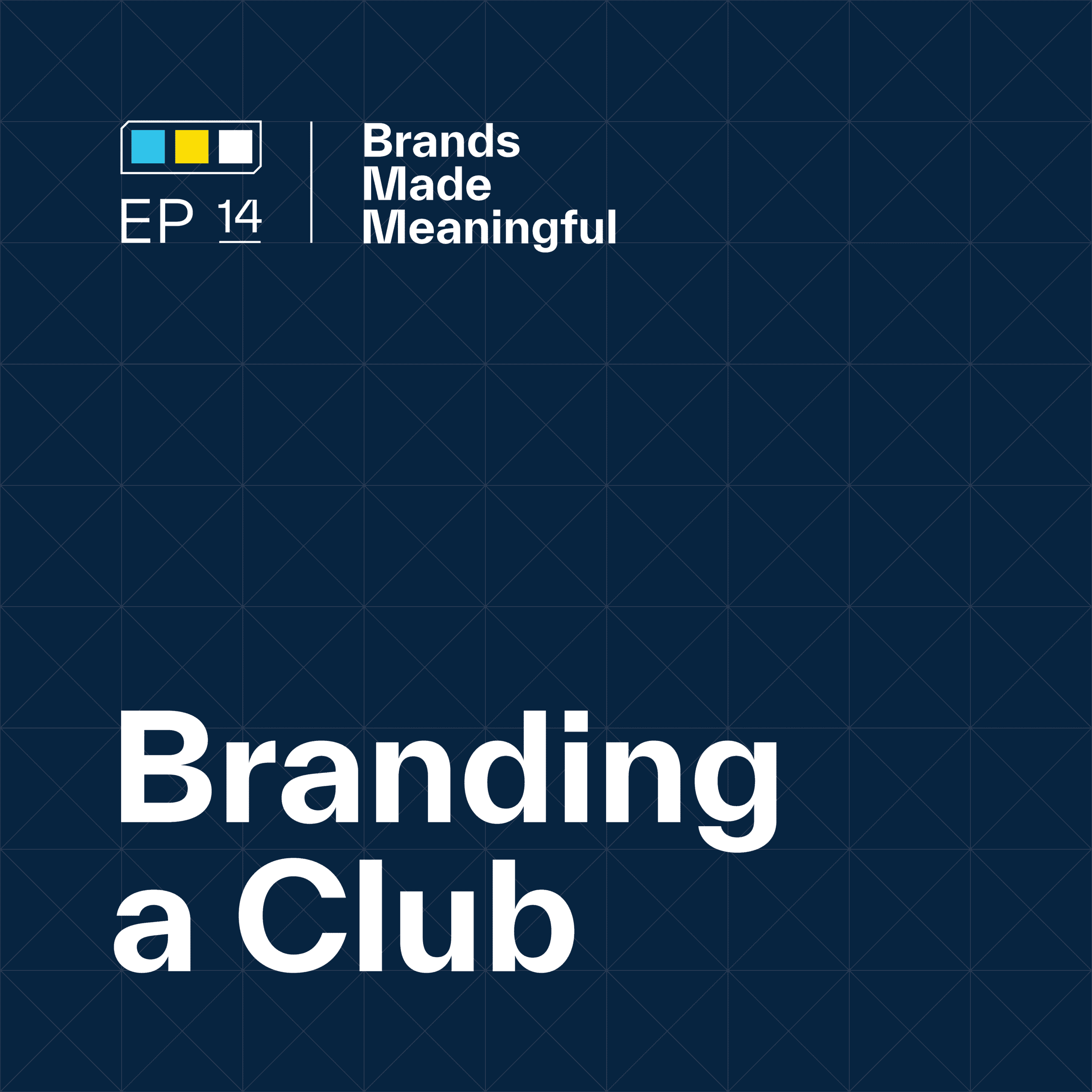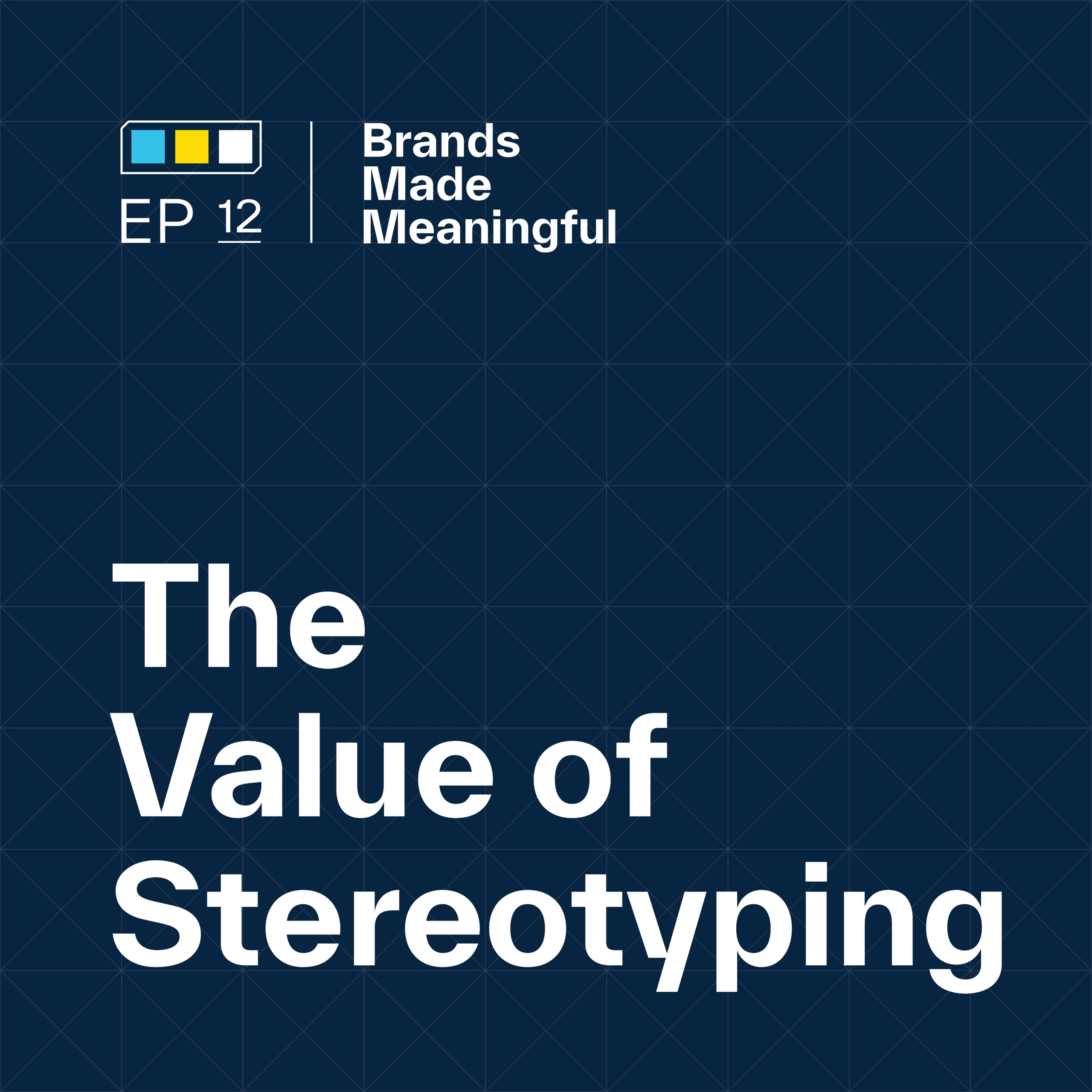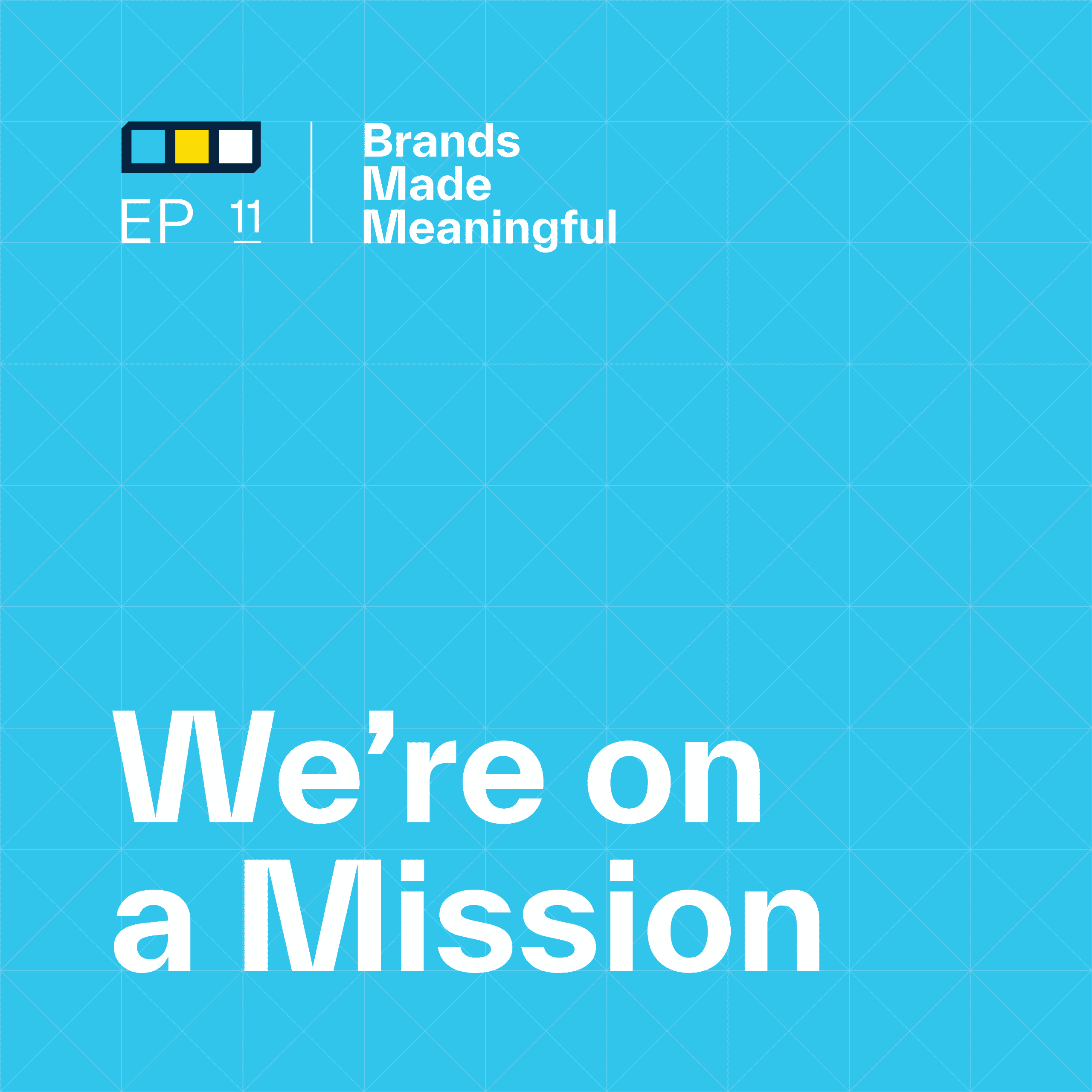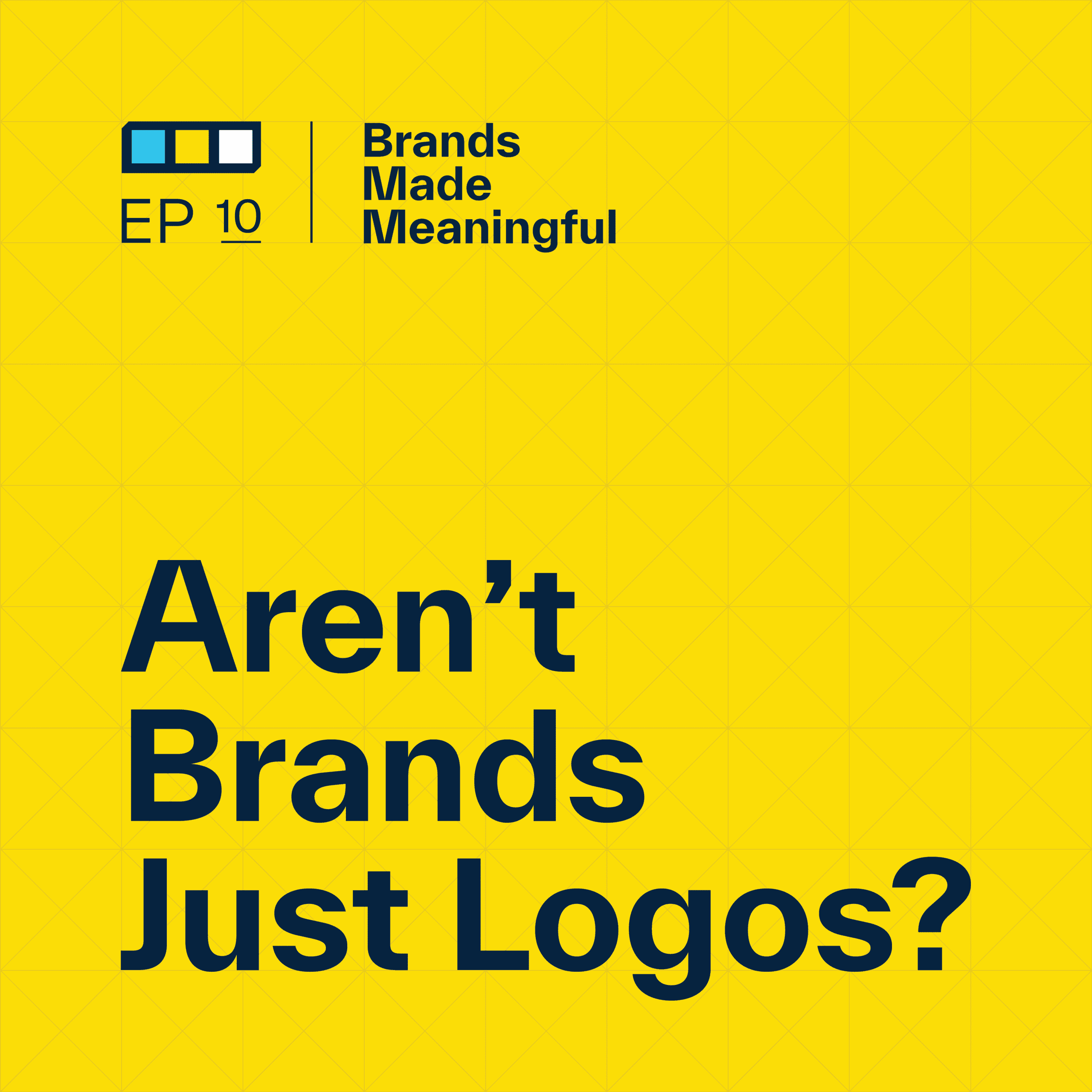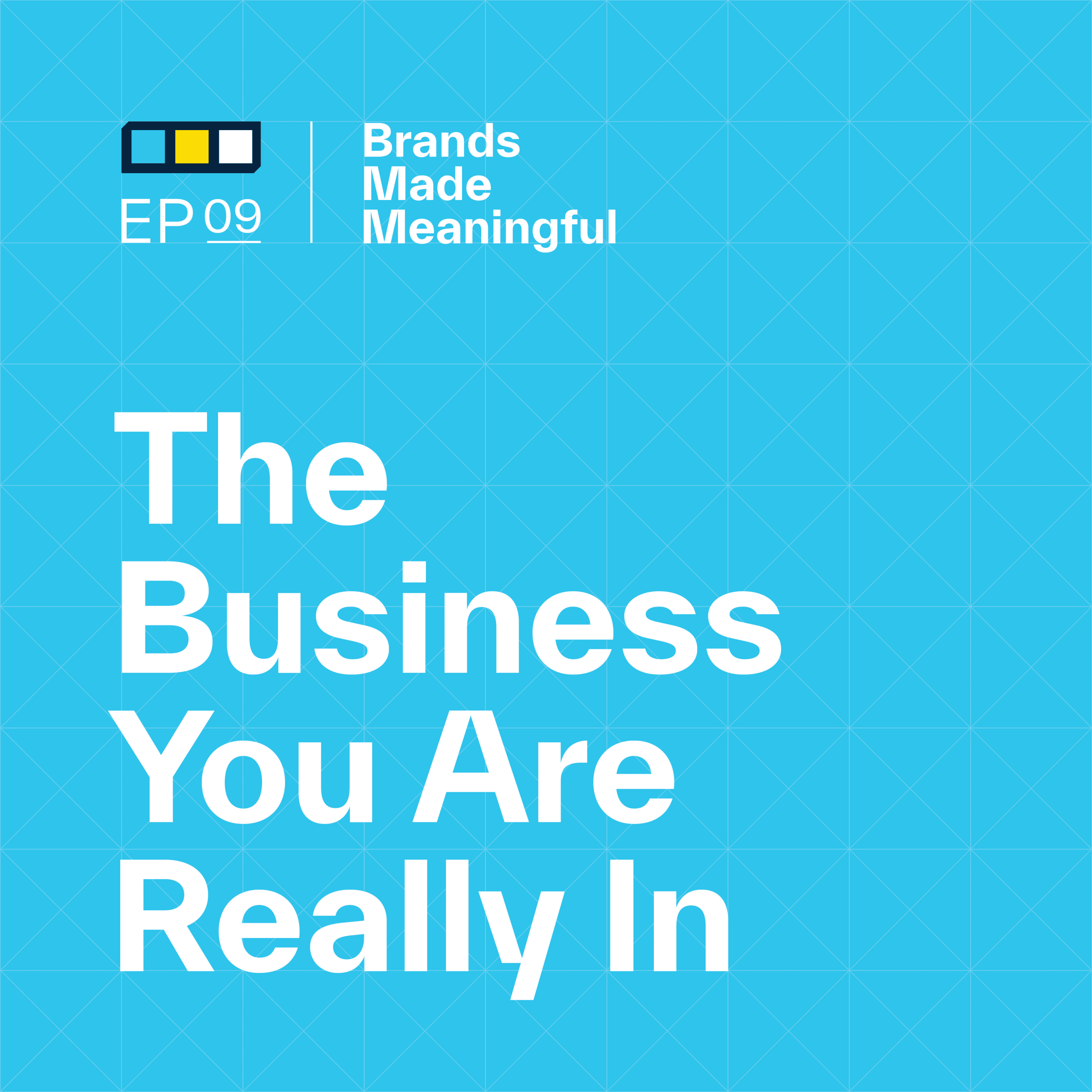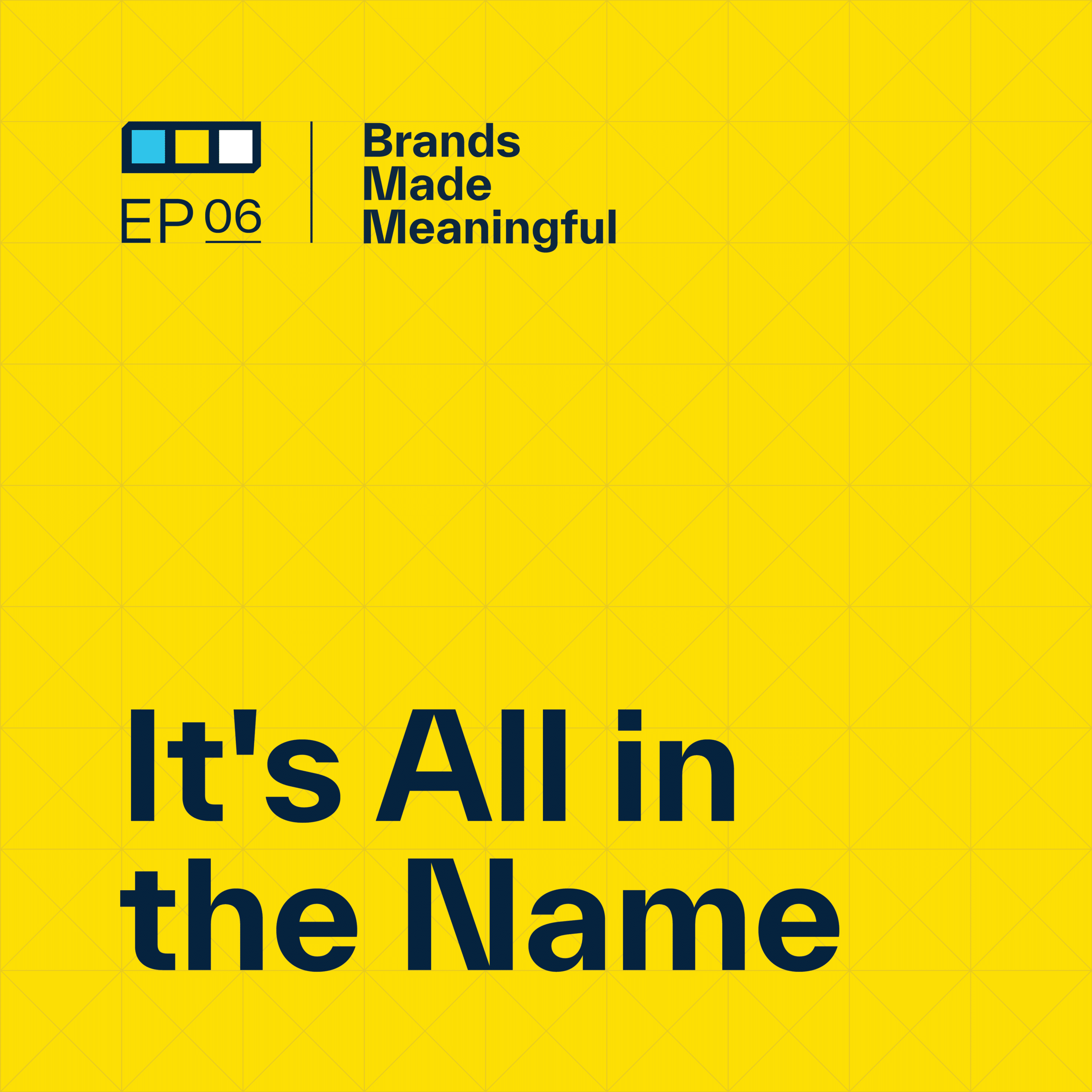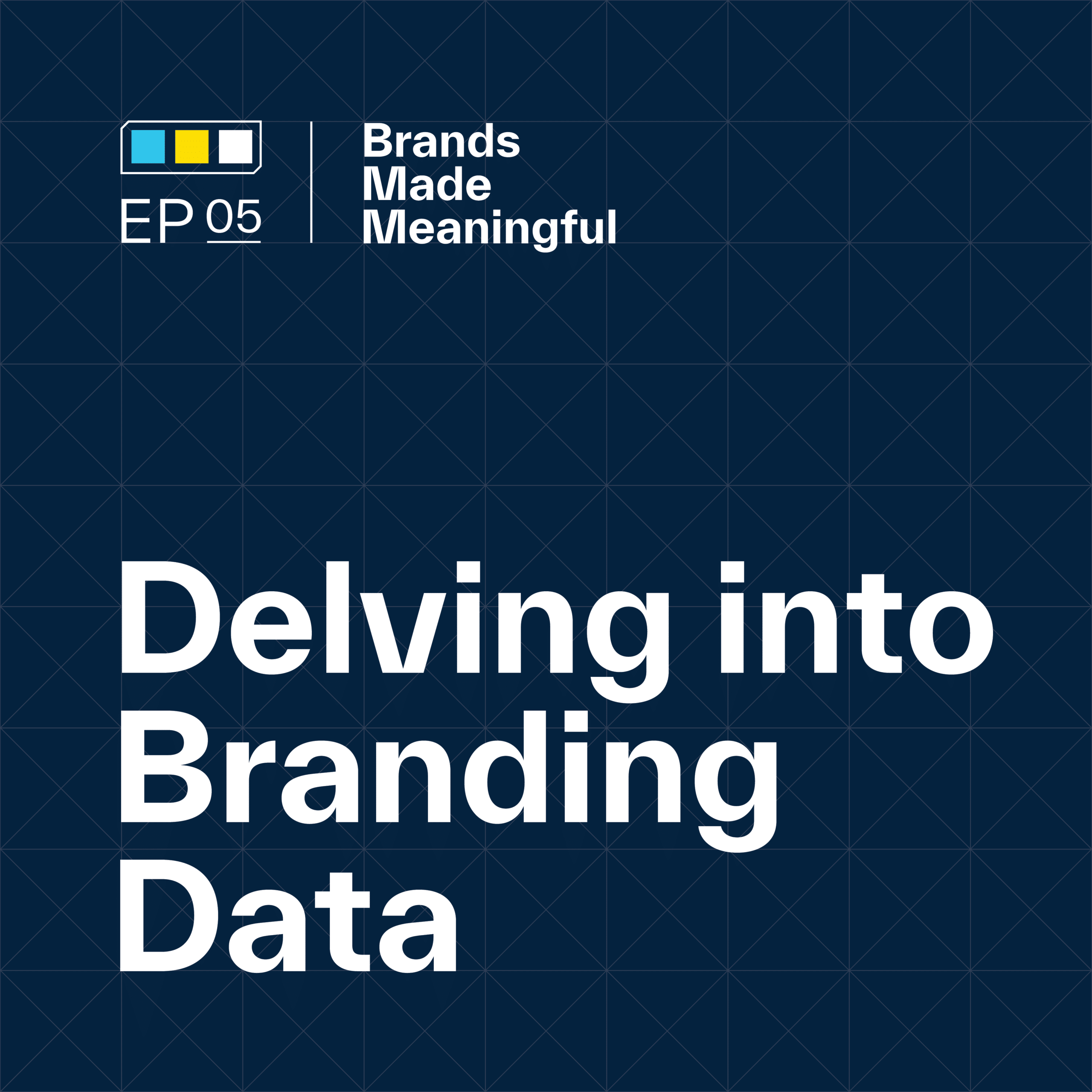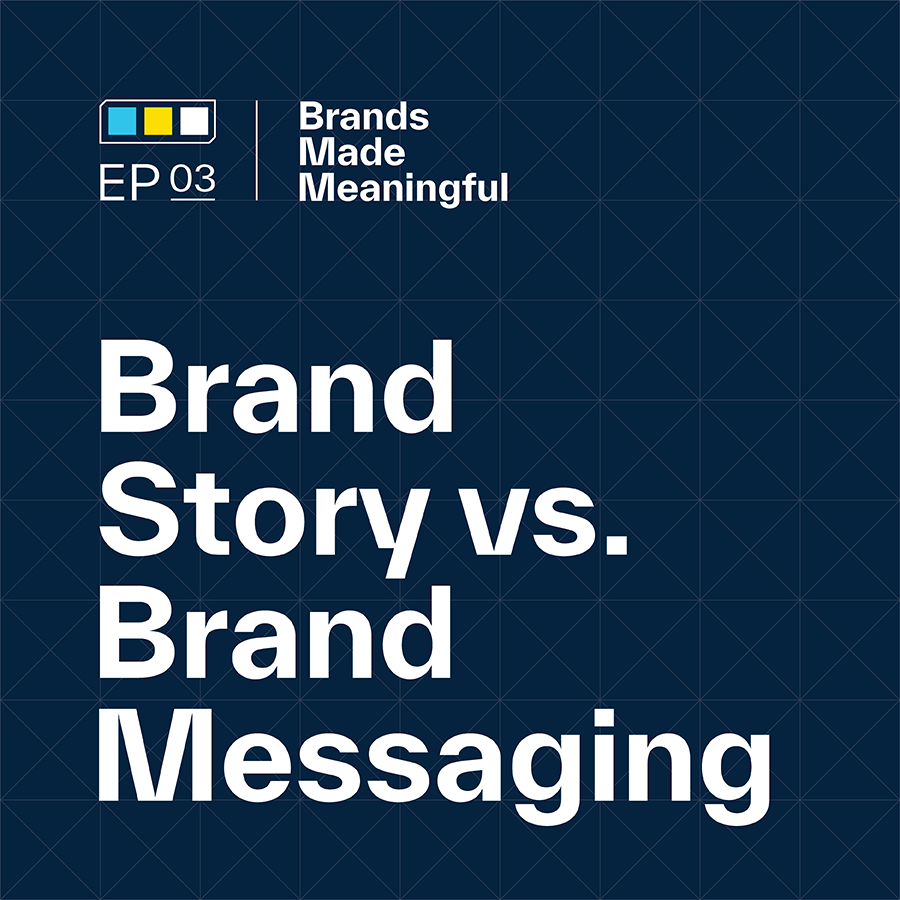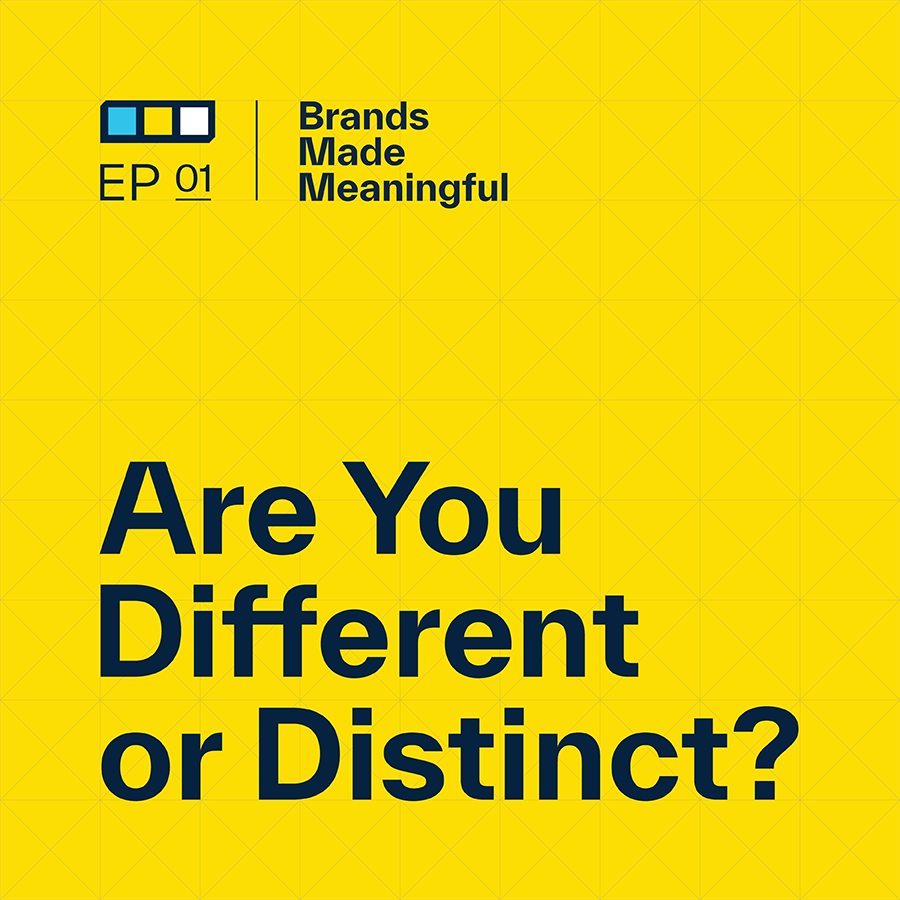EPISODE 07
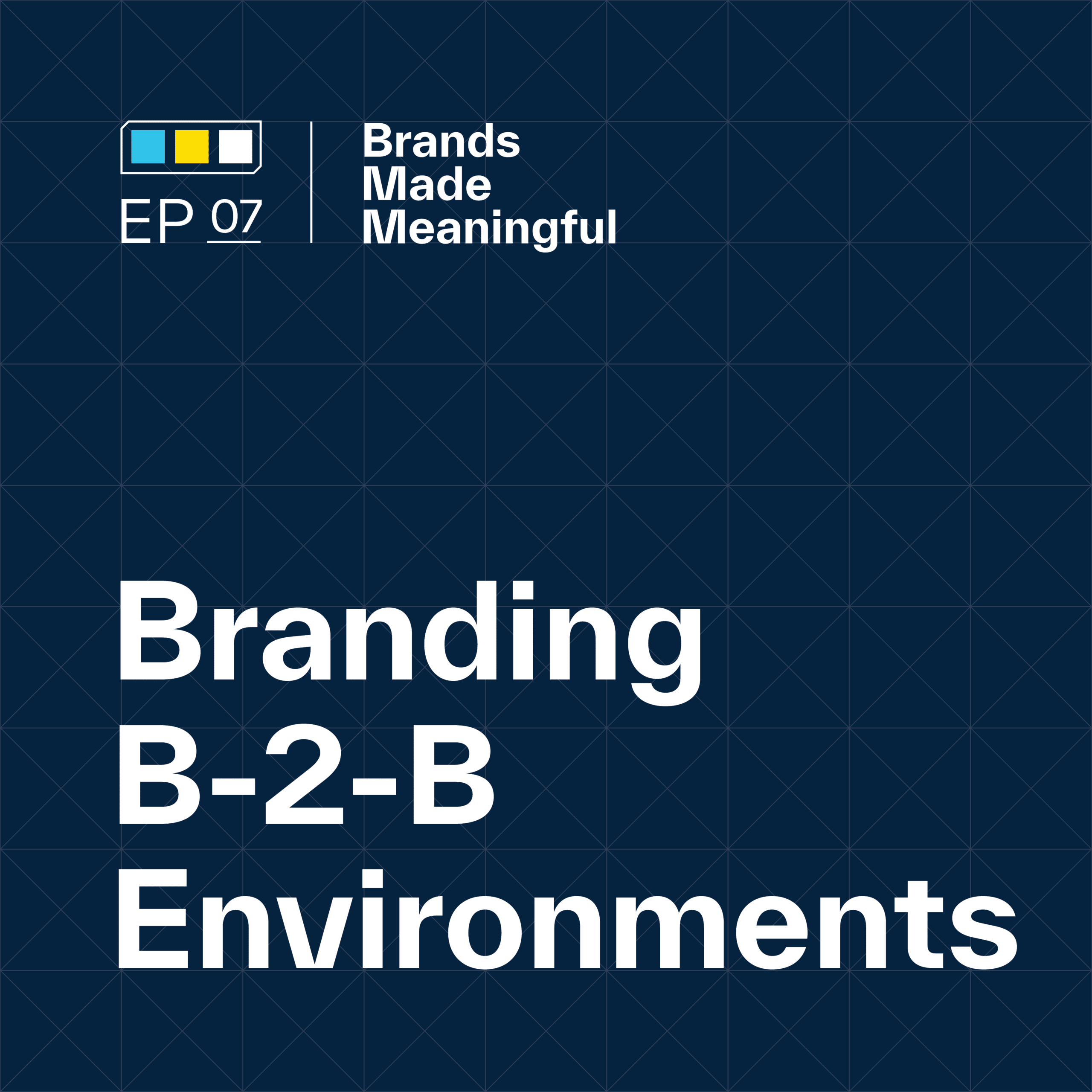
Branding B-2-B Environments
Episode 07
Derek and Tucker discuss the Branding of Spaces.
EPISODE TRANSCRIPTION
In this episode, we’re talking about branded environments.
Tucker
Yeah, branded signage, wayfinding, and not just that, but also when people think of graphics, when they walk in the common spaces or something like that. We’re really talking about B2B environments rather than retail, right?
Derek
Yeah, the branding of spaces. I think when it comes to retail, the people that work in retail, that work in stores, that sell anything in a customer environment, they’re very aware of signage and how to brand the spaces and the environment to make that a welcoming place for people to shop.
Expand Full Transcript
Tucker
And so if you think about when we’re talking about retail, that might be a product display sign or design of like maybe a kiosk. And how does that look? But when we’re talking about B2B spaces we’re really talking about office spaces, common spaces, maybe warehouses. Just the place where business gets done.
Derek
For anybody listening who is connected with the creative industry, the industry itself refers to this as environmental graphics. Which actually causes a lot of confusion.
Tucker
Well, yeah. Because you think of green, right? You think of something that’s environmentally friendly, which confuses our clients all the time. So we refer to it not as that really, it’s just branding environments or experience design. But experience design can even be confusing because that’s like digital or physical experience? So how does that work and what is that work? So there’s a lots of nuances, but how is this any different than interior design? So if you just said environmental design, what’s different are environmental design and interior design?
Derek
And even architecture. Well, architecture in a nutshell, they’re engineering the physical space. Interior designs are experts in lighting, furniture, spatial layout, arrangement of flow, how people move-
Tucker
Through the space-
Derek
And how to decorate that space. What we do complements both of those things. There’s certainly some overlap. But an interior designer or an architect who simply specs your logo in a sign above the reception desk; that is absolutely signage and that is often part of the package that they provide. And one of the things that architects often provide in a package, especially if it’s an initial-build, if it’s a build from scratch versus a remodel or a renovation, they’ll often include a very basic wayfinding or signage package that directs people upstairs, downstairs that the numbers on the outside of whatever the naming, convention of restrooms, conference rooms, etc..
Tucker
Mm hmm, and I think when you look at interior design and some of those things, those really focus on like the fabrics, the furnishings, those things that don’t have specific branded elements within them. So they can absolutely help support and convey some of those things you’re looking for from a branded environment, but they’re not going to include your logo on the wall and some of these other things that will help identify with who that space belongs to.
Derek
From our point of view, in attempting to connect people to these physical places and spaces; it’s leveraging the brand and its visual identity, its messaging, its personality, and infusing that brand personality into the the environments to energize it so that you have what we call a sense of place. So that if you’re in your, say, office environment and somebody walks in that door, maybe even before they get to the door, as they approach the door, they need to know where they’re at.
Tucker
We talk a lot about story on this podcast and what story means. And I think that branding environments is just that next level of saying your space, your environment that you live in, that you work in, that you spend time in, has to convey that same story. It has to tell people that story in their own way, and I think that this is a piece that a lot of clients that we have don’t think about. They don’t feel like it’s as important. Especially in this digital age where people now work from home more and people have more meetings online, and what’s important and what’s not important and that’s probably what we’ll start talking about here.
Derek
Yeah, exactly. I think when it comes to brand, which is what we talk about all the time in these conversations, you know, it’s in the name. People experience a company’s brand in a lot of different ways, and I think we all default to the marketing versions of those ways that a brand is experienced. You mentioned digital; website, people experience your brand and the way that your product is packaged if you’re selling something, in your ads on your LinkedIn feed, even by word of mouth and the language that people use to describe you. But a tangible, physical part of your brand that’s often overlooked in, (we say B2B or business to business, so not necessarily consumer facing environments) but in a business to business brand strategy, one of the things that’s often overlooked are the physical spaces in which you work.
Tucker
Yeah, and I think with those physical spaces, a lot of people consider their clients or the external side when they think about those spaces. But when we find really great results, it’s really with the internal side by, how do your employees see you? When new people off the street come in for an interview and and look at your space, how does that look? How do the warehouse workers feel when they’re working? And those are things that people aren’t thinking about normally. So how can we move that story forward from an internal perspective?
Derek
In branding, and in that in the act of branding, one of the strategies that we’ll talk about often is the approach of of being intentional of how you want to be perceived. How you want to be thought of, how you want the experience of associating with you and your company and your products? How do you want people to describe that? So think of the impression you just mentioned, say, a prospective employee walking in for an interview, the moment they walk through that door, they are presented with an impression.
Tucker
Yeah, and that impression goes a long ways. I mean, a lot of people talk about first impression means the most. If you walk into a space and you’re like, “Wow, this place is kind of dreary.” Do they want to work there? Then they go to your competitor space, and that space is nice and bright and vibrant and conveys the story that they’re moving forward with and inspires people. that can go a long way.
Derek
We actually had a client share that at all costs they would avoid hosting meetings of any sort. They would always go to their clients spaces to meet. And this is kind of right on the beginning of the COVID and work from home and Zoom era where there were more face to face meetings. But in his own words, they were so embarrassed by the state of their own office space that they wouldn’t host anybody to visit. I mean, the good news was they finally recognized that and they did something about that. But for years they worked in an extremely uninspiring space.
Tucker
And I think that makes it hard in general, not even just to have client meetings, but to hold internal meetings in a really sad conference room can be difficult. It can kind of put a damper on what you’re really working towards and this larger vision that you’re trying to chase, and those spaces really help support the energy in the building.
Derek
And we won’t even get into some of those architectural or scientific engineering aspects of the quantity of space one needs to promote productivity, to promote health. There’s an entire aspect of construction companies that build air quality and lighting quality. We’re not even talking about that, that’s that’s also extremely important. But we’re talking about just the basic impression and representation of who you are, what you stand for, what you do, and doing it in a way that supports and energizes and inspires the work that needs to be done and the interactions that can happen in those spaces.
Tucker
So when we’re talking to a client, walk me through the top three things that someone could look at either as problems or even opportunities that you would say, “Here’s a reason why you might consider doing a branding project, a physical branding project.”
Derek
The most common reason somebody reaches out to us about their space is because they’re renovating, they’re building something new, or they’re moving. So moving, renovating into a new space; now you’ve got a blank canvas.
Tucker
Yeah, and I think that’s probably the same time that people call interior designers or anybody else, I think you’re on that same page.
Derek
Yep, so if you’ve got a bunch of blank walls and you’re thinking about painting colors and what do we do in our entryway or reception area or how do we treat the warehouse space in our shipping area? How do we direct people? That blank canvas is the most common one.
Tucker
Okay.
Derek
Then number two, which is what I just started to talk about earlier, is when people, either somebody conveys to them or they self realize, how uninspiring their space is. Many calls that we get around environmental graphics, office signage, spatial branding are motivated because somebody’s space is outdated. They haven’t done anything in a long time, it’s dark, it’s uninspiring, it’s not conveying their culture. We’ve had conversations with really culturally driven, value driven clients who have incredibly passionate leadership and incredibly inspired employees who then say, “Well, if we stand for X, Y and Z, and our culture is about one, two and three, besides just putting a sign on our wall with our core values on it, why shouldn’t our space reflect, support and tell that story of our culture?”
Tucker
Yeah, I think it’s really easy when people look at, let’s say, websites. They think of at all the time where they go, “Oh, here’s our website. This is the way we’re seen digitally. We need to be re-upping this. We need to revamp this.” Now, a lot of people don’t think about their physical spaces, which kind of blows my mind. And I almost think that’s because they sit in it every day and they become used to it. If you think about a lot of people’s houses sometimes just sit and they’re always the same because they’re used to it.
Derek
Well, it’s a great analogy. Think about when you and your significant other decide to host a dinner party or have friends over for dinner. All of a sudden you see those spaces that your guests are going to see with a fresh lens.
Tucker
Yeah, and you get a little nervous.
Derek
And if your first reaction isn’t one of pride or energy or optimism, then it’s quite likely you’re seeing things that all of a sudden need a little tender loving care.
Tucker
I mean, in that same sense, imagine if you had an opportunity to have a client meeting and instead of going virtual (I mean, nowadays everyone’s like, “Oh I’ll just send you a zoom link it’s so much easier”) but you’re so proud of your space, you’re like, “You know what? You should really come in here and let’s have a conversation.” Just that fact of getting someone in your office, especially if it’s an inspiring space, can really move those conversations forward. Whether that’s an employee, maybe it’s a prospective employee, maybe it’s just a client that you’re like, I really want them to feel like we have great value in this and coming to our space would really show that to them. So I think that just like you said, with a house party, it’s the same thing when you think about your office space and you need to feel proud of it so that you can use it properly.
Derek
A note on that work from home piece. First of all, absolutely it’s working out great. Digital aspects, digital tools, working remotely has actually been, I think, a really strong benefit to the way that we are able to do business. But that said, there are certain interactions with prospective employees or prospective customers or current customers that meeting digitally cannot replace.
Tucker
Yeah, I agree. And I mean some of our listeners will probably have clients in different parts of the country or maybe even different countries for that matter, and they can’t do anything about this. But at the same time there’s still, I would say, a value when we sit in most of our meetings, (we actually hold in our conference room with the camera that’s there) the people still see our space. It’s a little bit less recognizable than actually being within it, but you can still tell that there’s something going on.
Derek
And that was leading to my other note, which is your virtual environment is still a physical space that you need to be intentional about. So the background of your Zoom meeting or teams meeting still can be curated in such a way that it reflects the attitude and personality of your brand.
Tucker
We had a client, we actually had multiple clients come to us with the idea of a Zoom background or a microsoft teams background. And they said, “Hey, we’re not in the office anymore. We’re not holding these meetings (because they’re all virtual at this point) but we still have that need for space.” And so this Zoom background became their environment that they were kind of displaying. That same idea needs to be applied when you are in a physical space. So it’s interesting because it’s virtual, it’s just easier to understand and it’s acceptable for some reason. But these physical spaces are really interesting.
Derek
A third reason that prompts these conversations with customers quite often goes back to prospective employees and the recruiting aspect. Back to that. We talked about this a little bit already, but the pride in presenting that space and the first impression that especially now, recruiting talent is a challenge-
Tucker
Absolutely-
Derek
For many, many industries. And how to give them a reason to choose you over somebody else, especially if the financial packages are comparable, it often will come down to your brand. And by way of extension, whether you’re working from the office or at home or in a hybrid model, that office environment and that physical space in which you interact with them is critical as part of that recruiting tool.
Tucker
Yeah, I think that almost conveys the value of your company, right? When you walk into a space and you’re a prospective employee and you’re like, “Oh, do I really want to work here?” And you walk into a space and you’re inspired and you feel like there’s something great happening here, that makes you feel like this is it. This is where I need to be. This is that company that’s doing something. That’s just the goal of all of these things. If someone goes, “I’m trying to really inspire employees. How do I do that?” If someone wanted to do one of those three things where you said maybe they’re trying to recruit top talent, maybe they’re moving, and there’s a really great opportunity because you have blank walls, blank canvases to really do something. Or you have this opportunity to host more people or you want to feel pride in your space and you’re not moving, you’re just saying, “I need to be able to do this,” because maybe we’re going back to work, maybe we’re going hybrid or something like that. So if those are the three things that are symptoms or we’re saying that’s what people are calling us for, how can someone start? How can someone really start thinking about, what do I need to brand the space? Do I just reach out to you and you guys do it? Or what are some things I need to start considering as we move forward?
Derek
I think there are a few things that rise to the top within that consideration. And these are things that we’re thinking about with our goal of making the physical spaces in which you work (and that can be, like I said, that ranges from warehouse space to corporate office space to retail space, even though we’re not focusing on the the retail aspect of this today) it’s to get those spaces to become a seamless extension of your culture and your brand. And so there’s a handful of things that somebody can consider without getting deep into the tactics of materials and types of signs and signage sizes. You have an opportunity to connect people to your culture, and one of the ways to do that is by leaning into what we refer to as the foundational aspects of your brand.
Tucker
Yeah, so get into that a little bit. What pieces would they lean into?
Derek
From a real process oriented approach, what we would hold that up against are the desired characteristics and how you want to be perceived. So there’s an exercise that we do that helps our clients get to half a dozen attributes, adjectives that, when combined, start to craft a really nice guidepost, that when combined describe the way that we want our brand to be perceived. And I would use those exact same five, six, seven words to make sure that describes the space. So is it relatable or exclusive?
Tucker
I think when we move through those, either or, when you’re going relatable or exclusive? Is it bold or is it humble? Or is it these or that? Or how do we start wanting to be felt? I think that, yeah, it’s a great starting post. I think another thing from someone’s foundation or the core of their brand that really needs to move forward are those guiding principles, the purpose, the mission, the vision. Maybe those don’t go up on the wall because sometimes people think of those pieces as being a little corny to just throw up on the wall like, “Hey, here’s our mission up on the wall.” But those should really guide the, “Are we conveying that this is where we’re going and this is who we are?” And I think those are very interesting as guideposts, not necessarily just placeholders.
Derek
Yeah. We’ll get deep into this aspect in a future conversation, but one of my favorite parts of the brand foundation process that we work on is getting to a one word answer that describes what we refer to as the business that you’re really in.
Tucker
Yeah, the brand essence.
Derek
The brand ethos, that one thing that people want from your brand on an emotional level that can summarize the whole thing, that doesn’t necessarily speak to the products that you sell, but speaks to this emotion that it conveys.
Tucker
Exactly.
Derek
So imagine walking into an office space and saying, “Yep, this company is all about confidence.”
Tucker
Yeah. And that looks so much different than a space that’s all about unity. Right? And you can start kind of picturing this, “Okay, so maybe the walls have this type of graphic on it, or maybe this is the type of wording that we use across the front wall.” And those really start helping move it in the direction of that story that we’re really trying to convey.
Derek
Well and that jumps into one of the other solutions that can help; is utilizing some of that language on your walls. And that can be the mission statement, especially if it’s done well. But it can also be branded language and messaging that’s stretched out in your own brand personality that is more of an inspirational, aspirational mantra that talks about what it is that’s going on in these spaces.
Tucker
We had a client a couple of years ago work on a project and they really had nothing like that. They wanted a new space. They wanted to do all this stuff and you can talk to this as well, Derek. But when it kind of came down to it, they didn’t necessarily want words on their wall. They just wanted graphics. But those words make a really big difference in someone reading it. And and when they’re crafted, right then the internal culture gets amplified onto the wall where you’re not being told it every day, you’re just reading it. And it’s this back of the mind, seeing it, seeing it, seeing it. Yep, that’s what we’re all about. That’s what we’re doing here. That goes a long ways that people don’t quite understand it.
Derek
That type of execution is going to leave an impression. And when you do have the opportunity to host somebody else within the places and spaces that you’re meeting them, those words and images and the things that go beyond the couches and the chairs and the furniture and the carpets, that go beyond just the (say decoration, that gets applied, I kind of go to the generic frame posters or artwork that you might get in a hotel) which looks great, makes the wall not look bare, but doesn’t tell a story necessarily.
Tucker
It could.
Derek
Some of the better ones do.
Tucker
I think really great interior designers do an awesome job of getting that story and saying, well, let’s convey that story through furnishings, through paintings, through this thing, and how are we telling that story? So I think yes, it absolutely can. What most people don’t realize is that it’s more than just the furnishings. And it can be a painting on the wall, and that’s great. But at the same time, there’s really nothing that replaces an original piece of art or a piece of work that does a lot of the heavy lifting for you in telling that story. So how about you talk a little bit about how we approach signage, and I know that over the last two decades, you’ve had incredible amounts of experience in all these different spaces. So how about you just talk about that a little bit.
Derek
The process really isn’t too scientific, and it’s probably not unlike how an interior designer or an architect would approach it. As we’ve seen when we’ve come alongside them in a handful of different opportunities that we’ve worked on. But for us, the first part I would say there’s two sides to it. Part of it, within our discovery, is understanding the space itself. Sometimes it exists and it’s being demoed or built. Sometimes it hasn’t been built yet so we’re experiencing it through blueprints and drawings. Then at the same time, it’s understanding the experience of the brand and what it is that client’s companies brand stands for, and what their goals are with their space. The space can be extremely functional and extremely hardworking, but the personality from organization to organization to organization differs drastically, just like it does from person to person to person.
Tucker
Yeah, I think this is also something that can be a differentiator, or maybe a distinction point, not differentiation. But when we look at, if you’re going from our office to a competitor’s office, it should look different. We should have different fields because we don’t have the same story. So that’s an important part of saying it can’t just be generically updated. It should really be tailored to what you do. But when someone comes to us and they say, “Well, I want to do these things,” and we say, “Okay, look, what are the goals of this? What are the goals of what we’re trying to do here?” And I think it really revolves around retention, onboarding. When someone comes and they already got the job and it’s like, how are we onboarding them and how are we walking them through our space and how do they get inspired every day? And then it’s also engagement and trying to gain this customer over time. Not customer engagement, but employee engagement and saying, how do we really keep people in tune with what we’re going for here? And maybe that’s updating the space every five years because we have a new direction and we’re moving this way. Or maybe that’s adding a graphic in this area because it makes a big difference. So some of those things, it’s interesting to say, how do we approach it? Well, I mean, absolutely, you can do a lot with a lot of different budgets. But what we approach it with first is what are we trying to tell? How are we trying to tell the story and what’s the space we’re trying to tell it in?
Derek
Yeah, that’s exactly it. It’s the same parameters as helping somebody craft a message, helping somebody work on some portion of their identity. It’s back to helping them communicate, helping them differentiate and be distinct and helping with that engagement. And it is customer engagement, business to business, pet vendor or partner engagement and absolutely employee engagement too.
Tucker
Yeah. So any takeaways before we sign off here?
Derek
An effectively branded environment can be extremely inspirational and motivational. It can be a closing tool from a sales standpoint. It can be a closing tool from a perspective employee standpoint. And think about especially if you’re not working from home and you’re working in that space and you’re there for six, eight, ten, twelve hours a day loving and being energized by the space that you live in.
Tucker
You got to make those spaces special.
Derek
Use them to tell your story.
Tucker
Absolutely. All right. Till next time.
More Episodes Like This
Taking Care of the People Who Take Care of PeopleEpisode 90
Derek and Tucker are joined by Craig Pratt, co-founder and board chair of the nonprofit organization Holes Fore Hope.
Reviving New Member InterestEpisode 89
Derek and Tucker explore options for generating interest among prospective members and inspiring them to join your club.
Brand Through the Eyes of a Club Manager & Consultant with Chris CoulterEpisode 88
Chris Coulter, Vice President of Club Consulting with the McMahon Group, joins Derek and Tucker to discuss the intersection of branding and consulting in private clubs.
Evolving Member ExpectationsEpisode 87
Derek and Tucker dive into the differences between generational club members, their wants and needs, and how to balance out expectations across the board.
Winning the Talent Game with Tom WallaceEpisode 86
Tom Wallace of Kopplin, Kuebler, & Wallace joins Derek and Tucker to discuss the importance of a club’s brand in hiring and retaining right-fit employees.
Reclaiming Reputation Through Brand RevitalizationEpisode 85
Derek and Tucker discuss the potential that a branding initiative can have to restore a club’s reputation.
Branding The Club with Don KovacovichEpisode 84
Don Kovacovich, GM of The Club at Golden Valley, joins Derek & Tucker to discuss the impact that rebranding has had on his club and the opportunity it presents for other clubs
Changing a Club’s Membership ModelEpisode 83
Derek and Tucker discuss key considerations and challenges when changing your club’s membership model.
Connecting a Club with its Story with Jackie CarpenterEpisode 82
Derek and Tucker are joined today by Jackie Carpenter, author of People First.
Branding a Club AnniversaryEpisode 81
Derek and Tucker discuss the unique opportunity presented by milestone and anniversary dates for private clubs.
Private Club Storytelling with Ricky L. Potts, Jr., CCMEpisode 80
Derek and Tucker have the pleasure to speak with Ricky L. Potts Jr. about how powerful storytelling can be for your club members.
Opportunity in Club Facility RenovationEpisode 79
Derek and Tucker discuss pivotal key moments in your legacy and how to transform your story through renovation.
The Evolution of Club Members with Jon LastEpisode 78
Derek and Tucker are joined by Jon Last from Sports & Leisure Research Group to discuss the evolution of club members.
Member Branding vs. Product BrandingEpisode 77
Derek and Tucker discuss the challenges their client's have moved through when approaching differing styles of branding.
The Role of a Private Club's LogoEpisode 76
Derek and Tucker take a look back on private club logos they've designed over the years and explain the strategic reasons behind their choices.
Club Brand GovernanceEpisode 75
Derek and Tucker divulge the steps to evolving your brand while retaining your core values.
Seasonal Member MerchandiseEpisode 74
Derek and Tucker take a look at crafting specific merch to celebrate landmarks and special times of the year.
Who is Sussner?Episode 73
Derek and Tucker take a break from talking shop to talk about who they are and what they stand for.
Club Identities Beyond AmenitiesEpisode 72
Derek and Tucker discuss what it takes to stand out in unique ways for your club.
Little Things Mean EverythingEpisode 71
Derek and Tucker take a look at the often missed and easy to overlook.
Build Flexible Brand SystemsEpisode 70
Derek and Tucker break down the building blocks for long lasting branding.
The Club at Golden ValleyEpisode 69
Derek and Tucker take a close look at one of their recent rebrands.
When to Launch a Club RebrandEpisode 68
Derek and Tucker break down how to find the perfect timing when launching a club rebrand.
Steps to Launching a Club RebrandEpisode 67
Derek and Tucker break down the steps to take and the reasons why you should consider a club rebranding.
Brand Marketing vs. Brand DesignEpisode 66
Derek and Tucker define the line between marketing and design and how they intersect to inform one another.
Building Brand GuidelinesEpisode 65
Derek and Tucker show us how to build infrastructure guidelines to unify your brand experience across the board.
Club Identity SystemsEpisode 64
Derek and Tucker cover what Identity Systems entail and how to discern between internal and external methodologies.
Navigating Branding With a BoardEpisode 63
Derek and Tucker bring clarity to uniting your company under one cohesive vision.
Putting a Committee TogetherEpisode 62
Derek and Tucker assemble your need-to-know facts when putting together your committee.
The Guiding Principles of Private ClubsEpisode 61
Derek and Tucker go over the top ways private clubs can find the balance between pleasing old members while attracting new ones, all while making moves towards the future.
How Color Affects PerceptionEpisode 60
Derek and Tucker cover how to best convey your business with color.
Brand EcosystemsEpisode 59
Derek and Tucker break down how to craft effortless experiences when considering your brand as a whole.
6 Types of Brand TransformationEpisode 58
Derek and Tucker dive into 6 distinct types of transformations for a wide range of brands.
Tournament Branding For ClubsEpisode 57
Derek and Tucker discuss designing and delighting your club members with tailored events.
Brand Promoters & DetractorsEpisode 56
Derek and Tucker discuss how high level promoters increase your NPS and how to turn the tides on your detractors.
The Loudest Voices in the RoomEpisode 55
Derek and Tucker talk about gathering feedback while prioritizing every voice.
Determining A Primary AudienceEpisode 54
Derek and Tucker discuss if and when you should be honing in on your audience vs. casting as wide a net as possible.
Branding For ExclusivityEpisode 53
Derek and Tucker discuss the intricate process of naming your brand.
Measuring Brand SuccessEpisode 52
Derek and Tucker discuss how we measure our success in branding and a few key KPIs that help us understand our impact.
Branding For ExclusivityEpisode 51
Derek and Tucker breakdown how brands can create the perception that they are exclusive and only for a certain type of consumer.
What Makes A Brand SurprisingEpisode 50
Derek and Tucker break down the Sussner formula that we believe leads to a surprising brand.
Breathe Life Into Brand TraditionEpisode 49
Derek and Tucker discuss the intricacies and common pitfalls of branding for Private Golf Clubs.
They Key of Visual DifferentiationEpisode 48
Derek and Tucker break down the importance of differentiating your brand on a visual level.
Branding For Private GolfEpisode 47
Derek and Tucker discuss the intricacies and common pitfalls of branding for Private Golf Clubs.
Dealing With An Identity CrisisEpisode 46
Derek and Tucker breakdown how to identify and remedy a brand's identity crisis throughout thoughtful and intentional brand management.
Branding vs MarketingEpisode 45
Derek and Tucker discuss the differences between Branding and Marketing and how to make the two compliment each other.
Build Your Brand's FoundationEpisode 44
A brand's foundation is a critical element in being successful in the long-term.
Building a Constructive Branding ProcessEpisode 43
Derek and Tucker break down the steps required to build the most constructive and meaningful branding process.
What Makes a Brand Relevant?Episode 42
Relevance is a key piece of a brand's identity for creating clarity and connection.
Your Right to WinEpisode 41
Derek and Tucker discuss the “Right to Win” and the odds of your brand's success within your target market.
An Intro to Sub BrandingEpisode 40
Derek and Tucker discuss the nuances of developing sub-branding and strategies.
Conquer Branding FearsEpisode 39
Derek and Tucker dive into how to overcome the fear of change and the nature of constant refinement of your brand.
Balancing Strategy & DesignEpisode 38
Great strategy is a necessary foundation for great design—and great design brings great strategy to life.
Branding PrioritiesEpisode 37
Branding priorities are the actions and initiatives that shape or enhance a brand's identity, perception, and market position.
Invest in Your BrandEpisode 36
Investing in your brand benefits your company as a competitor in the marketplace, builds trust with customers, increases perception of quality, and drives employee engagement.
Why is Positioning Scary?Episode 35
Narrowing the brand's position is really a strategic decision to focus the brand's offerings, messaging and target audience on a specific niche or segment within the market.
What Are Brand Consultants?Episode 34
Derek and Tucker discuss the importance of hiring expertise with a wider breadth of knowledge than just visuals.
Hire for Brand FitEpisode 33
Hiring people that fit your brand is key in order to maintain brand authenticity, positive culture, and consistent messaging.
Your Brand’s Stance MattersEpisode 32
Your stance can help define your brand from a core level and make branding, hiring, and marketing not only easier, but more meaningful.
Levels of Executing a Brand RefreshEpisode 31
If you have a brand strategy in place, how do you execute it?
The Role of Features & BenefitsEpisode 30
Derek and Tucker discuss the importance of features and benefits within the context of branding, selling, and marketing your products and services.
Should You Listen To or Lead Your Customers?Episode 29
Within the challenge of any rebrand is the challenge of managing customers' perception of change.
Managing a Brand TransformationEpisode 28
Episode 28 discusses the highlights and challenges of rolling out a new brand, both internally and externally.
Living Your BrandEpisode 27
Your brand is not this shiny trophy on the shelf. It is something that you are molding every single day.
What Makes a Brand Authentic?Episode 26
Season 2 starts off with a discussion about building authentic brand experiences, both internally and externally.
Reviewing your Competition's CreativeEpisode 25
Derek and Tucker discuss the process of reviewing your competitors' creative strategy to better position your brand within the market.
Interviewing your Audience for InsightsEpisode 24
This episode details the process and benefits of interviewing your audience as part of the branding process.
Assumption ReversalEpisode 23
Derek and Tucker discuss how we change our thoughts and get into a different mindset to refine and revise our branding.
Developing vs. Amplifying a BrandEpisode 22
Another way to say it is, development is building and crafting your brand story, and amplification is then telling it.
Refreshing a Sporting Goods BrandEpisode 21
This episode shares the steps behind Sussner’s work in refining the Shock Doctor brand.
Defining PerceptionEpisode 20
Derek and Tucker discuss the positive and negative impacts of brand perception.
What is a Brand?Episode 19
Derek and Tucker discuss what defines a brand and what makes them successful.
Branding Golf Courses vs Golf ClubsEpisode 18
Derek and Tucker further hone in on golf course design.
Refreshing a Golf CourseEpisode 17
Derek and Tucker discuss the bar for golf course design – and how to push past it.
Let’s Talk Taglines Episode 16
Derek and Tucker talk taglines in today's episode.
Refreshing an Athletic DepartmentEpisode 15
Derek and Tucker sit down today to discuss what logos mean within branding.
Branding a Club Episode 14
Derek and Tucker discuss how to brainstorm branding a club.
An Intro to Internal Branding Episode 13
Derek and Tucker discuss the power behind internal branding.
The Value of Stereotyping Episode 12
Derek and Tucker sit down today to discuss the meaning of stereotyping within the branding world.
We’re on a Mission Episode 11
This episode digs into the rallying cry for the greatness your team is going to accomplish.
Aren’t Brands Just Logos? Episode 10
Derek and Tucker sit down today to discuss what logos mean within branding.
The Business You Are Really In Episode 09
Derek and Tucker sit down today to discuss how to discover what business you are really in to better understand your mission statement.
Clarity of Vision Episode 08
Derek and Tucker discuss the importance of looking ahead towards the big picture to better hone the purpose behind what we do in the now.
Branding B-2-B Environments Episode 07
Derek and Tucker discuss the Branding of Spaces.
It’s All in the Name Episode 06
Derek and Tucker discuss what a name can say - and not - about your company.
Delving Into Branding Data Episode 05
Derek and Tucker jump into the discovery phase of branding before it hits the drawing board.
Content Made Meaningful Episode 04
Today Derek and Tucker discuss the concepts within content and its common misconceptions such as the phrase "Content is King."
Brand Story vs. Brand Messaging Episode 03
Your story matters.
Visuals That Take The Cake Episode 02
Derek and Tucker sit down to discuss visual impact and what that could mean for your brand.
Are You Different or Distinct? Episode 01
It's not about being the only option, it's about being the right option. Join Derek and Tucker as they discuss Differentiation & Distinction.



